Airboy (1986) #1-50, Target: Airboy (1988) #1, Airboy versus the Airmaidens (1988) #1, Valkyrie! (1987) #1-3, Valkyrie! (1988) #1-3, , The Airfighters Meet Sgt. Strike Special (1988) #1 by Chuck Dixon, Stan Woch, et al.
Strap in; this is going to be a long blog article.
Around this time, Eclipse experimented with a variety of formats and price ranges. They launched two bi-weekly 50 cent series: This one and The New Wave. The catch is that these are 16 page comics, and Airboy has only 13 story pages per issue. So you basically get a bit more than half a normal comic, but twice a week.
Would the experiment be successful?
Writing thirteen page chapters and having the results come off as meaningful to the reader is a challenge. You can’t spend pages on expositions or recaps, but have to deliver a satisfying chunk of story, action and humour per issue.
And I think that Airboy does this surprisingly well.
I haven’t read Airboy before, because I assumed that it would suck. It’s a revival of a defunct 40s/50s comic book series originally published by Hillmann and mostly created by Charles Biro (of Crime Does Not Pay fame). Those kinds of revivals seldom work well, because they’re usually made for mercenary reasons.
But you really feel that the creators here (Chuck Dixon is the writer and Timothy Truman was involved with the updating, drew the first two issues with Tom Yeates, and is the editor) are really into this, for some reason or other. They’re too young to have grown up with the characters, so it’s not a nostalgic project, I think?
The first few issues have an essay that explains the long and complicated plot line of the original Airboy comics…
… and it just goes on and on, and it makes you wonder who might possibly be interested in a dry recap like that. Reading about the history of the comics is fun, but reading plot recaps is deadly. I think.
In Truman/Yeates’s depiction of the new Airboy (the son of the original), I was a bit confused whether he had a sister or not. (He doesn’t.)
The second issue is where we get the politics of the book straight: Airboy is no longer blindly fighting for whatever the US interests are, but fights for justice. Here he gets a lesson in South America about what’s going on.
And then with the third issue, Truman and Yeates are gone, and Stan Woch/Willie Blyberg takes over. “Strange move”, I thought, but Dixon explains later that this was always the plan, but Woch couldn’t do the first couple of issues due to a scheduling conflict. Hm…
Woch continues where Truman left off, but ups the sex quotient a bit. And this plot development is rather creepy: Valkyrie (seen here modestly dressed), who’s been in stasis for 30 years, wants to get it on with her former lover’s son. Because he looks like his father. That’s healthy!
Then we get the inevitable fallout from the South American storyline in the second issue. A bunch of letter writers say they’re shocked, shocked I tell you, that such Communist propaganda as Airboy could sneak into a comics store.
In a way it’s comforting to read these reactions, because it reminds us that these fascists have always been a part of the comics-reading public: Reading comments on comics sites these days could make you despair that the alt-right seems to have taken everything over (mention Marvel anywhere on the Internet and you’ll get two dozen comments from these people), but they’ve always been with us. They’re not a new phenomenon.
Everybody involved in Airboy, from the writer to the penciller to the inker to the editor to Harold Ickes III weigh in with responses to these people who swear they’ll never buy a single Eclipse comic again because of the panel above. (Yeates was the one who cheekily added the Ronald Reagan poster in the dictator’s office.)
Fun times.
Then they change the format: Double the pages to the normal 32, and increase the price from 50c to $1.25. The reasoning behind this isn’t explained at all in the book. Perhaps the 50c thing just wasn’t working out for them financially? It’s still bi-weekly…
… and they manage this by keeping the main feature at 13 pages, so that Stan Woch doesn’t have to cripple himself drawing two full-sized issues per month, and add an equally long backup feature to fill out the issue.
I haven’t talked much about Woch’s artwork, but it’s just kinda absolutely perfect for the book. He’s great at doing action scenes, and he draws real people perfectly, nice anatomy and all, but he’s also able to depict the fantastic elements, like this werewolf, in a manner that fits the otherwise realistic surroundings without a hitch.
It’s nice to look at, and his pages are extremely readable. No problems with the layout.
The backup features focus on what various characters from this universe have been doing between the end of the original Airboy comics and now. Here we have Skywolf’s group helping pro-Maoist people in China in the late 40s. Tee hee.
The artwork is wildly variable, though. Above we have Larry Elmore.
Dixon also starts adding these pages where he talks about these old characters, and they display his enthusiasm.
There’s a lot of hardware in this book: Guns, cars and planes. Did I mention that Airboy has a flappy-wing plane? No? Airboy has a flappy-wing plane.
Woch makes it look like it almost makes sense.
It’s not all action and killing and helping refugees: It’s not that often you get to meet characters’s mothers, is it?
Here’s Skywolf’s mother.
It felt, after a while, like Dixon was baiting the letter-writers with his targets. Which is fun! Skywolf went up against the Ku Klux Klan, as if to say “let them protest this! Hah!”
Nobody seemed to do, though. I guess that’s something’s that’s changed…
The politics continue on the letters pages, of course. Here’s a guy who compares the Contras with the “patriots of the American Revolution”. This might perhaps be a very shrewd observation, but perhaps not in the way the letter writer thought.
Tee hee.
Anyway, Dixon gets his mojo back again by having Harry Truman send a bomber towards Moscow with a nuclear bomb. (Mid-40s.) That’s something they probably don’t teach you in school! (Very nice art by Bo Hampton and Will Blyberg.)
I can’t wait for the letters to pour in!
Unfortunately, Stan Woch left the book permanently by issue nineteen, and his replacements are less than exciting. This is Ron Randall with Kim De Mulder, and there’s nothing particularly wrong with is: It’s standard mid-80s mainstream artwork…
So it’s boring as fuck.
Fortunately we have some backup features to shake things up a bit after the snooze-fest main feature artwork. Here’s Attillio Micheluzzi (who’d contributed a handful of features to the various Eclipse anthologies), but he only sticks around for a single issue. Boo!
To prove that he can have some less controversial villains, Dixon makes the Russians the antagonists in the next segment.
The structure of Airboy is mainly two-or-three-issue stories, but with 13 pages per issue, that means that a typical story is quite short and snappy. There’s a lot happening, but these aren’t cramped or leaden or anything: They’re all snappy, breezy reading; quite accomplished entertainment.
A letter writer applauds Dixon for being a good Communist.
Issue 25 is special: It’s got artwork by Tom Yeates and Mark Johnson, and it’s all about pollution around the Russian River area. It doesn’t really… fit… in any way with the surrounding series, but it’s fun and it certainly looks great.
And it turns out to be based on a true story! So I guess they just… wanted to, so they dropped it in.
At this point, the spin-offs start arriving. In previous blog entries, I’ve done the main series first, and then all the spin-offs at the end, or in a separate article, but for this one I’m going to just inject the mini-series and specials into the article whenever the main Airboy series mentions them. Makes sense?
Yes, this is going to be a very long blog article.
First out we have the first Valkyrie! mini-series, featuring artwork by Paul Gulacy and Willie Blyberg.
Gulacy’s artwork is sharp and heavy on the inky areas, and has solid storytelling. However, it feels like some of his faces are a bit on the wonky side here… like that guy in the second panel up there. Does that look… right?
Anyway, the story is about Valkyrie being kidnapped by the Soviets to stand trial for Nazi war atrocities.
We get a brief allusion to the Soviets perpetrating some atrocities themselves in Afghanistan, and that guy in the mask there doesn’t look, er, nice, so I thought we were in for a rollicking Soviet ass-kicking book.
Instead what happens is that she stands trial, the Americans present evidence that Valkyrie didn’t participate in the Nazi atrocities, and the Soviets let her go.
That’s basically the entire plot of this three-issue series, and it feels like it’s something that Dixon would normally do in 13 pages, but instead he spends 70 pages here on this, so it’s all rather odd.
Of course we get a recap of Valkyrie’s long history.
And things are tied tightly in to the mothership. I know DC and Marvel use(d) to do this sort of stuff, but I can’t recall seeing it anywhere else. It’s either fun or annoying, depending on whether you want to read all these books together or separately. I’m doing them all, so I don’t mind, but I wonder whether all these spin-offs lead to reader fatigue…
Remember what I said about the slightly wonky faces? Sometimes it’s more than slightly. Those features just seem to swim around in her face.
cat ⊕ yronwode explains the whole backstory of how Eclipse came to publish Airboy in the first place. It started with yronwode working on putting together a Valkyrie reprint project with Ken Pierce, and then led to her being a fan of the original comics. And serendipitously enough, Dixon and Truman were also thinking about doing new Airboy comics, so it all came together.
There’s a couple of pin-ups in each of these issues, and this one by Brent Anderson is nice, eh?
Back at the mothership, things are as normal. Boring artwork on the main feature, and then people like Dan Spiegle drop in to do the back-up feature. Love that shading.
Dixon announces that Timothy Truman is leaving his role as the editor of the book. *gulp* I hope that doesn’t affect the quality of the book, because it’s been a surprisingly entertaining read so far.
Naturally the “send an A-bomb to Moscow” plot line got a great deal of blow-back in the letters column, but several readers also write in to say that Truman did threaten the Russians with A-bombs, so it’s not so far-fatched to have a plot-line that involves him actually doing it.
The spin-offs continue, now with Airmaidens Special:
Artwork by Larry Elmore.
Since it’s about four women, there’s a lot of opportunity for cheesecake. There’s blowback on the cheesecake in the letters pages, too, but cat ⊕ yronwode always pops in to defend sex-positivity.
Of course, nobody writes in to complain about stuff like this.
It’s a rather odd book. It was about half an hour since I read it, and I can’t really recall what it was about. Somebody… got kidnapped? By zombies? I don’t know. It was kinda fun anyway.
The Heap was the original swampy creature, but the incarnation here looks kinda like Swamp Thing with Man-Thing’s nose. Which is probably the gag. Art by Ron Randall and Kim De Mulder, who were doing most of the main features for these issues. It looks nice here, but it’s pretty pedestrian normally.
Remeber Mr. Monster and that Airboy crossover? This is where it started, and it was pretty incomprehensible without these ten pages created by Michael T. Gilbert.
They’re really selling these spin-offs hard…
Oh, yeah, they’re also pushing the back issues for the Airboyoverse. It’s rather odd that it was still possible to buy a complete set from Eclipse. They must have overprinted significantly on all the issues. Or perhaps they just don’t do much mail-order business.
Tee hee. The assistant editor of Soldier of Fortune Magazine writes with “Hope to never see Eclipse propaganda tarnishing any newsstand again.” I’m sure Dixon felt honoured.
And remember that issue of Airboy several meters earlier in this marathon blog post? About the pollution of Russian River? It apparently got a lot of media attention, and Eclipse went back to press for another 5K copies. Nice!
And then we get a format change again. Stan Woch/Willie Blyberg are back, but Airboy goes to a monthly schedule, a higher price, and better paper. I thought this would mean that the book would also ditch the Skywolf backup features, but that didn’t happen: Instead the main feature increased from 13 to 18 pages, the backup feature dropped a couple of pages, and the rest are dropped in-house ads.
It’s nice to have the Woch/Blyberg team back again, man. Not that the artists doing the intervening issues were bad or anything, but it wasn’t exciting.
A writer asks what’s up with all these crossovers, and Dixon reassures the reader that there won’t be that many. Just the ones that makes sense. And the cat ⊕ yronwode drops by with a mega-list of crossovers that are coming. *titter*
Another new feature in the new, monthly Airboy is an Airboy Index written by Don and Maggie Thompson. It’s one single plage like this per issue where they basically recap all the stories from a couple of Air Fighters books from the 40s.
So obsessive! I can’t even!
I wondered whether Dixon would approach these longer main features in a different way than the 13 page things he’d be doing up till now. After all 18 pages is (where’s my calculator) 40% longer than 13 pages.
And, yes, they have a quite different feel. Conversations are allowed to be longer, and the storylines grow surprisingly complex.
The first time Airboy went down to this Latin American country, he just helped overthrow an eeevil dictator and went back home. This time the new government is falling apart, and there’s four different factions working against it, and it’s complicated.
OK, another couple of spin-offs coming. Let’s look at the Airfighters/Sgt. Strike one first:
This is a cross-over with … a book called Strike? But it has the older version of Strike, who’s called Sgt. Strike? I didn’t get that part, but I guess I will when I read Strike later in this blog series.
The artwork by Tom Lyle is hard to get exited by, but as usual with these Airboy things, it serviceable.
Gotta push the other tie-in series, too. I’ll be doing Air Fighters Classics in a separate blog article, you’re no doubt happy to hear.
The team-up is super-lame. It basically consists of Airboy flying Sgt. Strike in and then going off on a hot weekend with Valkyrie, or something. There’s no up to this team. Up.
I guess instead of reading these spin-offs in the context of Airboy, I should instead wait until I’m reading the other part of the team-up, because they seem to be more concerned with the non-Airboy part of the up which teams are done.
Dixon is further applauded for his hard-line Communism which is exemplified by Skywolf not liking the Contras that much. There’s basically a letter like this every two issues. Very persistent.
And then we get a Skywolf mini-series! Let’s do it!
Artwork by Tom Lyle, but this time with inks by Ricardo Villagran.
It takes off straight from the backup feature in Airboy, and then sends Skywolf off on a tour of Vietnam. But this is the early 50s, so it’s when the French were fighting there, and he gets to experience the Vietnamese routing the French.
So unpatriotic!
Heh. In an early issue Dixon got a lot of blowback from readers because his German characters were lousy at speaking German. Dixon promised to use cat ⊕ yronwode’s mother (who’s German) as a language consultant, and I guess that’s where that, er, rather colourful expression comes from.
Airboy and the surrounding series seemed to come out at a steady clip with no delays or anything. But this three issue series took about nine months to come out, so I guess they ran into problems of a kind or another…
Back at the Airboy farm, Woch is AWOL again, and Gary Kwapisz steps in for an issue of very off-model sheet Airboying.
And in a very strange choice, Len Wein writes the back-up feature for three issues, featuring The Heap. Wein was the creator of Swamp Thing, so I guess… that… makes… sense. Carmine Infantino on art. It’s the only thing in Airboy that’s not written by Dixon himself, and… it’s OK, I guess.
Woch is still not back, so Ricardo Villagran does the artwork to the main feature all by himself. He’s very good at drawing planes, right?
He didn’t do this model sheet that explains how to build your own copy of Airboy’s weird plane, though.
In search of further relevancy, we divert from the American backyard and takes a trip to the USSR’s backyard, Afghanistan. Even if the Russians had withdrawn from Afghanistan by this time, I think?
And Airboy’s arms went to… The Islamic Brotherhood.
Oh, well.
It’s just ’cause it’s Soviets, which I guess is fair.
We get the explanation for why the Valkyrie mini-series was so late: cat ⊕ yronwode throws penciller Tome Lyle under the bus.
We’re now up to the early 40s (issue-wise), and you can feel a general disinterest from Chuck Dixon. The Skywolf backup features are gone, and he seems to have stopped doing the letters himself.
Instead we get re-coloured reprints of the original Airboy comics. They’re not bad, I have to say. As 40s propagandist adventure comics go.
Airboy helped the Afghans defeat the Soviets (spoilers!), but it’s a bitter-sweet victory, as the Afghan boy Airboy’s been helping lays a helping of downer on the proceedings by pointing out that perhaps these Afghans aren’t all good.
Things are getting too complicated, so another spin-off:
And instead of the politics, we get this villain:
Who seems rather nice, I have to say: He arms women and young boys? An upstanding citizen.
Enrique Villagran does the artwork, and we get ample cleavage.
The action scenes aren’t bad, but it’s rather unclear why this is a separate special instead of just a normal Airboy issue.
So of course we get another Valkyrie! mini-series; this one drawn by Brent Anderson with inks by Enrique Villagran.
I think Brent Anderson usually does better artwork than this. I mean, it’s fine, but it seems a bit phoned in. Storywise, the mini-series treads water for quite some time, but I guess it’s about as entertaining as any of these issues.
Hey! Merchandising! I guess it makes sense to make aviator sunglasses for Airboy fans… But why not his jacket as well?
So what’s next?
Yes! Another crossover, and as yronwode promised, there would only be crossovers if the absolutely made sense. So here we get a crossover with Adolescent Radioactive Black Belt Hamsters.
Yes.
Or to put it another way: This story has nothing to do with anything.
The artwork is by Sam Kieth, which is always fun. He’s very Kieth here. But:
The story, co-written by the Hamster writer, is super lame and the humour is … it’s like that panel above.
So let’s return to the mothership and see what’s up with Airboy.
And things are not going well. Dixon brings in a co-writer to produce the most boring issue yet.
But apparently at this time, Eclipse had managed to place Airboy at Waldenbooks, which was probably something of an achievement.
Dixon returns to do another letters column, and announces that one of the letter hacks is now the editor of Airboy. I have no idea whether this is a joke or not, and D. Kingsley Hahn is never mentioned in any of the remaining issues.
The Airboy reprints continue as the backup feature, and it’s bracing how jingoistic these comics are. But more readable than most comics of this era.
Ernie Colón takes over as the artist for a four-issue story arc that’s presented as a graphic-novel-within-the-series. But as these are four 18 page sections, it’s not a whole lot more epic than normal Airboy storylines.
That’s a Nazi!
Instead of letters we have yronwode printing news relevant to Airboy fans. I guess.
“You Aryan pig!” is an epithet we should start using again.
yronwode continues with the under-the-bus throwing by pointing out that Colón is incredibly slow.
And then Dixon lands under the bus, too. yronwode writes that he simply stopped doing the letters column without informing her. You get the feeling that there’s drama going on behind the scenes. Around this time other Eclipse creators were complaining about not being paid or getting paid late, so perhaps that has something to do with it.
And then the Colón 72 page epic ends… with a non-ending.
Despite yronwode claiming that all the delays were Colón’s fault, there’s a four month gap between the last Colón issue and the final issue, drawn by Andy and Adam Kubert.
And it looks rather nice. Adam Kubert is the finisher (both ink and colours), and it’s the best-drawn issue after Stan Woch left.
And of course, the final issue ends on a cliffhanger.
*sigh*
You’ve got some splaining to do, yronwode!
Which she does, over two pages. She laments there not being a regular artist on the book; Stan Woch elected to start working in Eclipse’s production department instead!
She then throws Colón under the bus some more.
She says that she never liked the Airboy character. (But the supporting characters are nice.)
She says that the politics of the book were complicated, and she points out that she was the one who added the downer ending to the Afghan story.
She says that it’s boring to use “drug dealers and child pornographers” as villains (as Dixon had just done in one of the preceding storylines) when you can have dictators instead.
She says sales we OK, but not good enough to outweigh these issues, especially when she gets so much more acclaim from doing “docudrama” books like Brought To Light than a stupid adventure comic book.
I’ve been paraphrasing slightly. Slightly!
I’ve got my crystal ball out, and this is what I guess happened: Dixon was chafing under editorial constraints and stopped giving a shit. Sales tanked and Eclipse cancelled the book.
So there you have it: I was pleasantly surprised by this series. It’s a nice, fun, diverting read, and sometimes the artwork is good. It’s not going to win any prizes for anything, and it’s difficult to find any reviews from this era, because probably nobody reviewed it.
I found this mention in The Comics Journal 112, from an article by (who else?) Heidi MacDonald:
Of the two, Airboy, written by Chuck Dixon, inked by Tom Yeates and pencilled and edited by Timothy Truman is the more bearable. ‘Course that’s partly ‘cuz Dixon and Truman have inherited a pretty good mythos, complete with a gimmick vehicle (Birdie, the plane with wings that flap), a really rotten villain, and a femme fatale. There’s a ton of “Karate Kid” (Macchio and Morita version, not DC’s) in the scenes of Airboy and his mentor, Hirota, but Airboy remains a dashing enough lad. Soon to come is the Heap, who was actually the predecessor of all those other muck monsters in the comics medium, shambling through the swamps while Swamp Thing and Man-Thing were mere saplings, or tadpoles, or whatever. Yeates is a good inker for Truman, relieving some of the latter’s grimmer tendencies while preserving his strong layouts. The problem with the book is the frantic pace, doubtless featured because the story is a mere 14 pages, which just isn’t long enough for today’s weak comics scripters. After 14 pages, they’re just getting started, and, unfortunately, even with the bi-weekly frequency, confusing, seemingly thrown together fight scenes comprise the majority of the plot line. Characterization has to step aside for action and exposition is shoved in the most graceless fashion.
Not a very positive reaction, but it’s apparently just based on the first two issues.
The entire Airboy series (spin-offs and all) was reprinted by IDW over the last few years as a series of omnibuses. Dixon and Truman gave some interviews:
Do you have a favorite memory of the series or a favorite character or scene?
Dixon: It was all fun. Even behind the scenes, with a Barry Goldwater conservative writer working with an editor who was a self-avowed communist.
Truman: Well, if you mean me, an unrepentant lefty, anyway. But I’m hardly that far left. Cat? Well, maybe. Whatever the case, the different viewpoints made a good mix.
I had no idea that Dixon considered himself to be a conservative. He hid it pretty well.
Over the years, Dixon has returned to Airboy a handful of times, and I’ve read a couple of the efforts, and they’re still OK. But the most famous appearance of Airboy recently was the James Robinson-written miniseries that was very controversial. I read it yesterday, and it reminded me why I’ve never enjoyed Robinson’s work: It’s maudlin and thinks that it’s way more interesting than it is. It’s got a couple of fun scenes. If he’d cut the dialogue down to about a quarter, it might have been an OK series.
So there you go: The longest blog article in the history of the Internets.

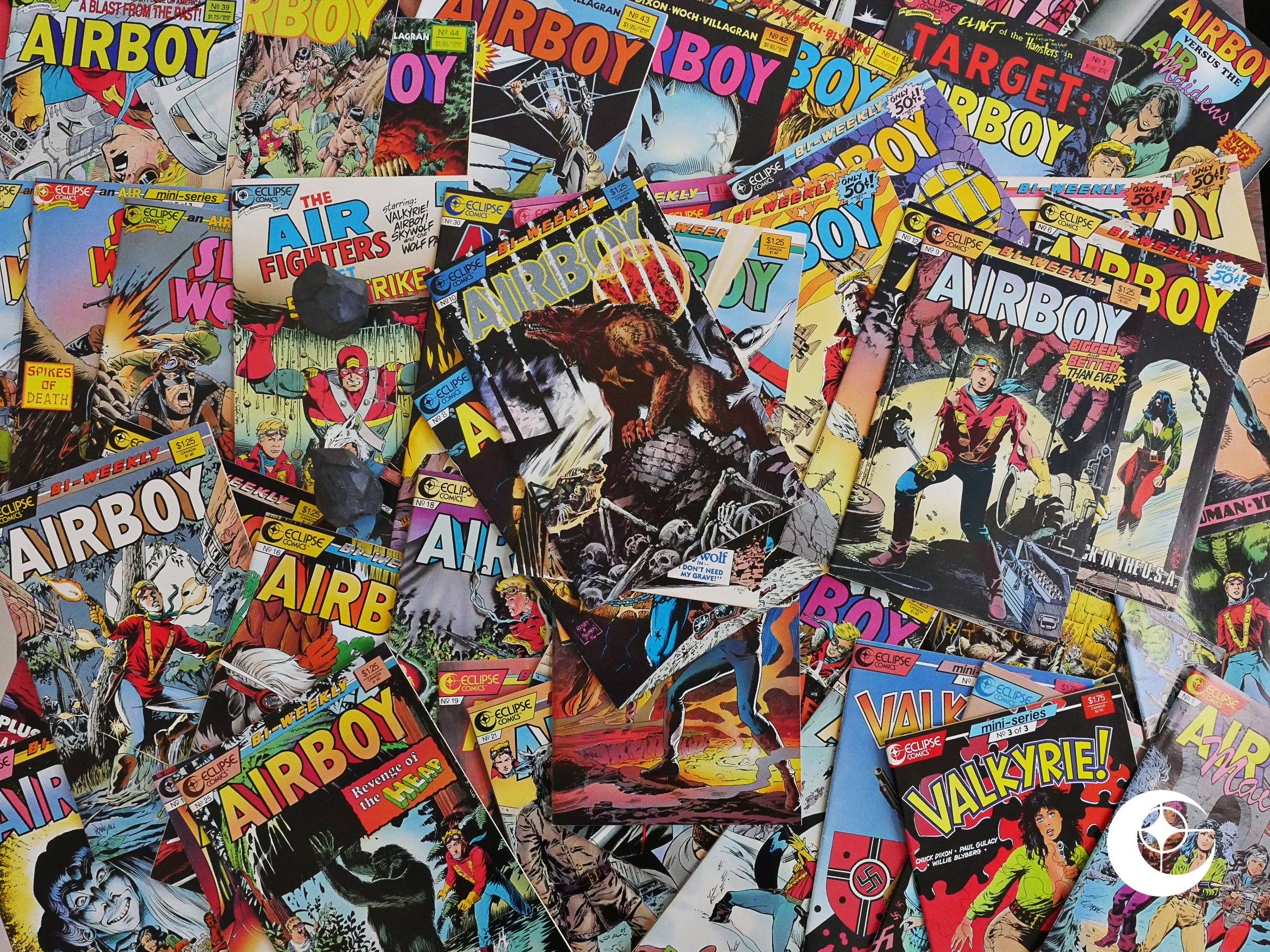
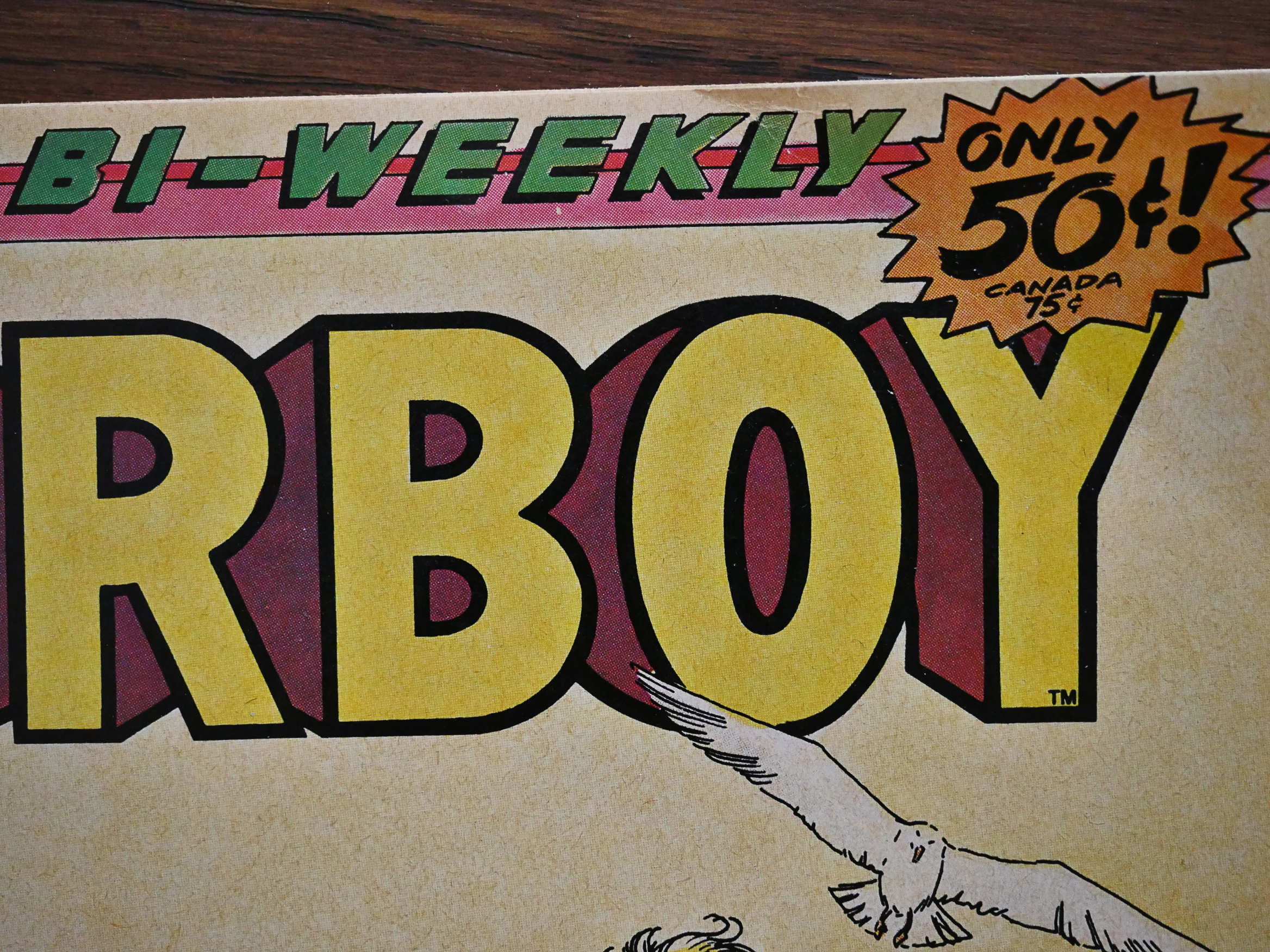
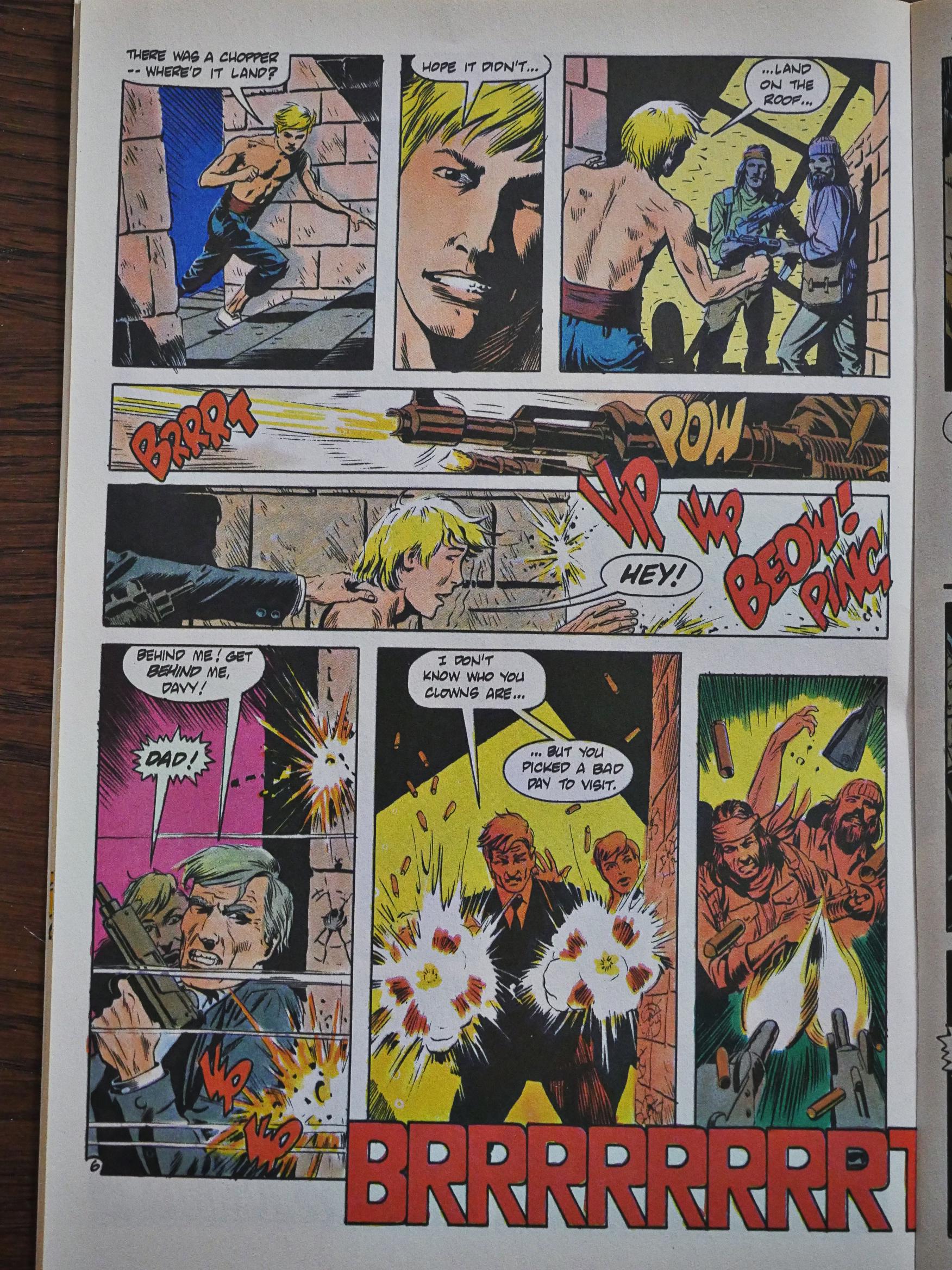
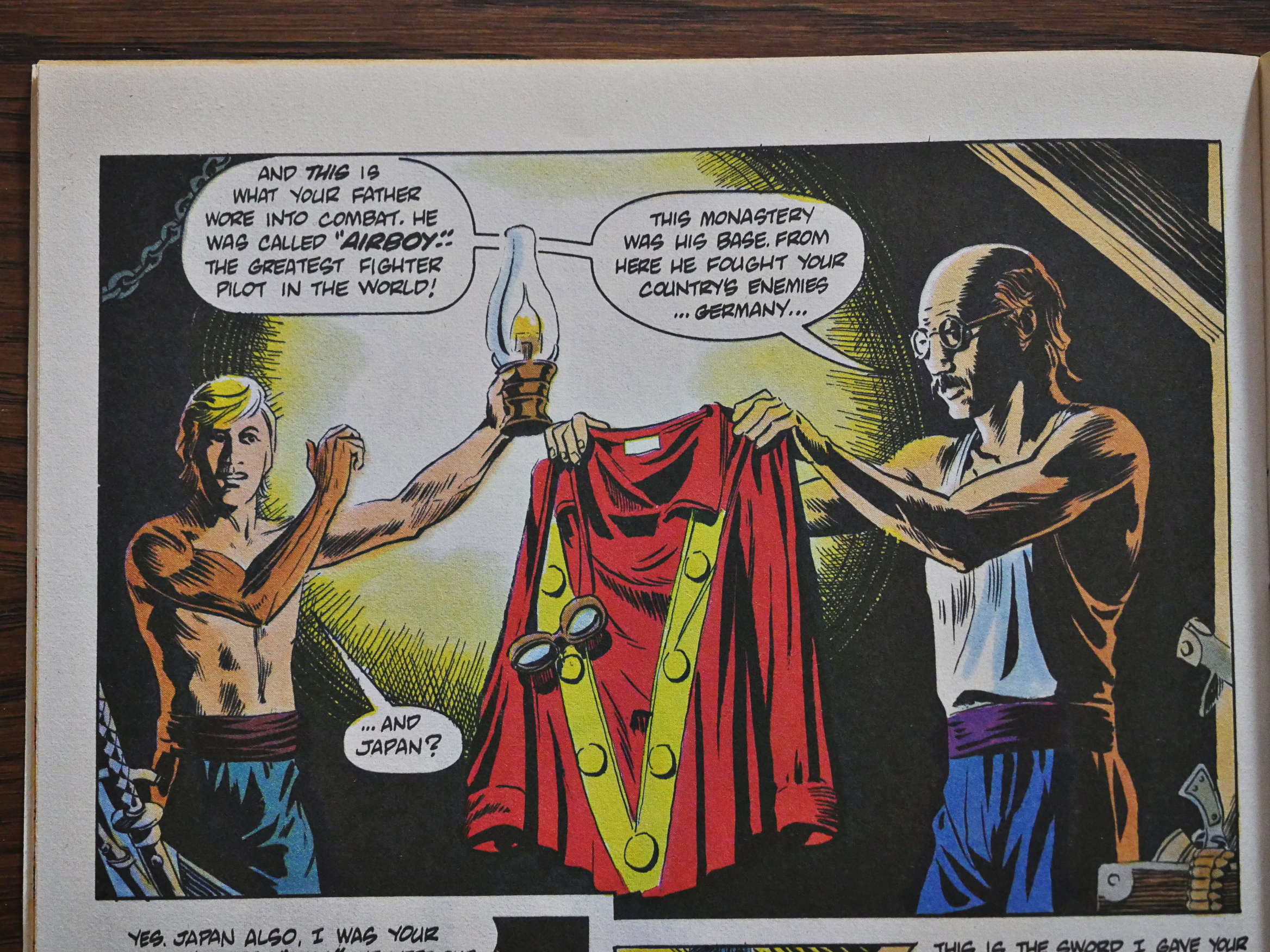
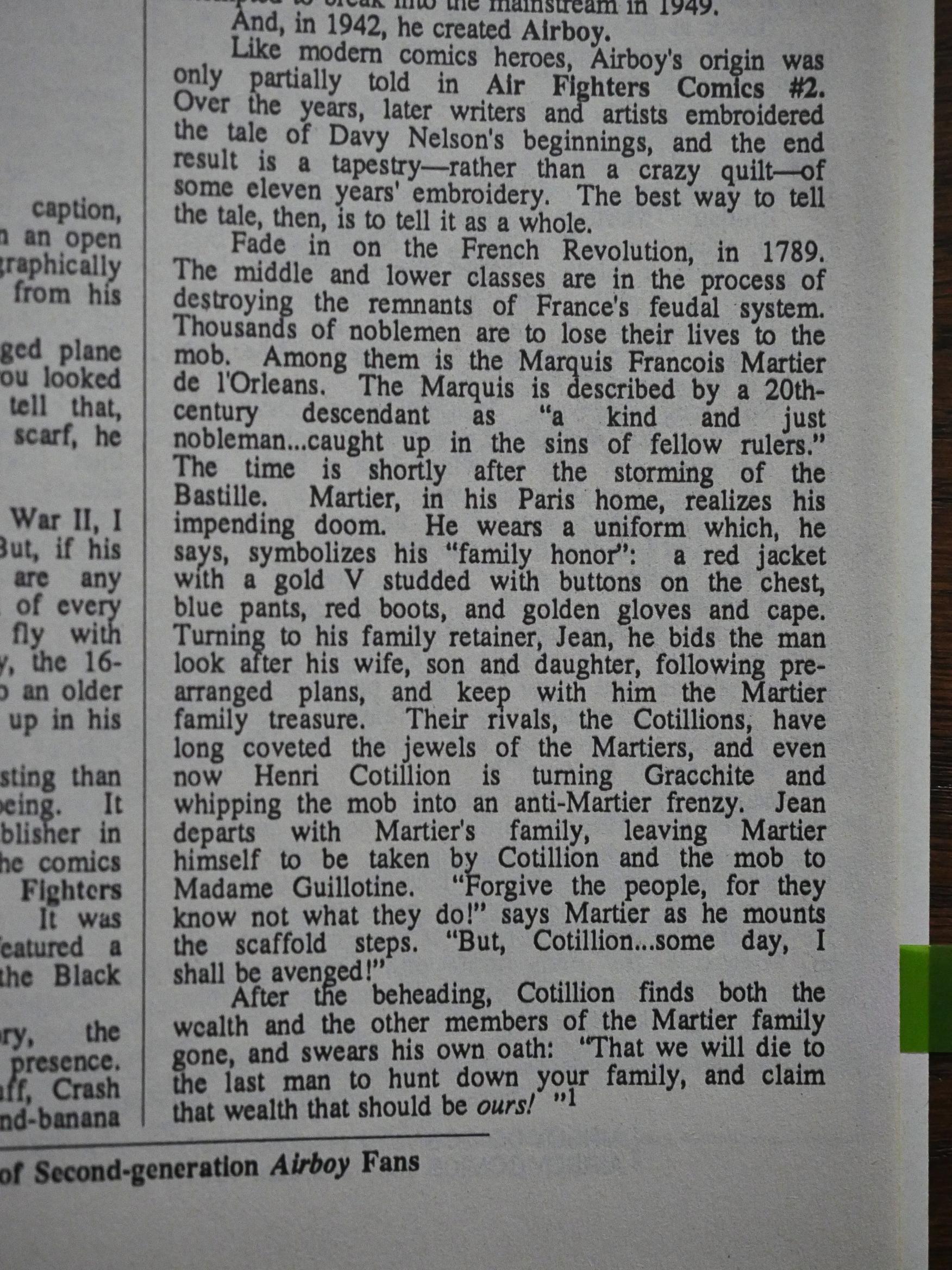
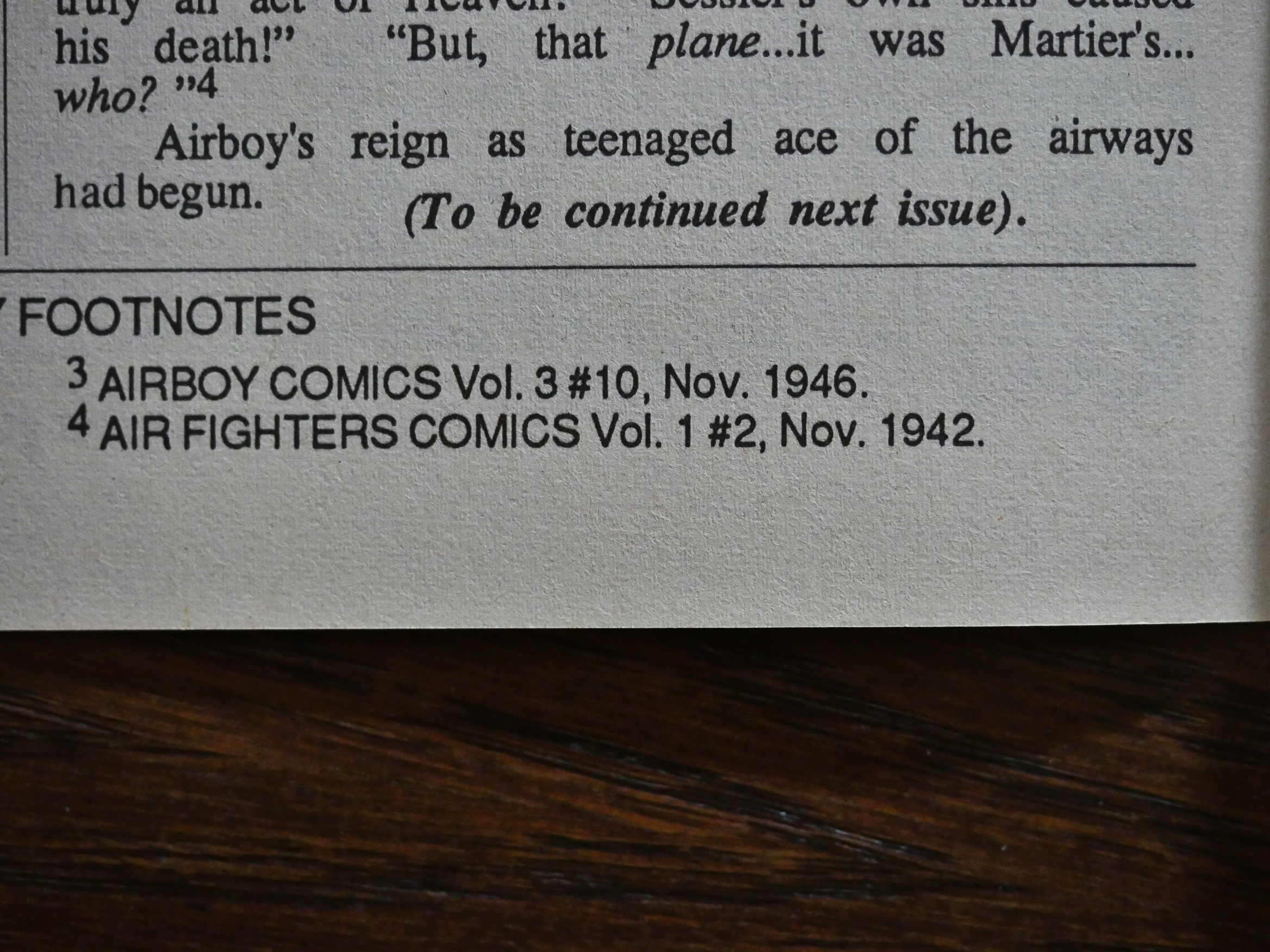
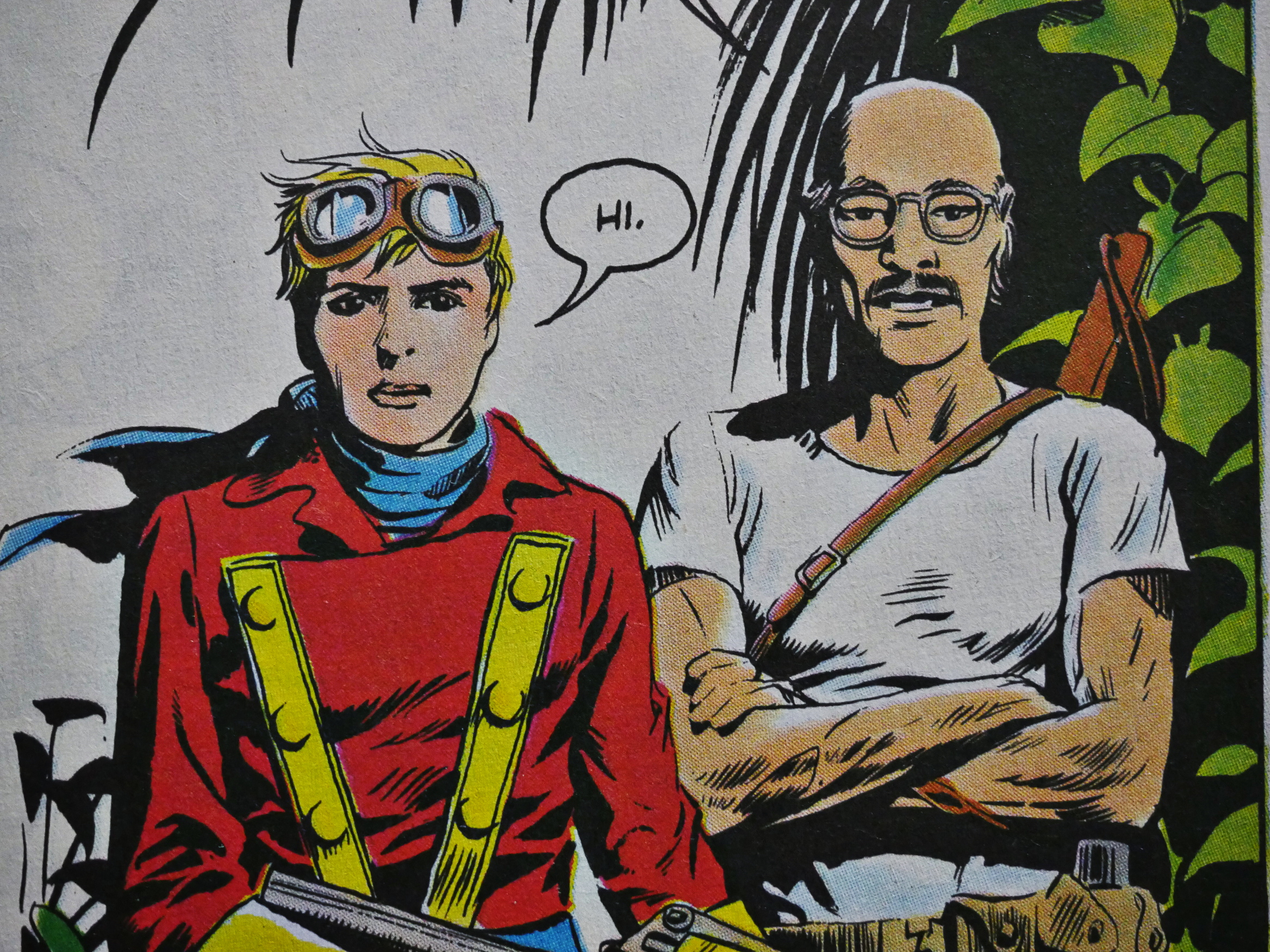
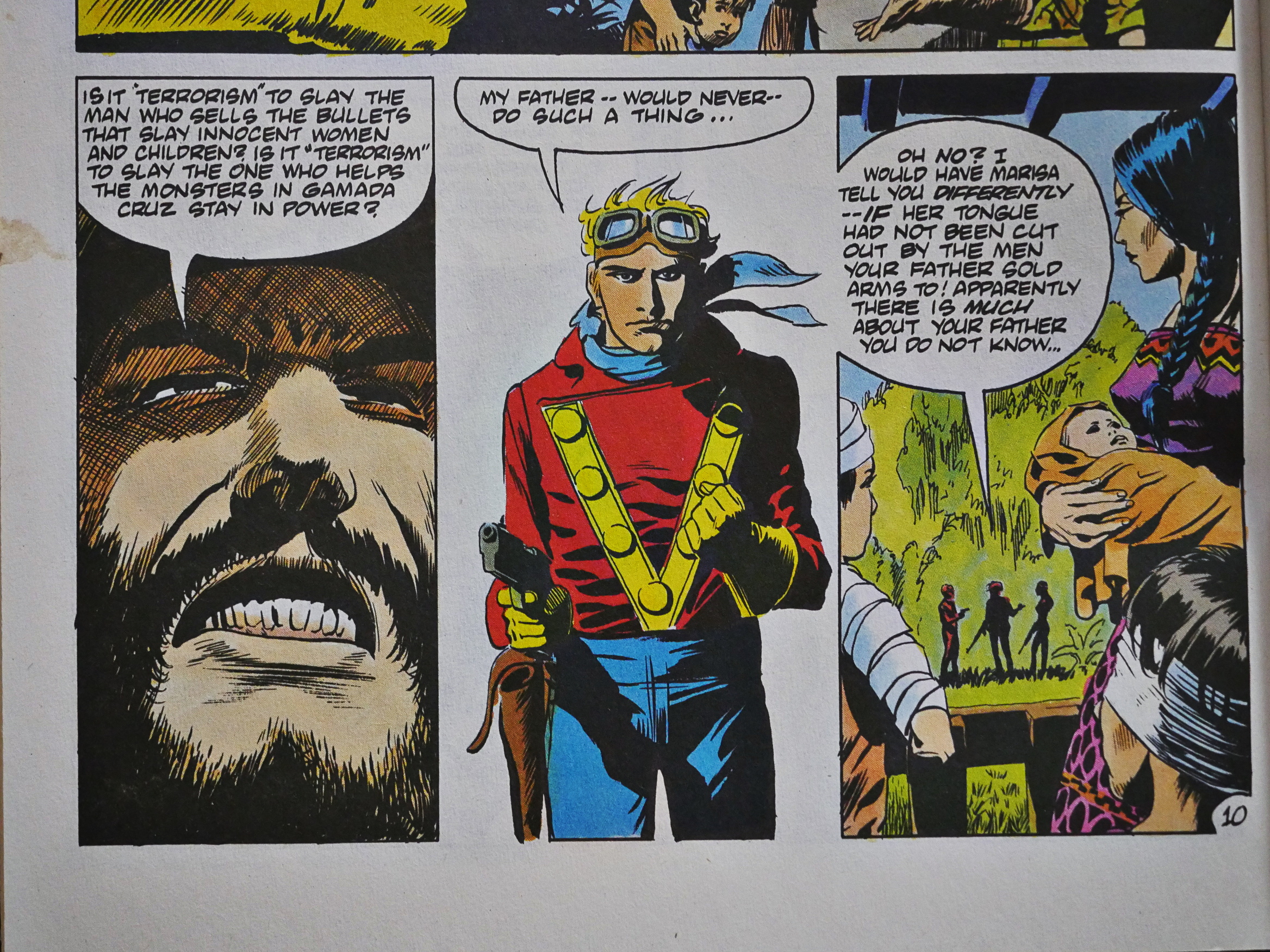
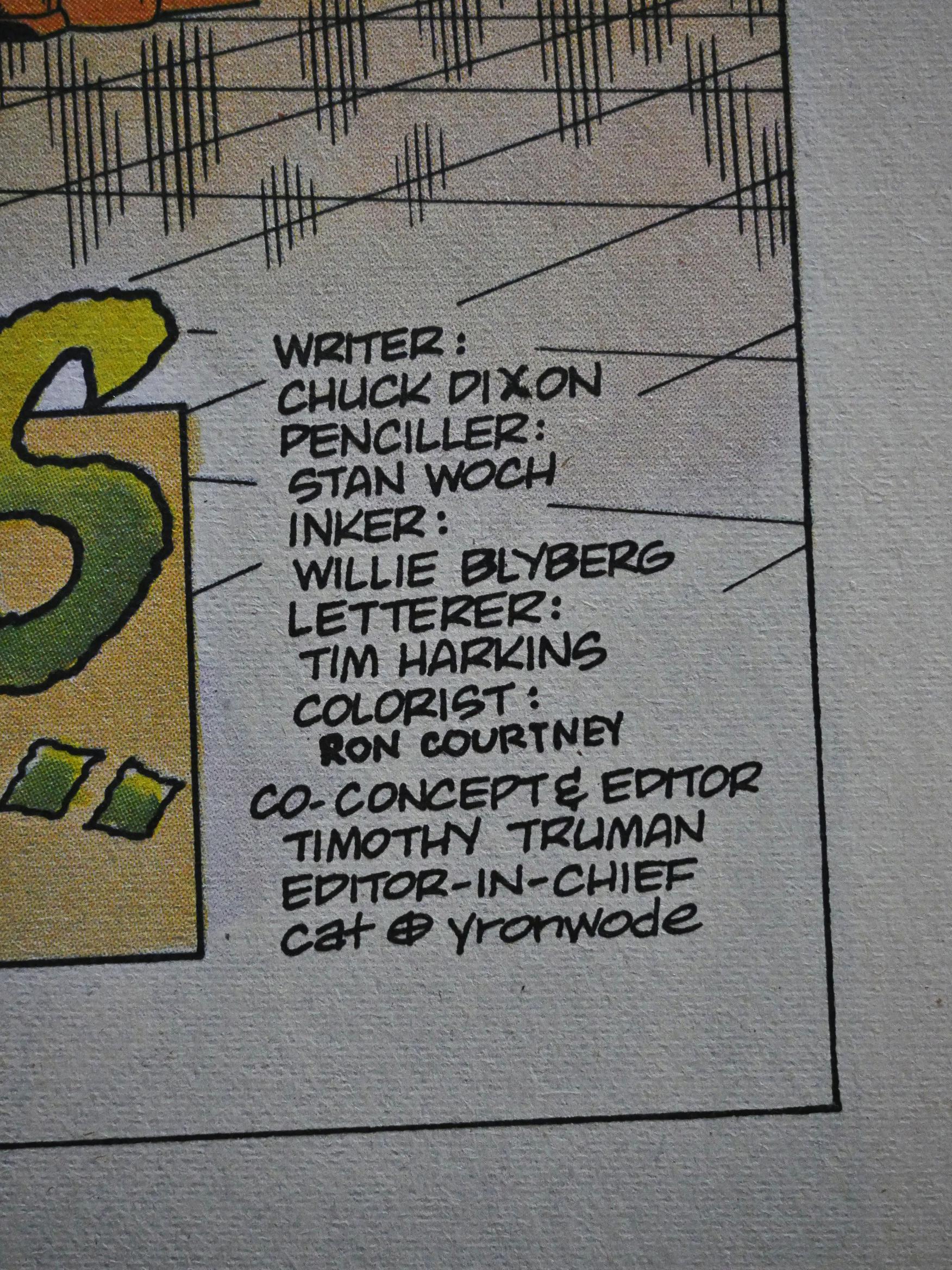
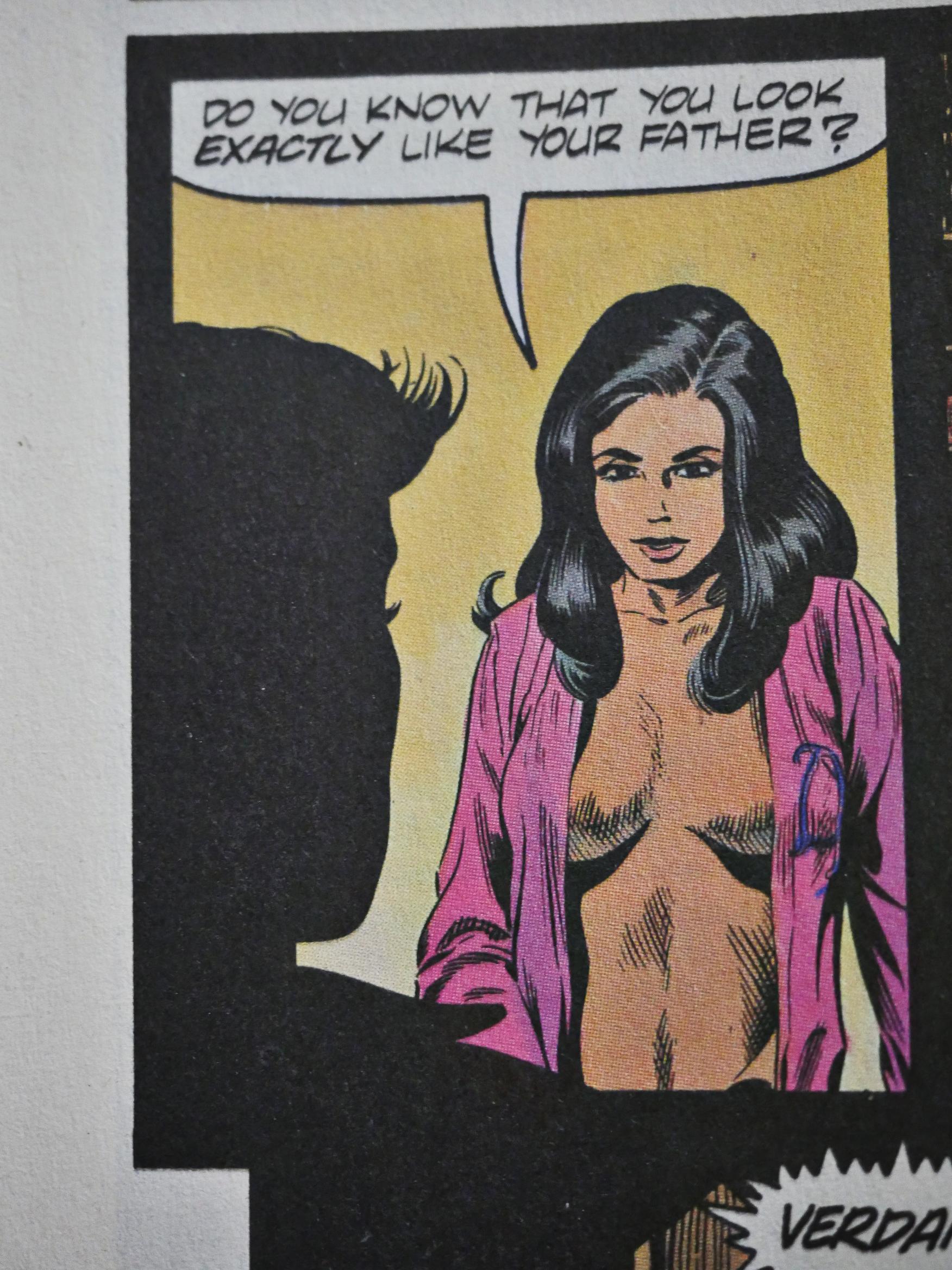
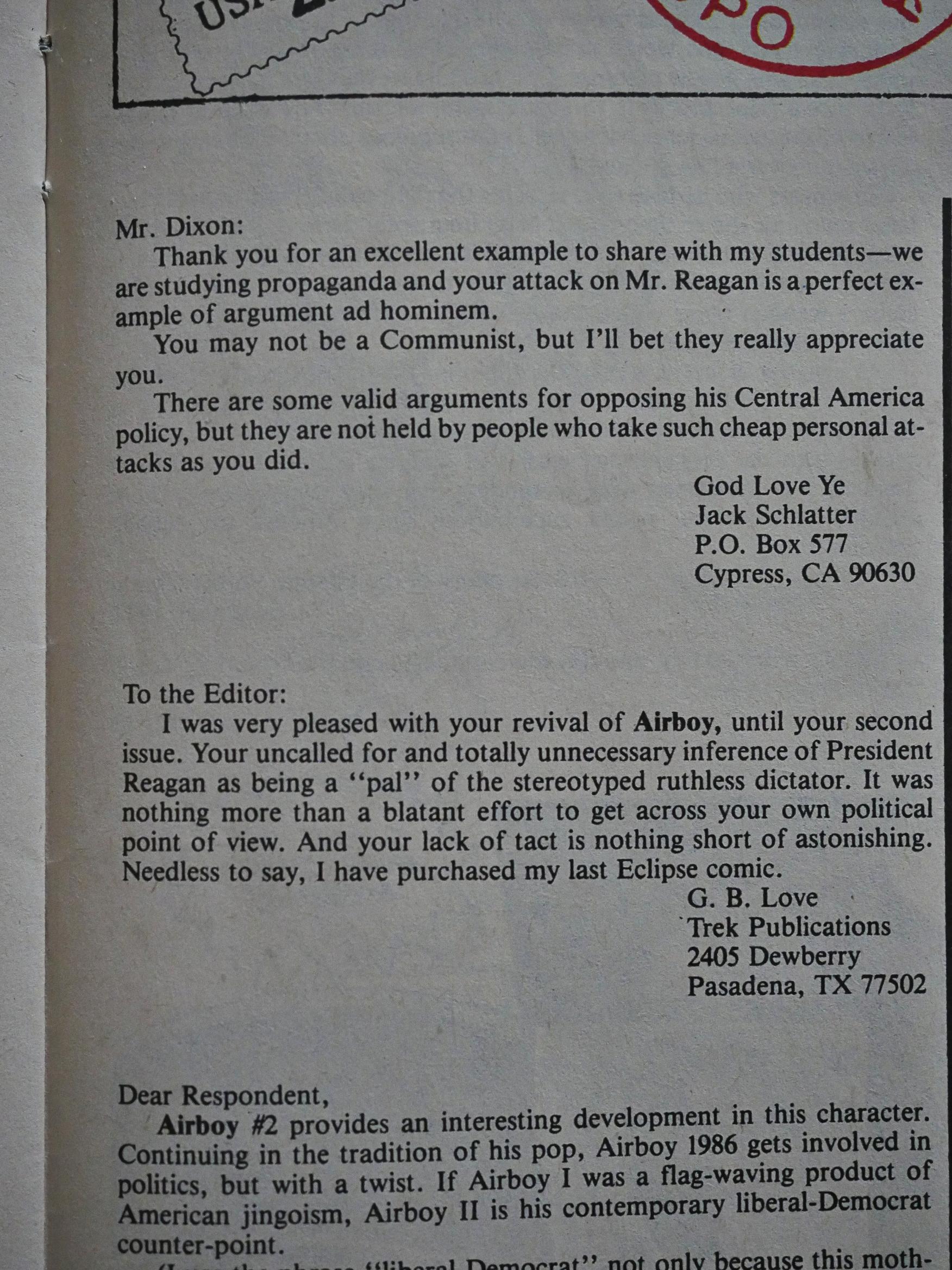
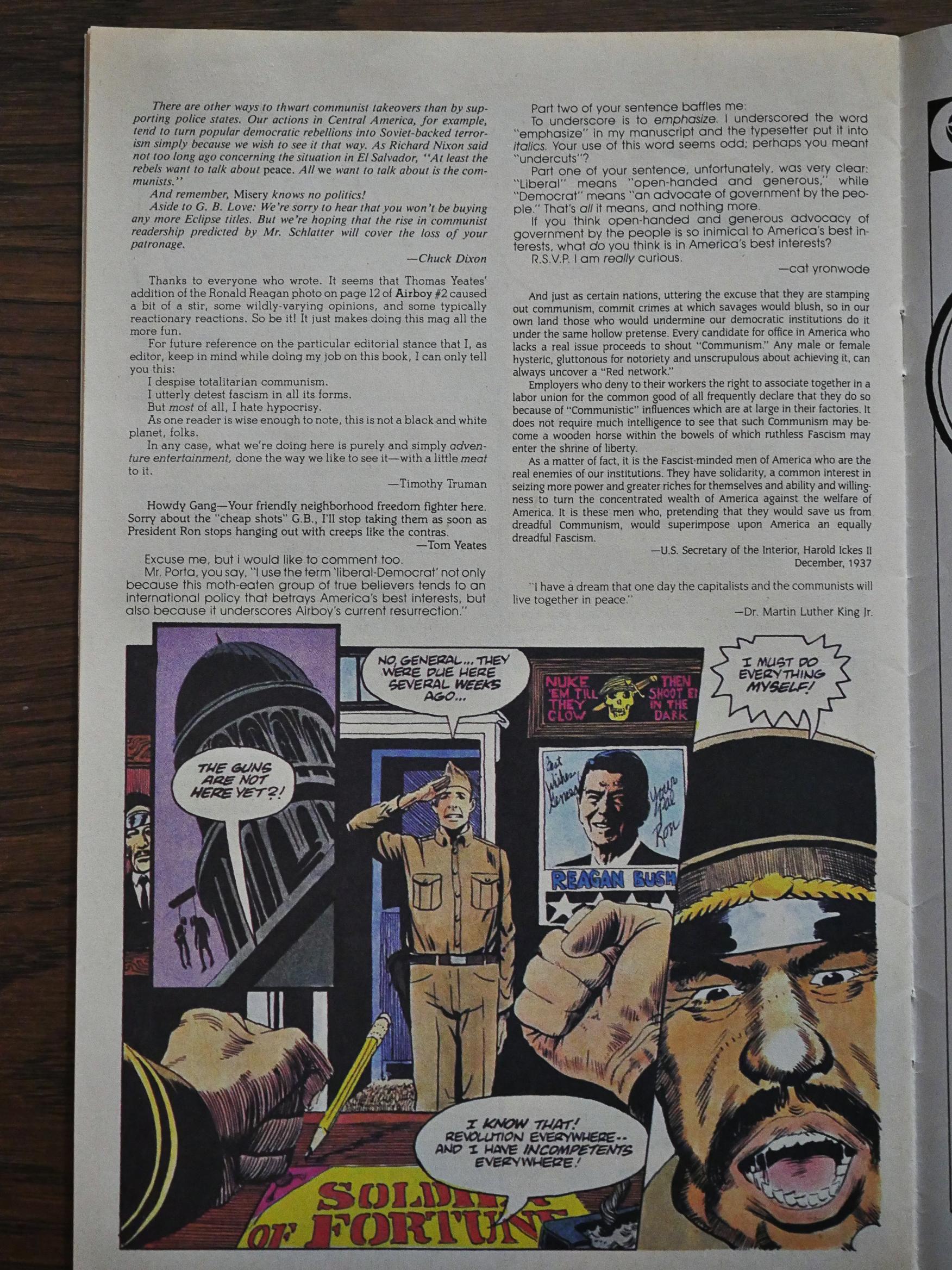
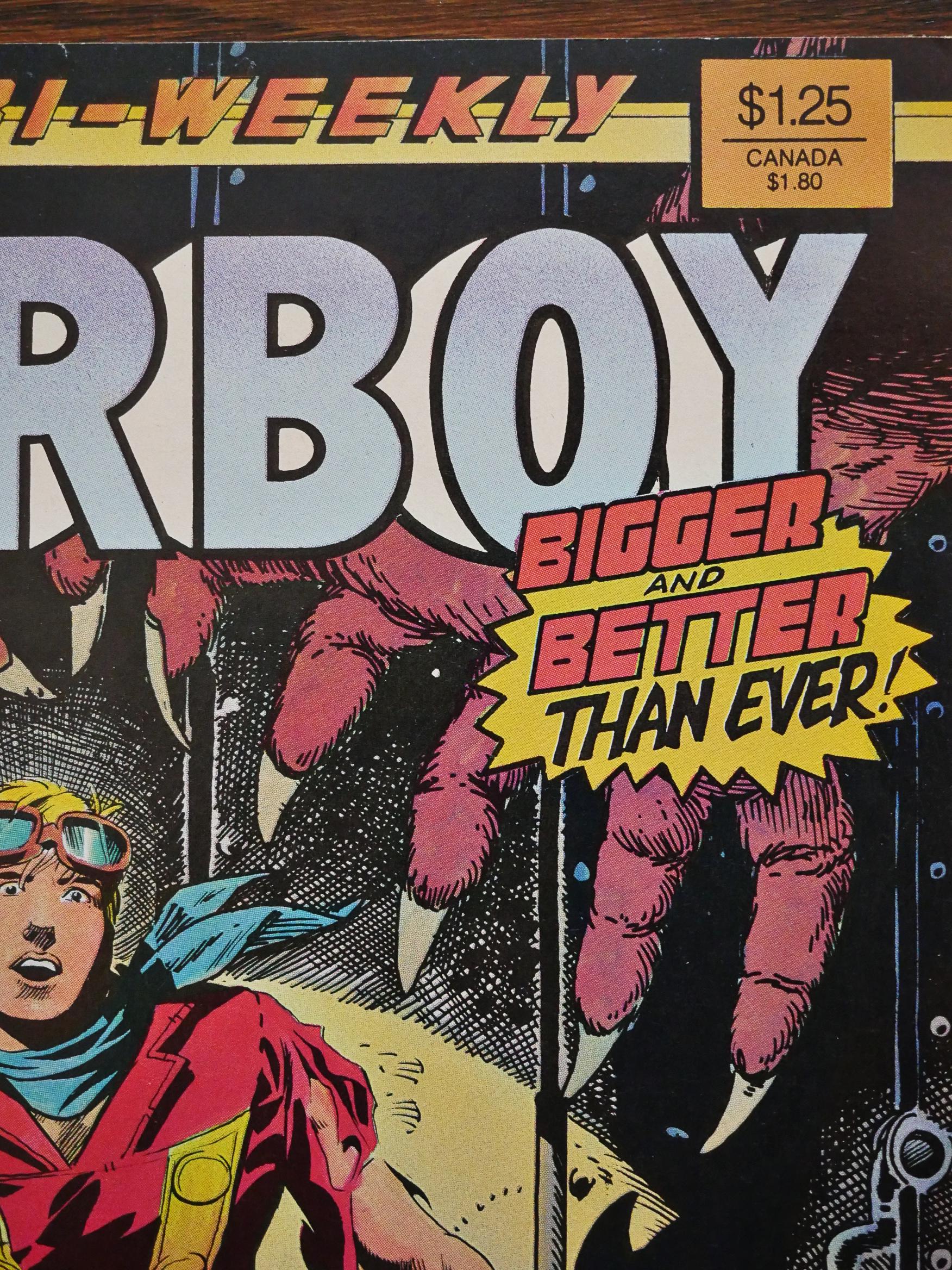
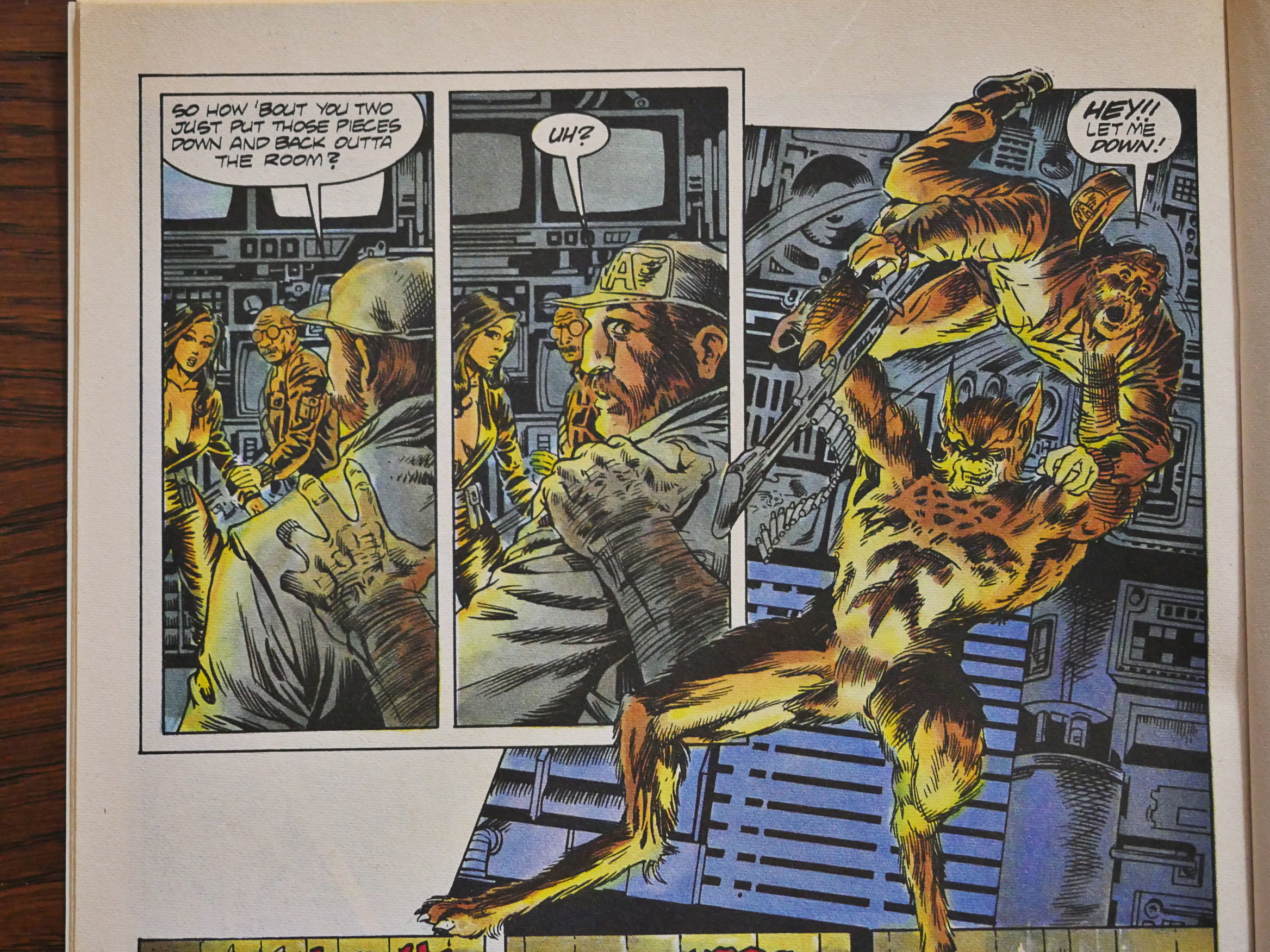
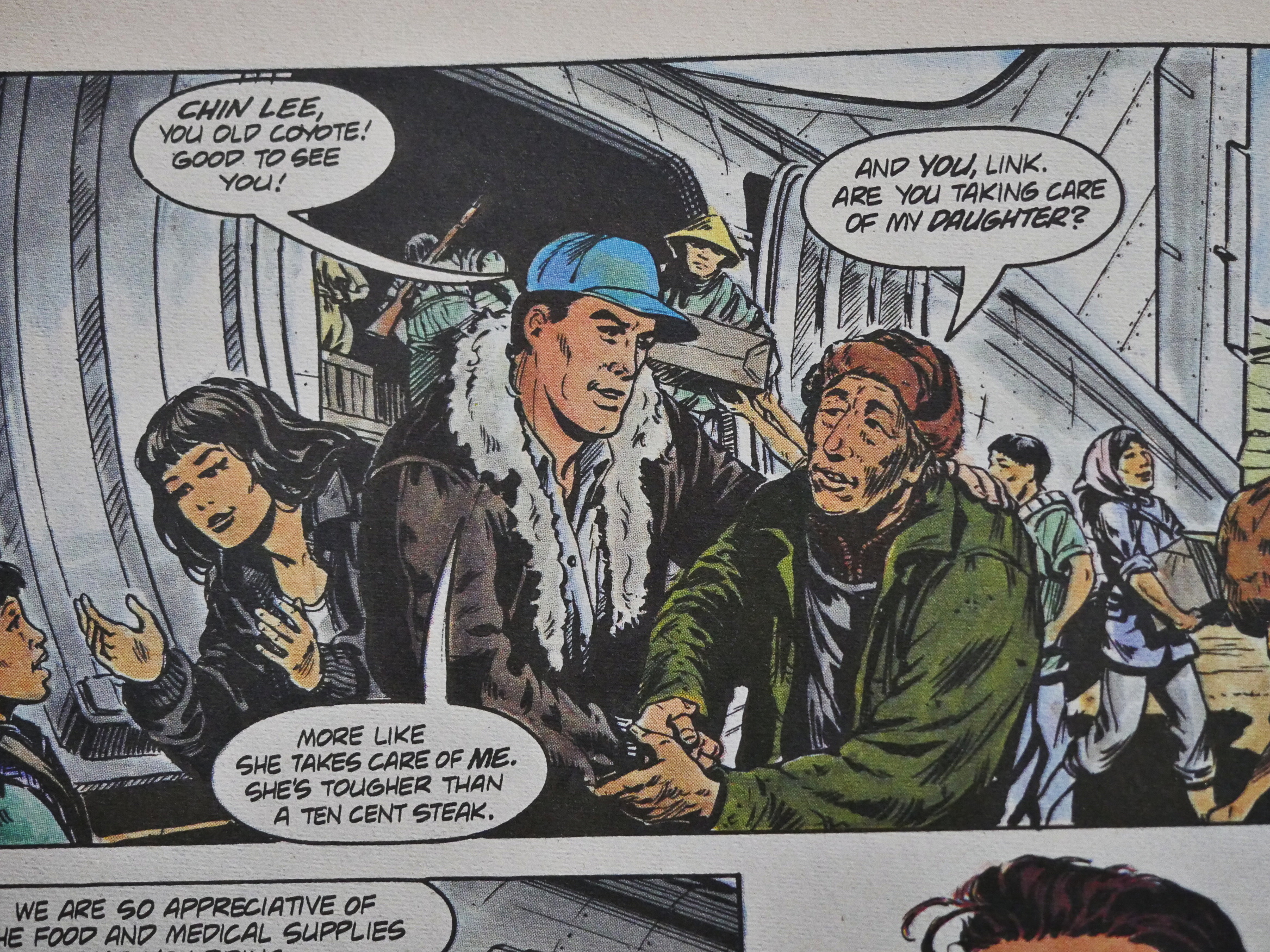
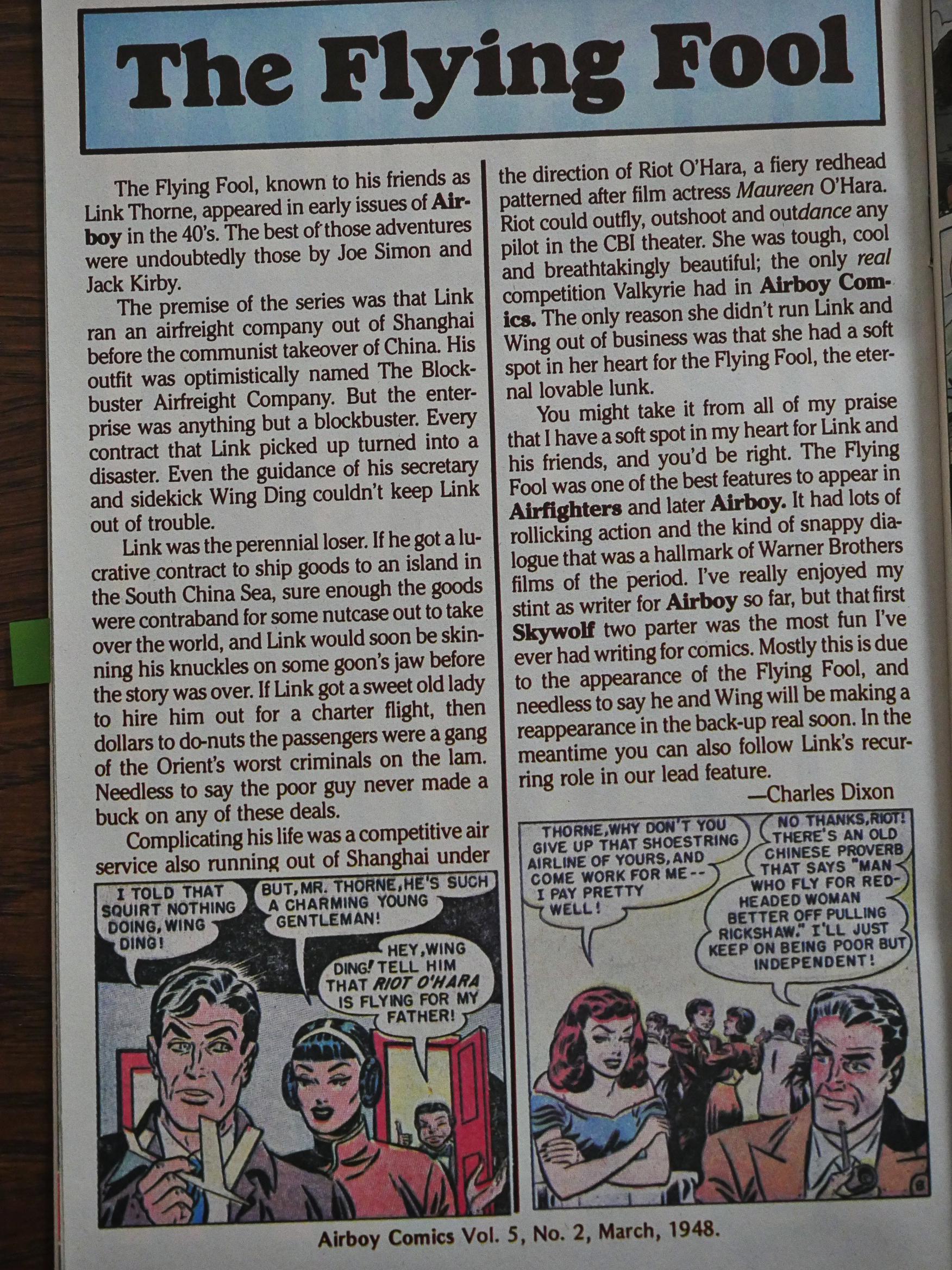
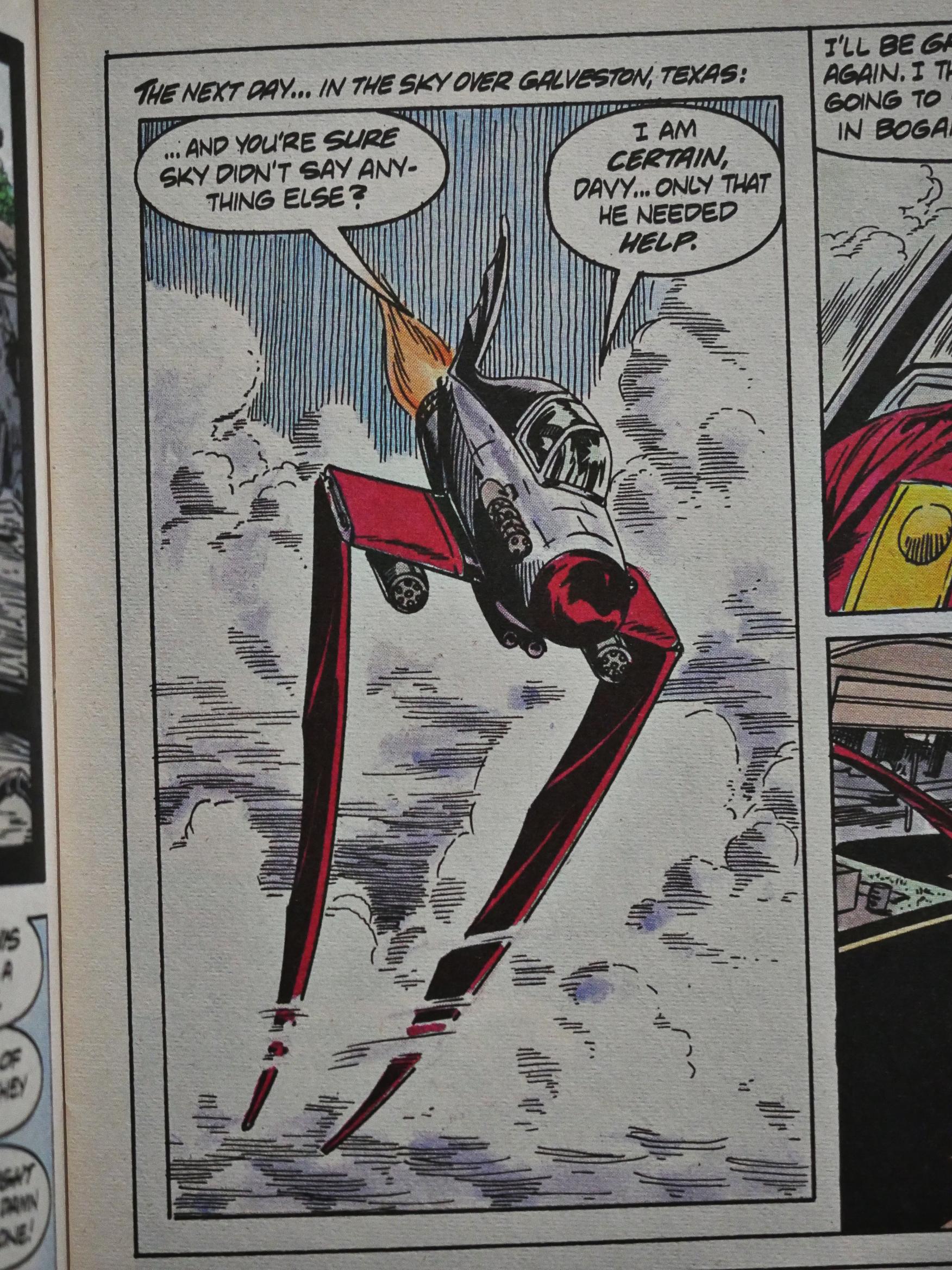
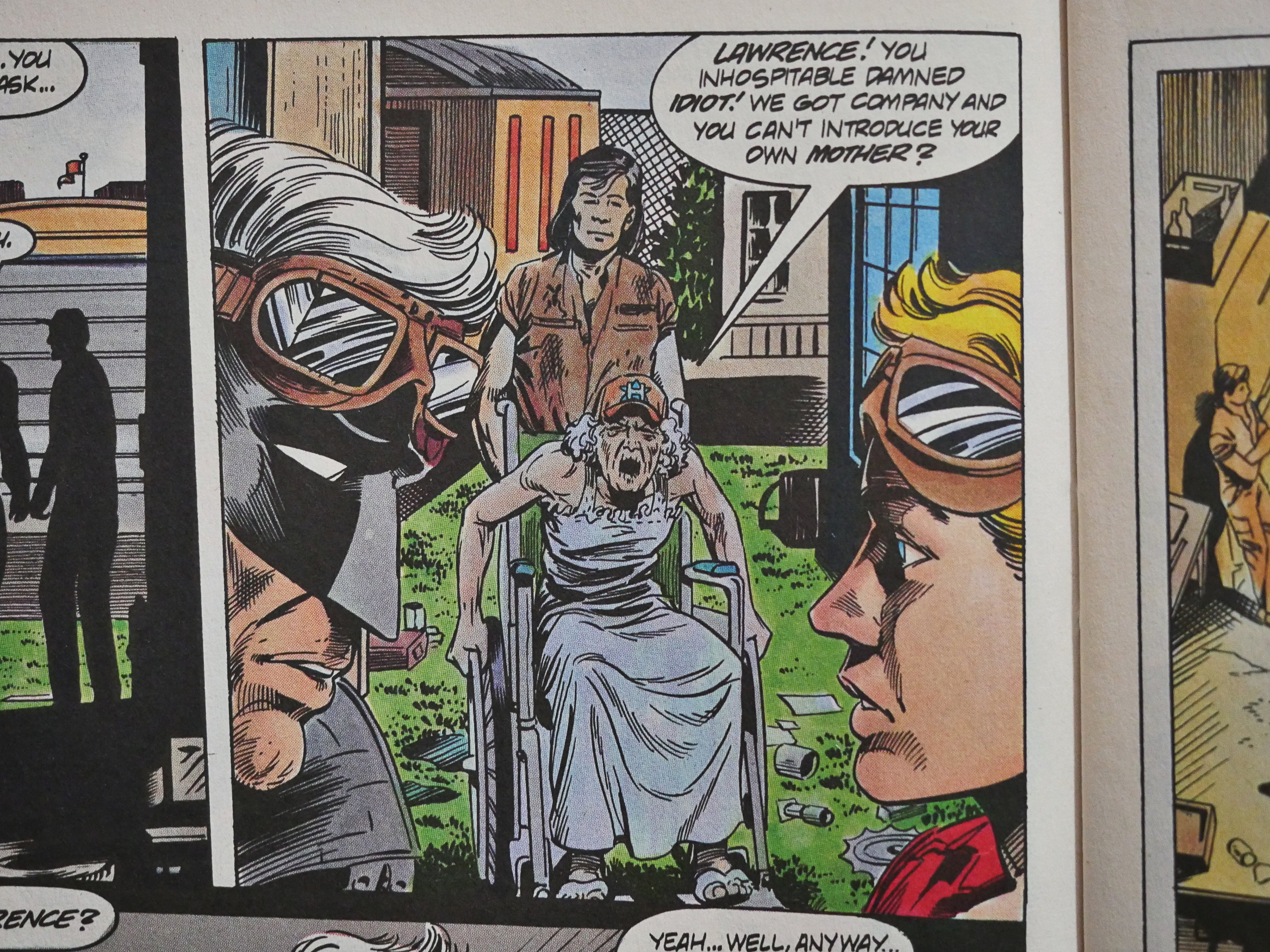
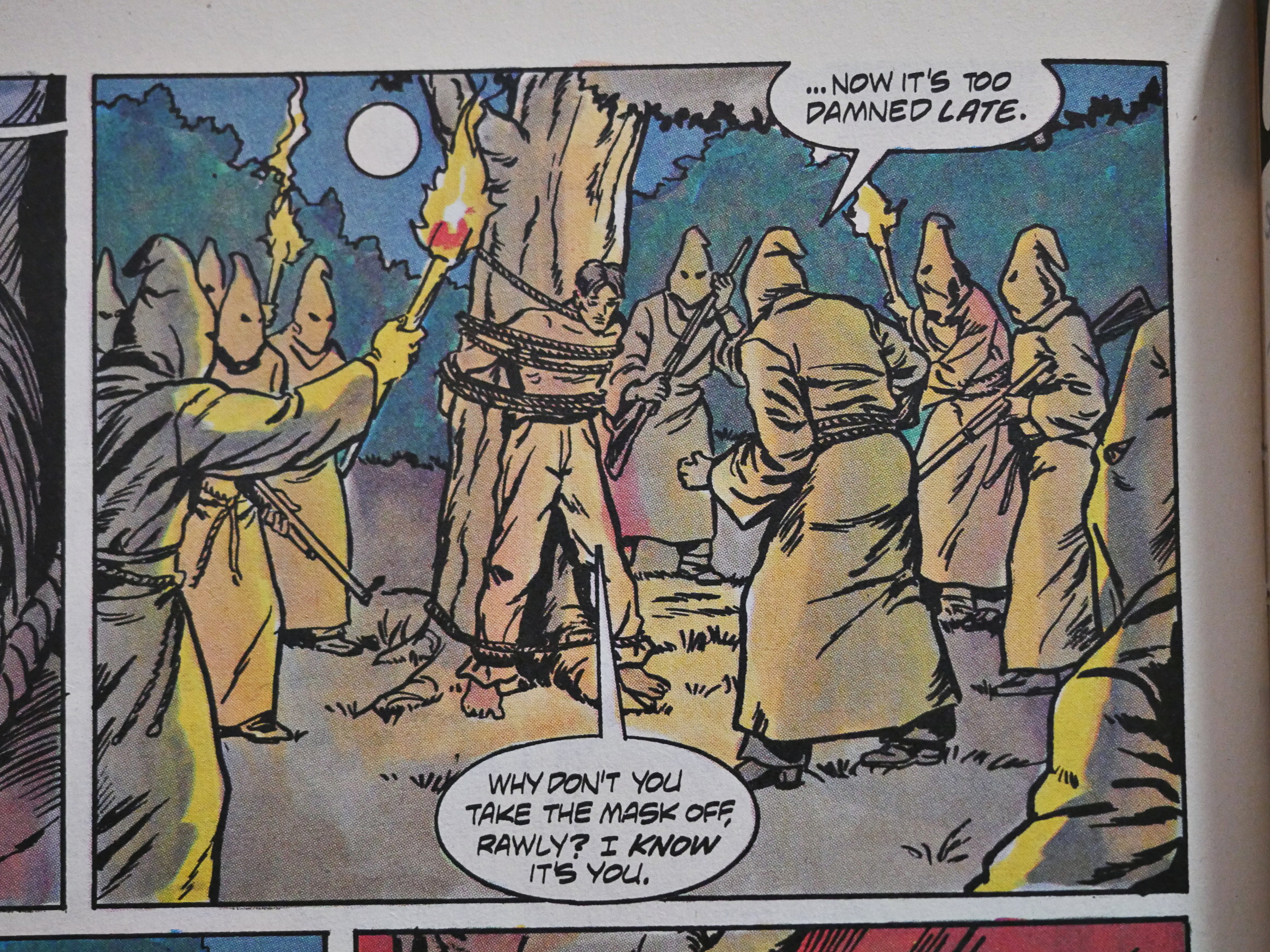
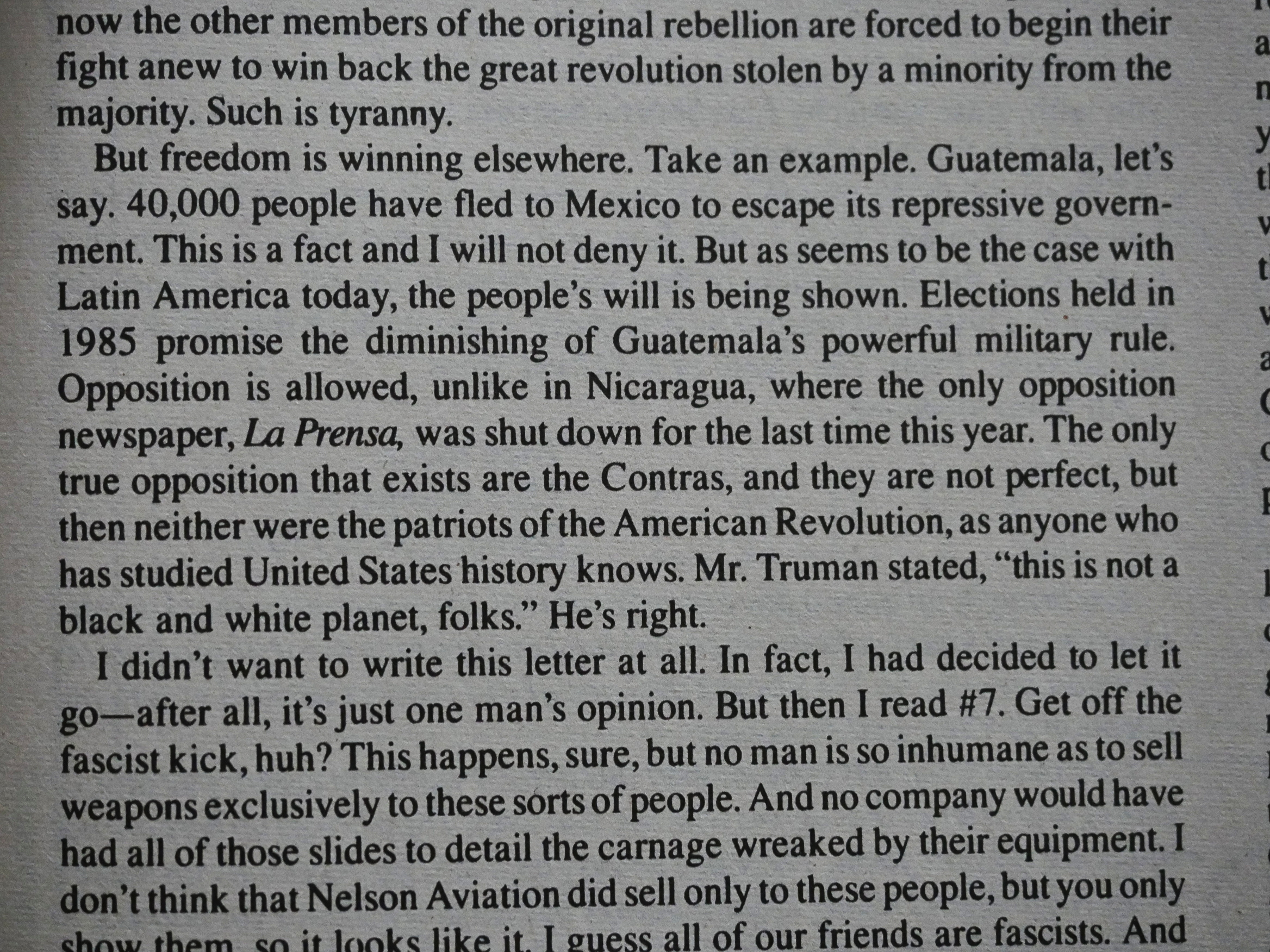
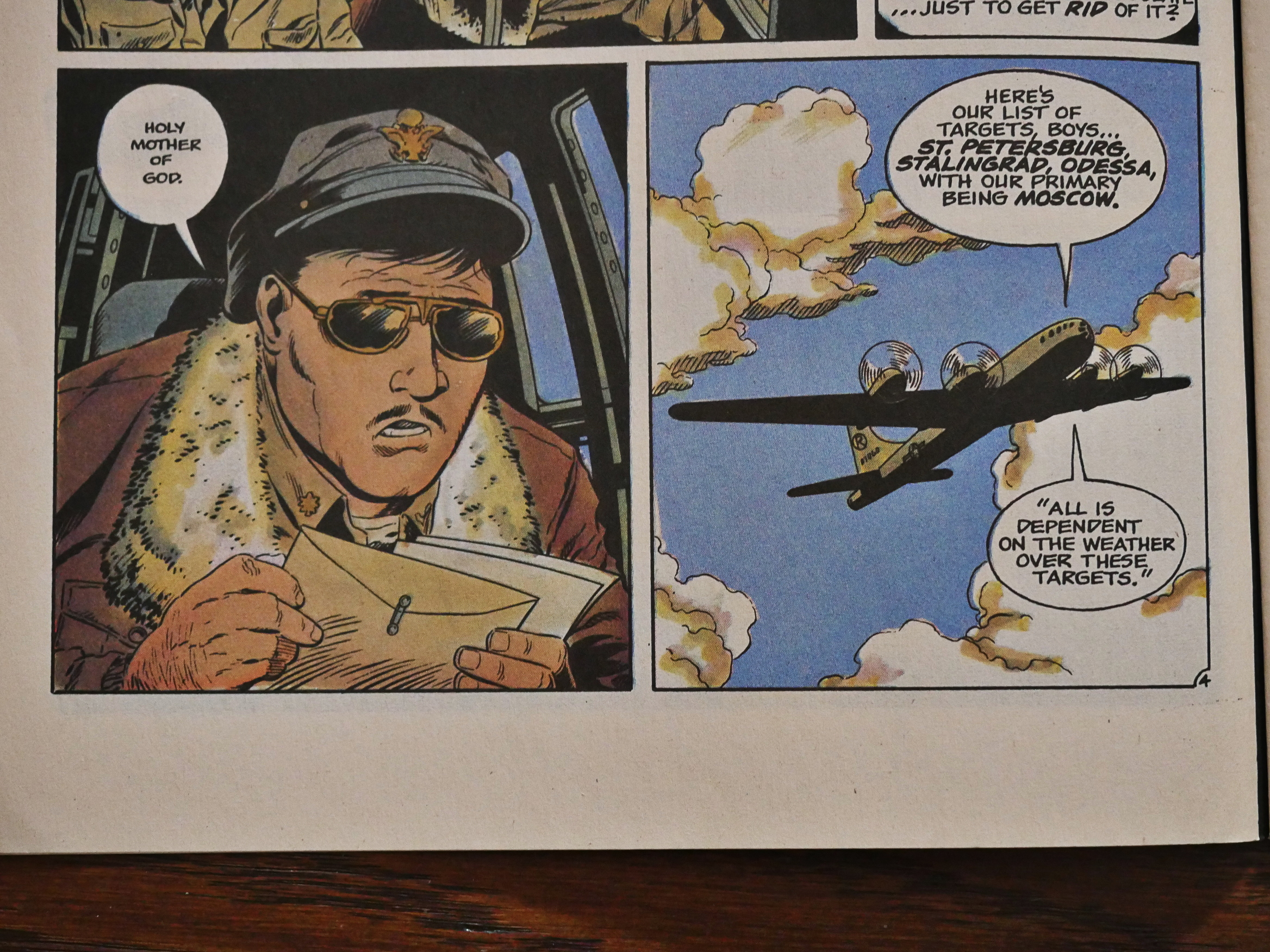
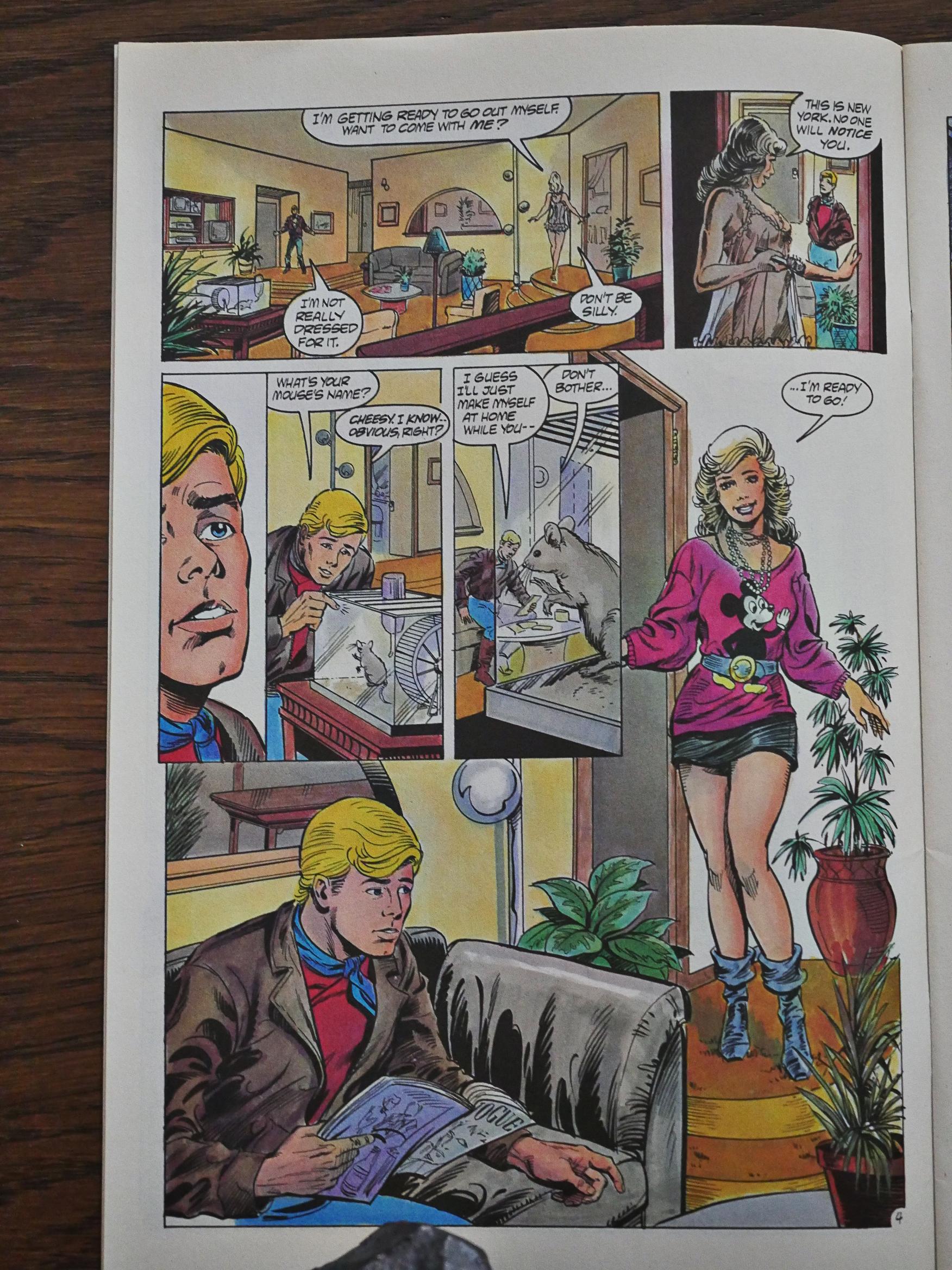
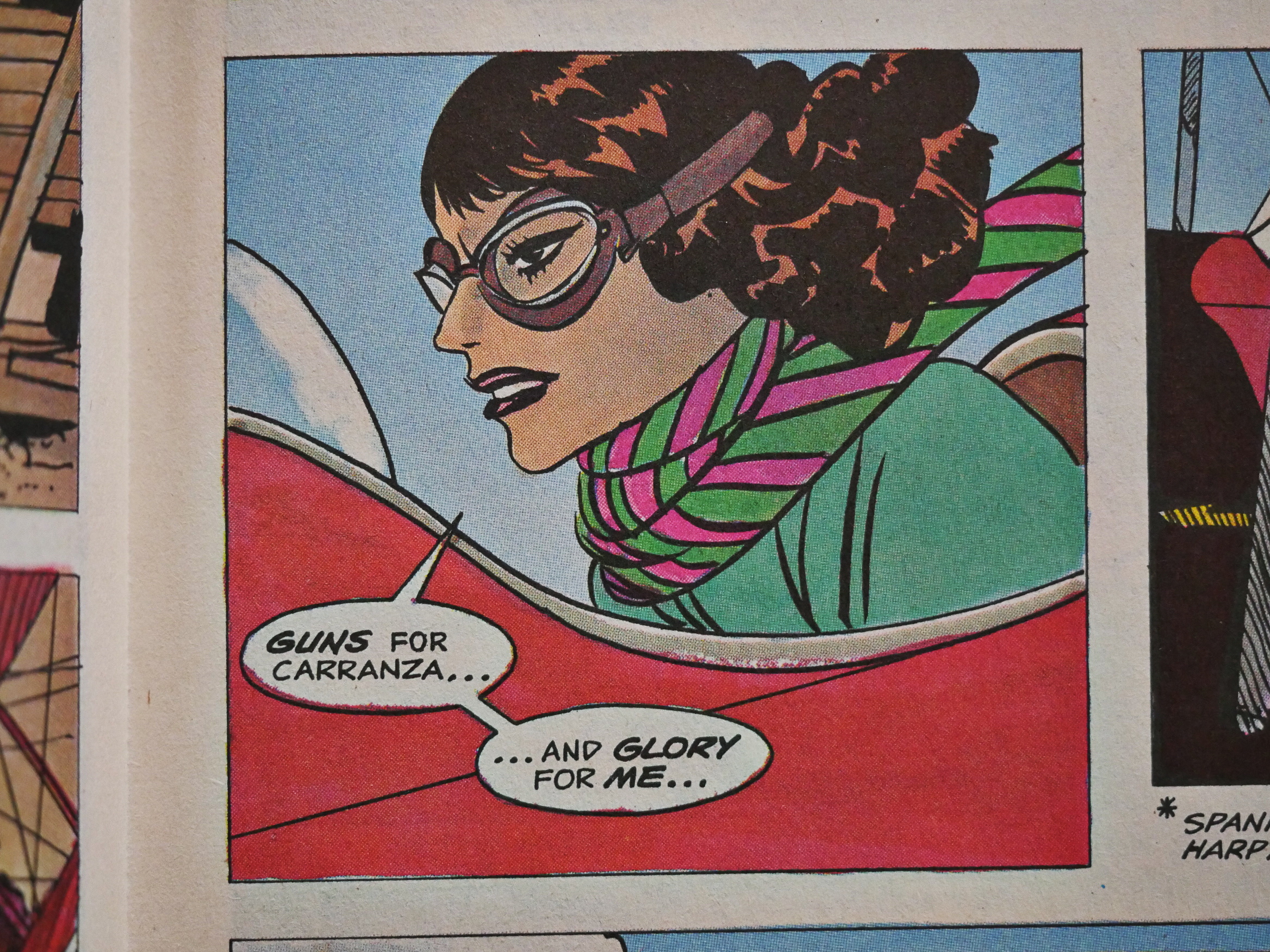
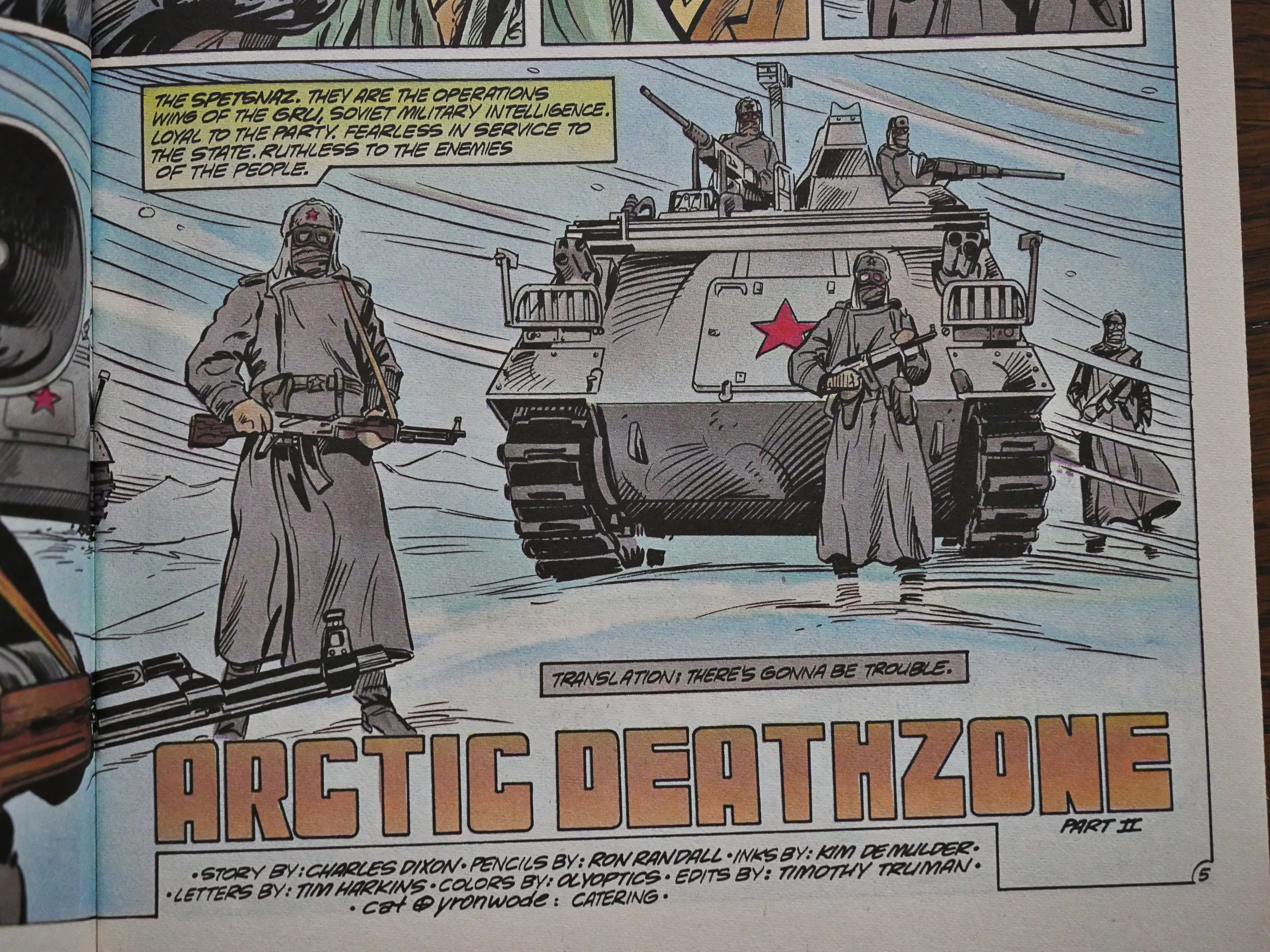
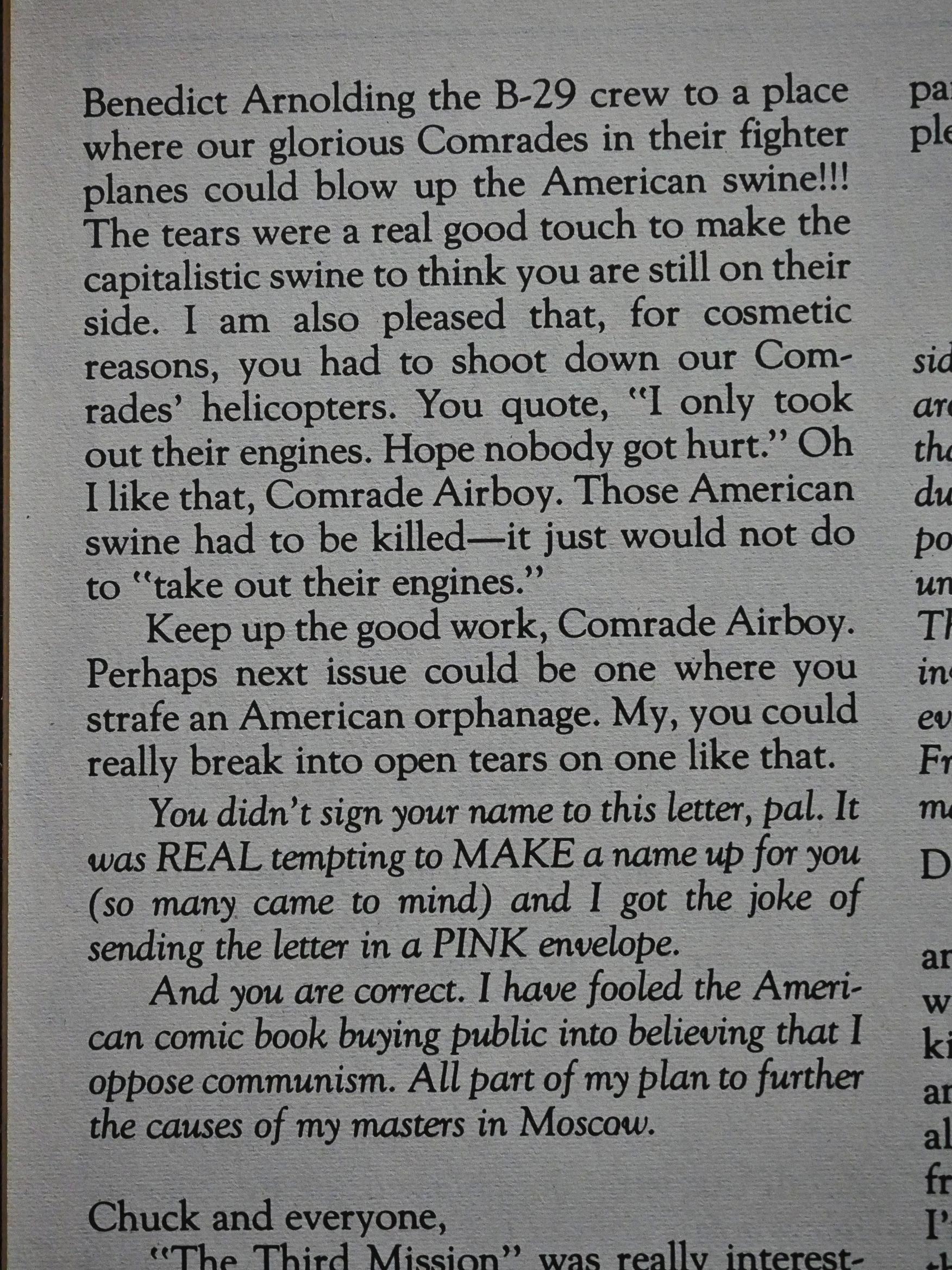
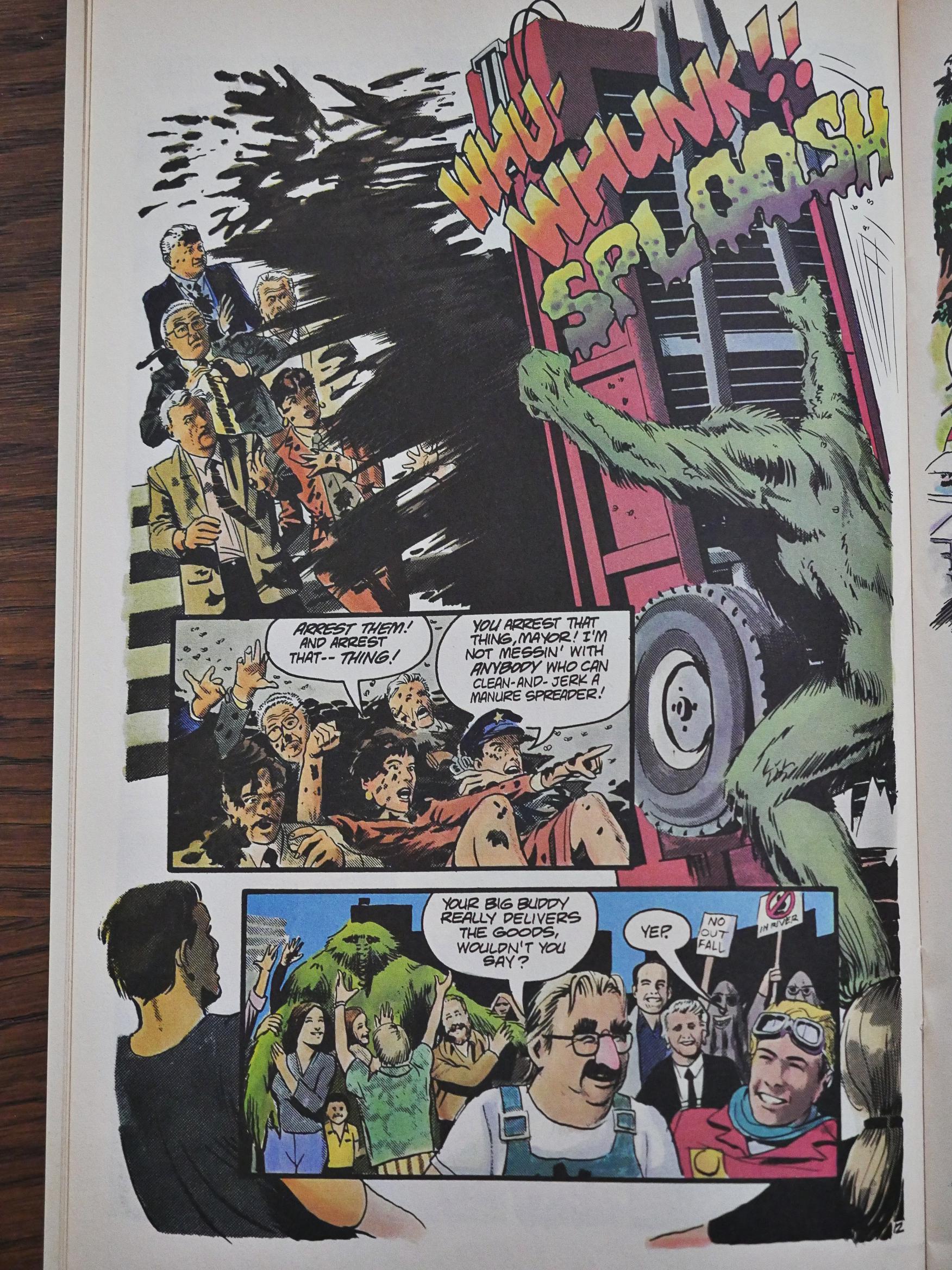
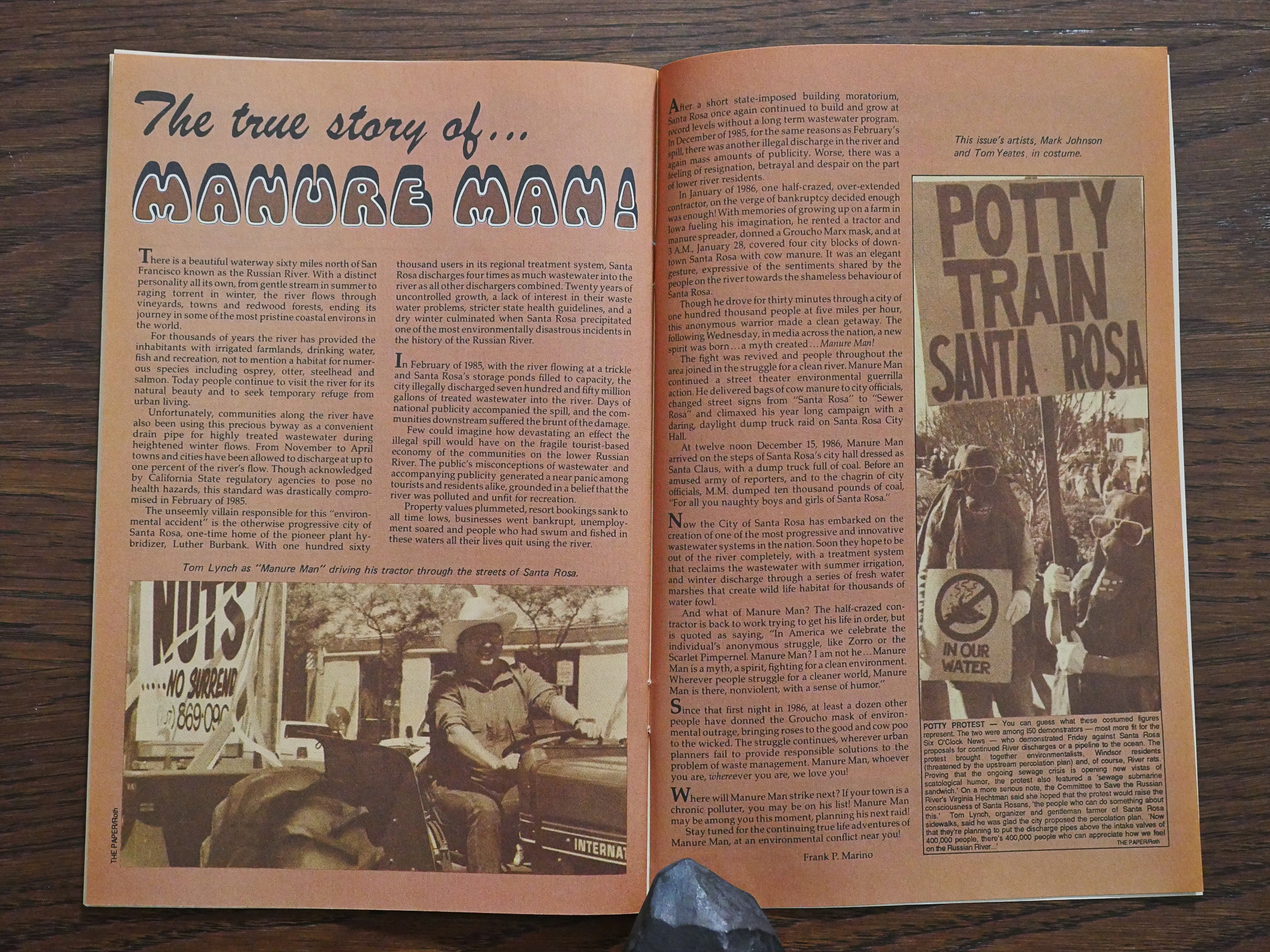
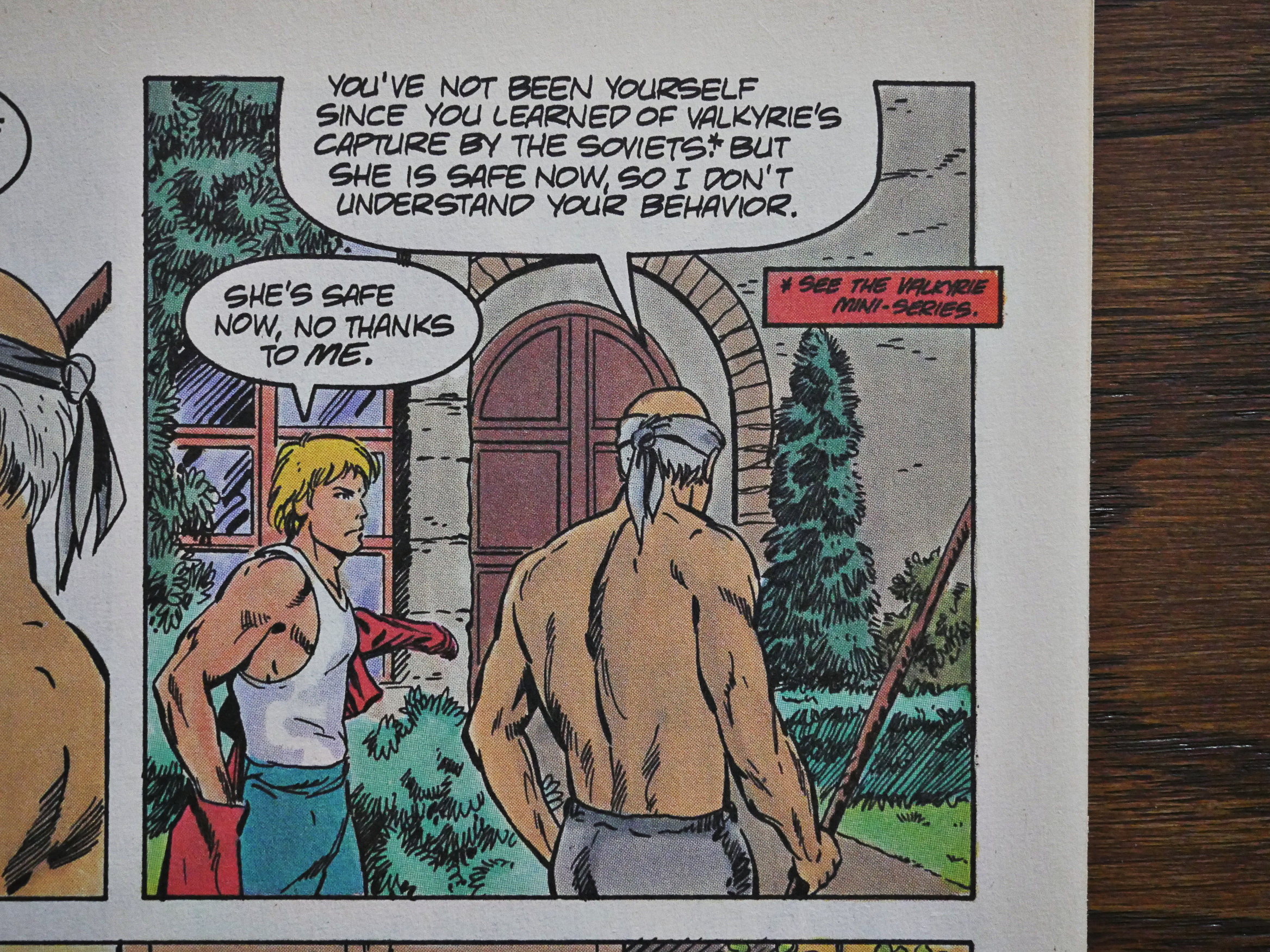
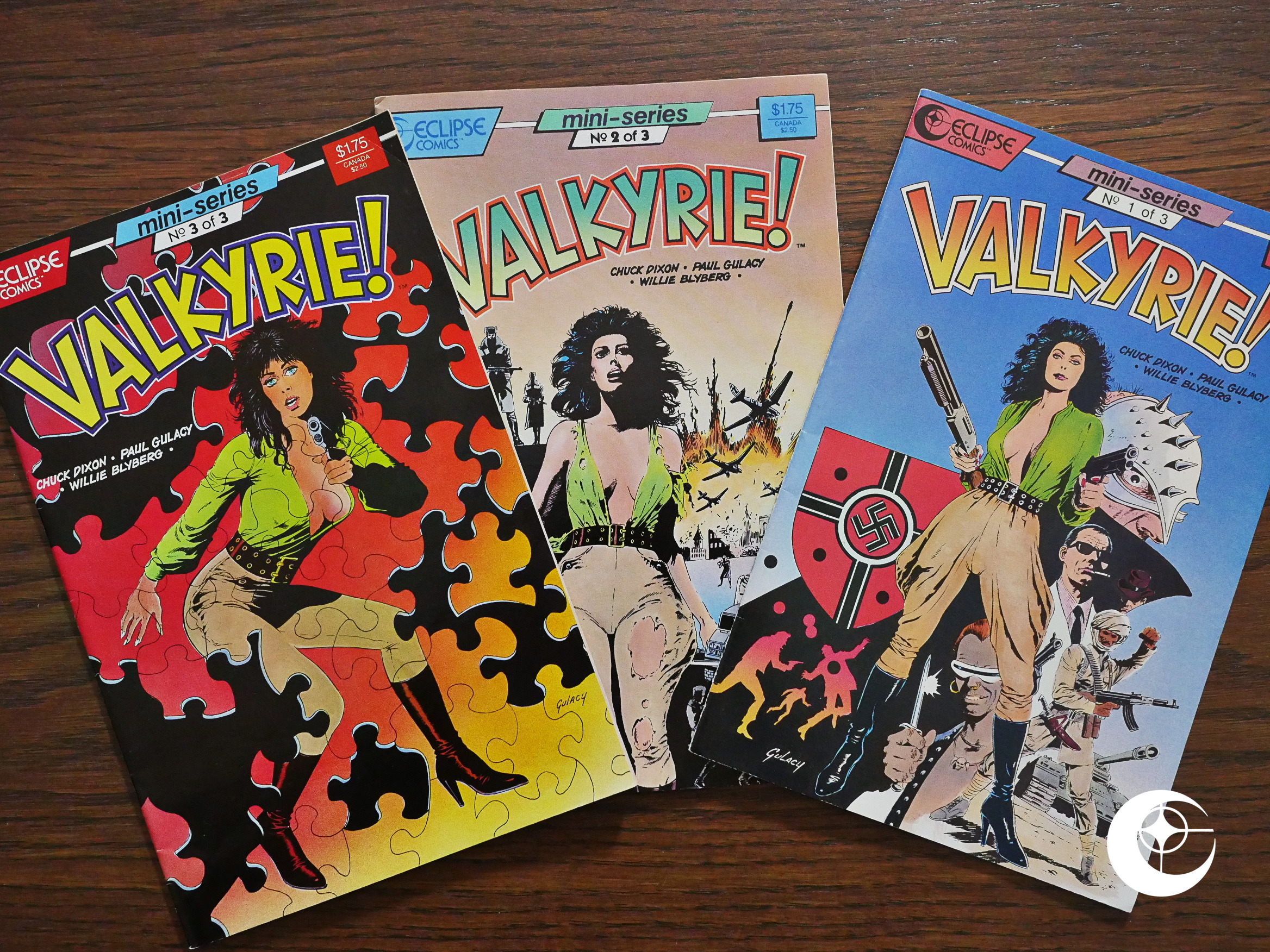
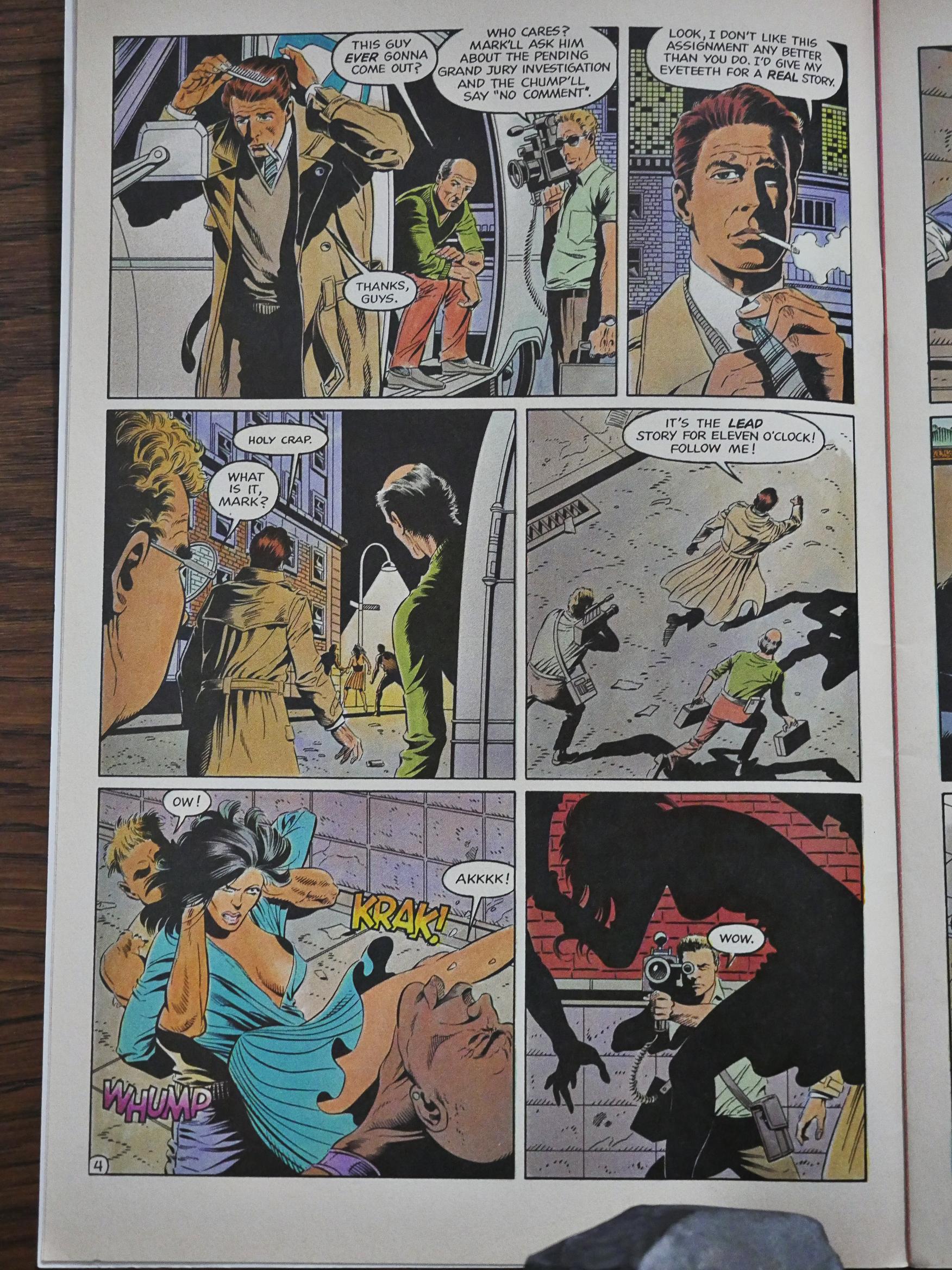
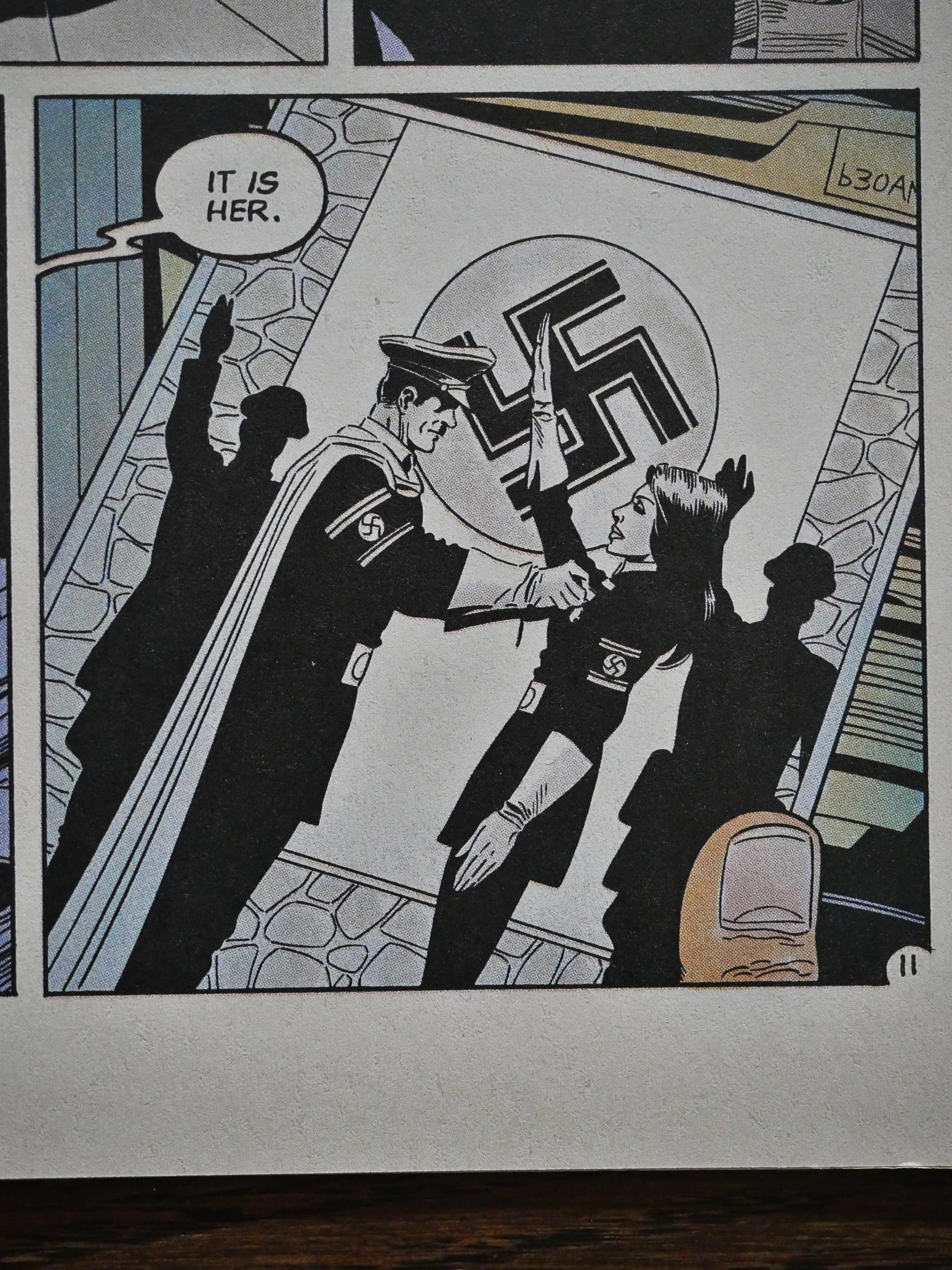
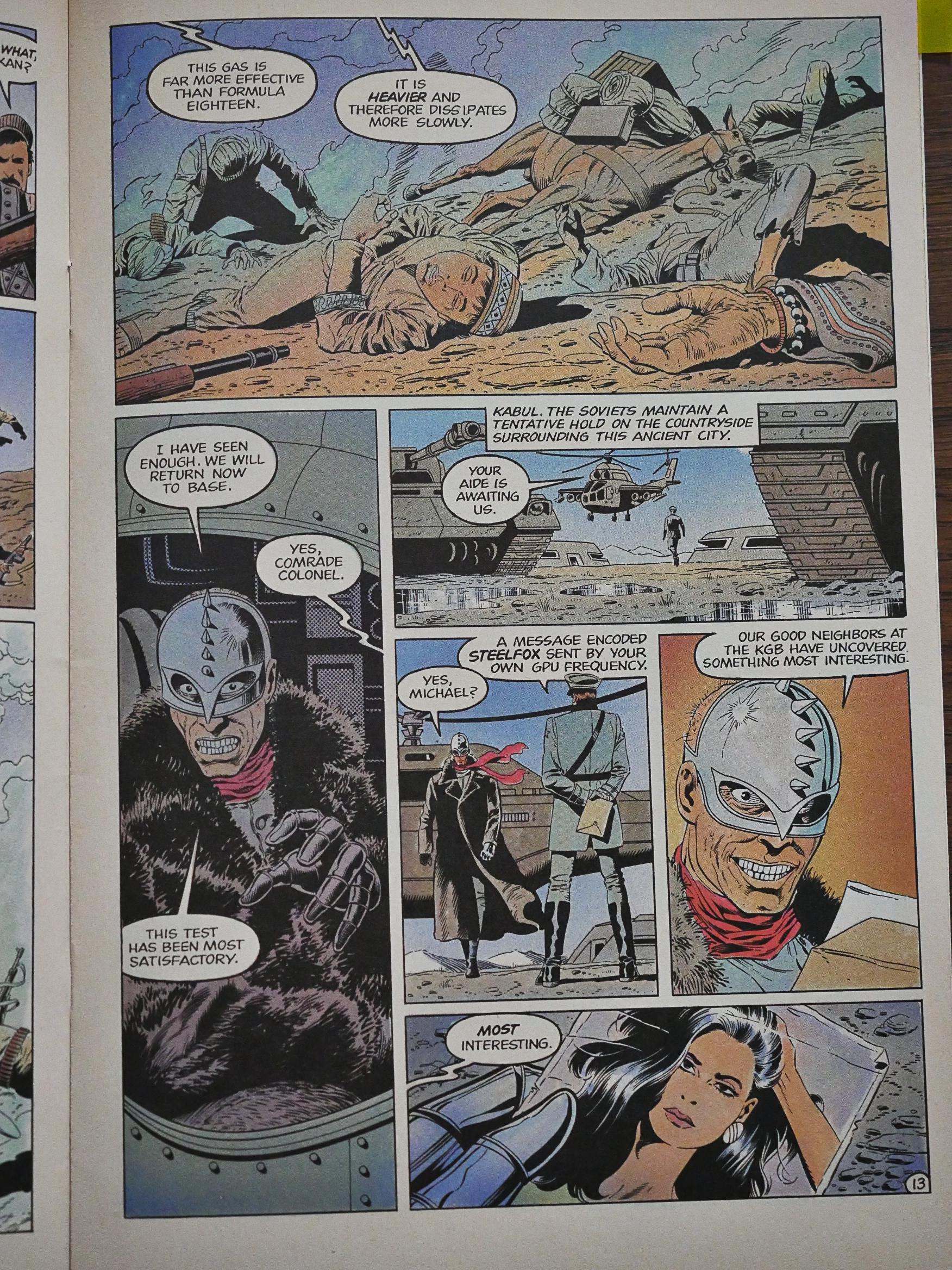
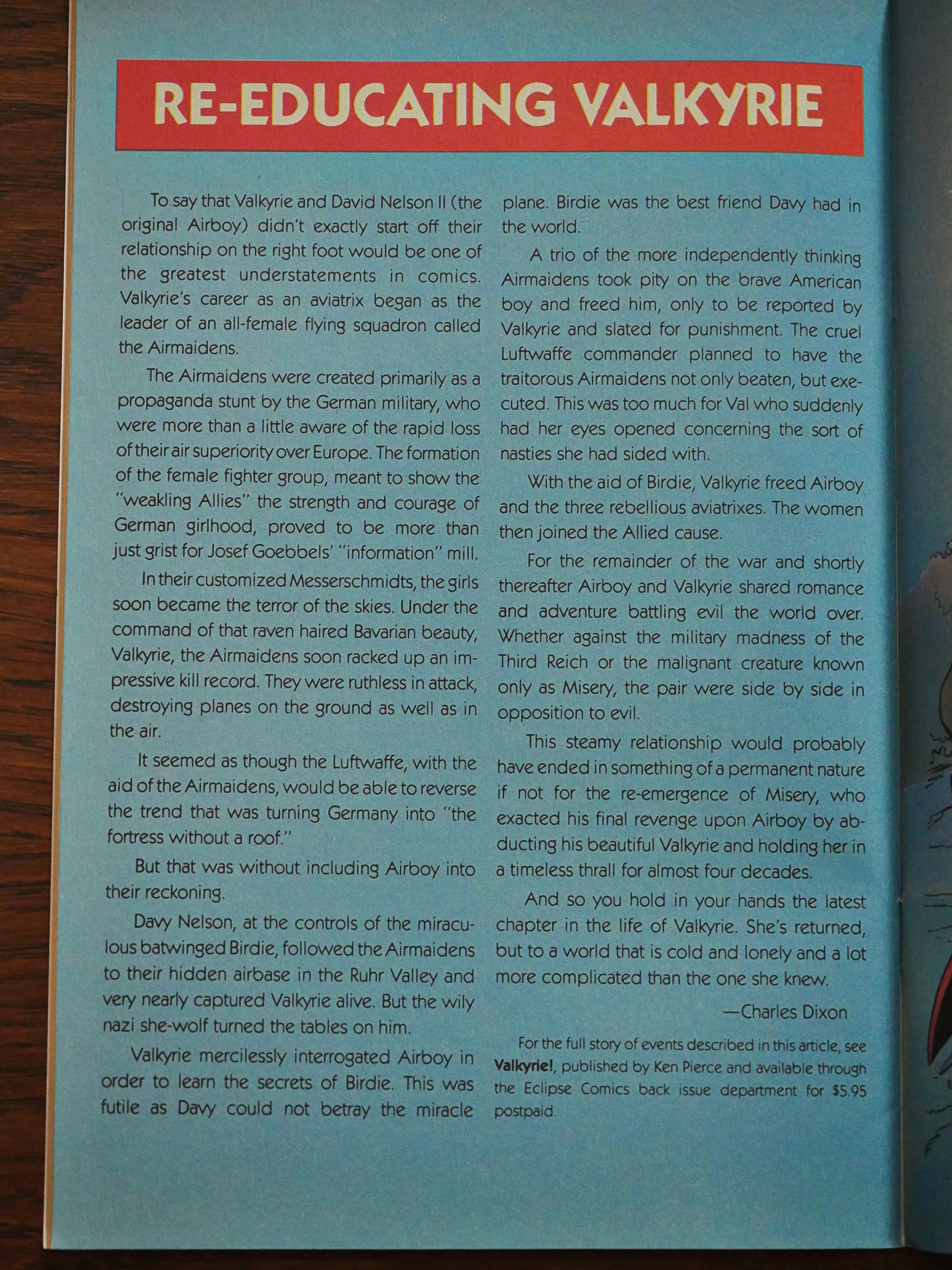
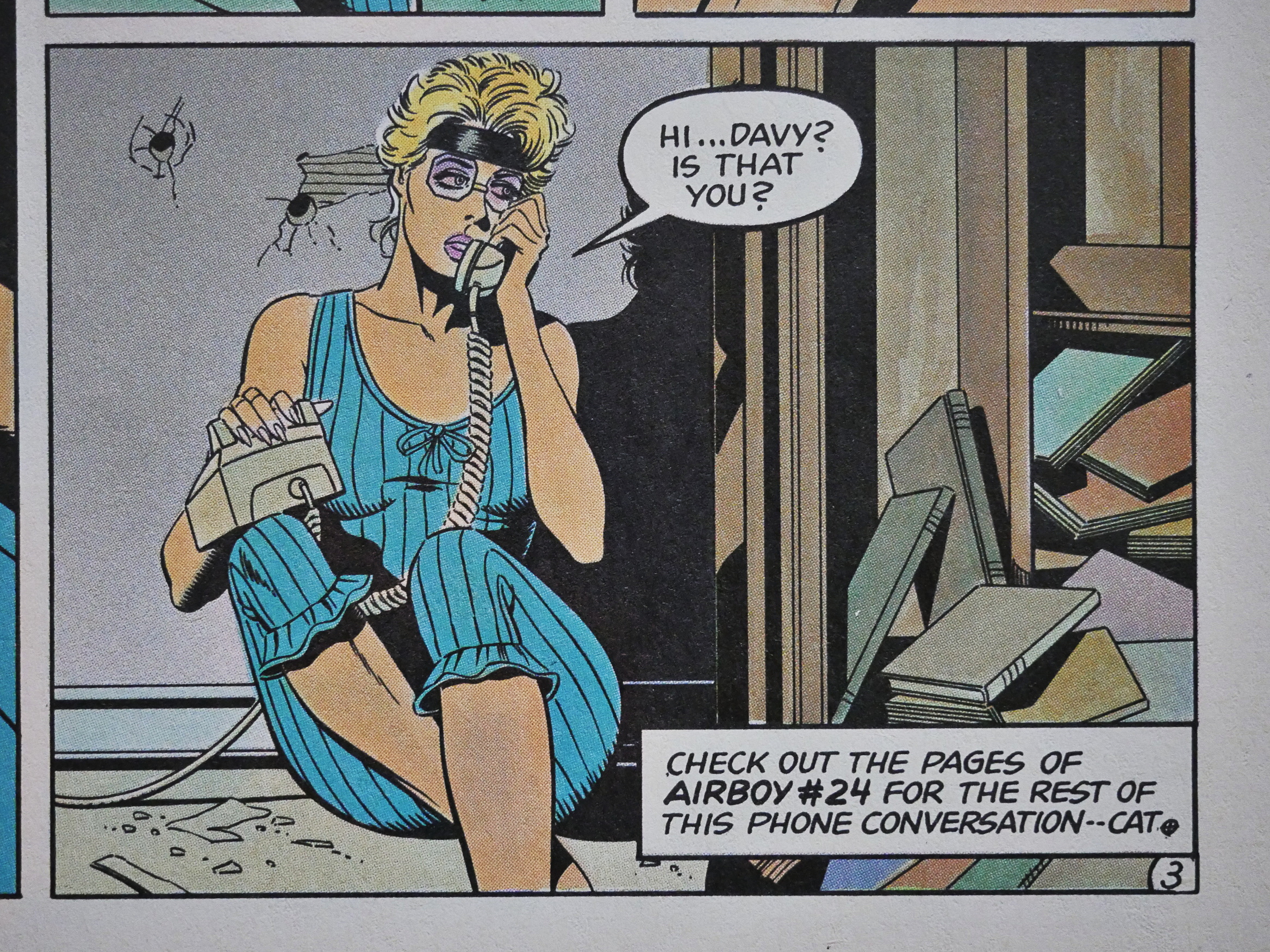
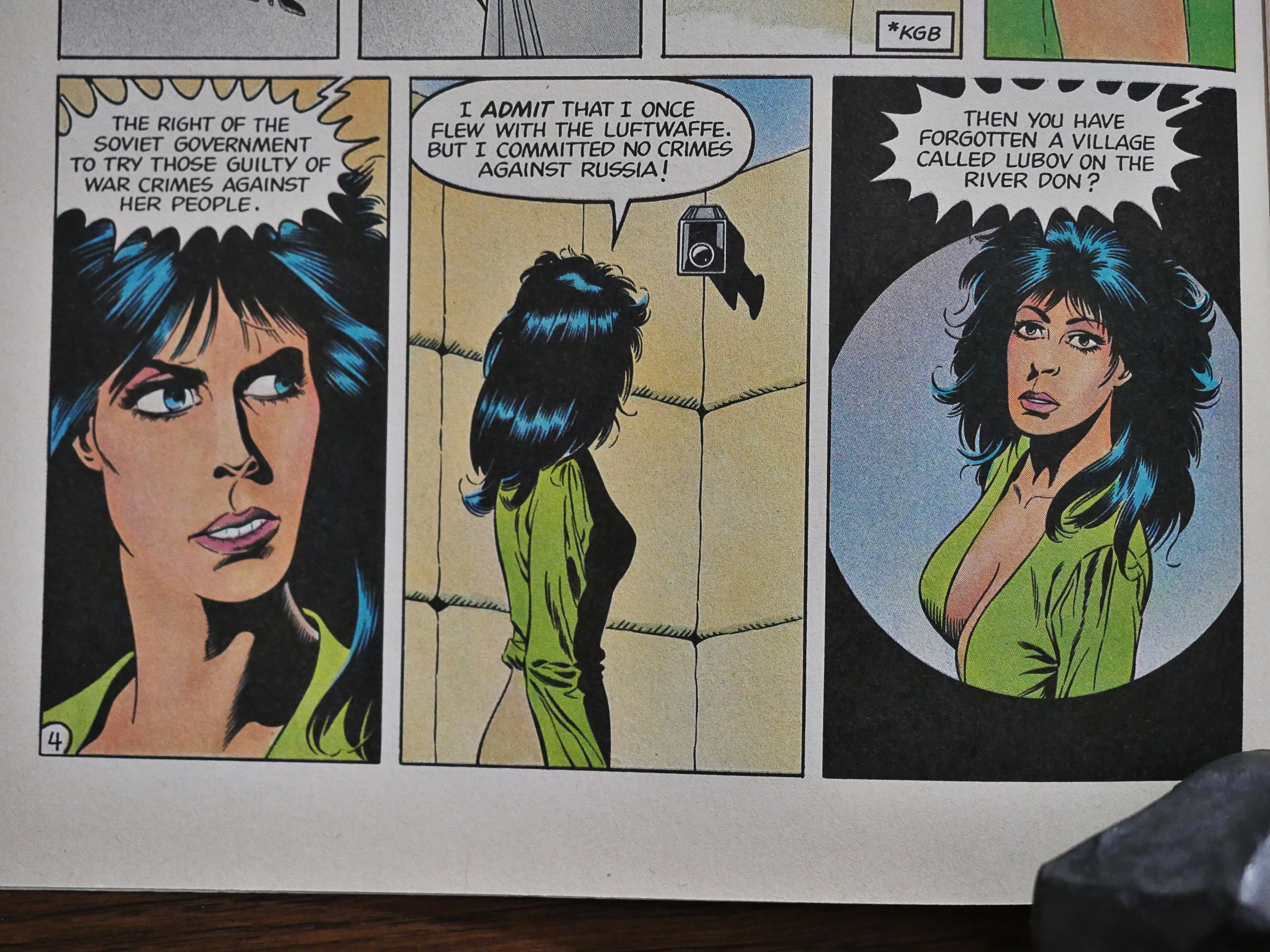
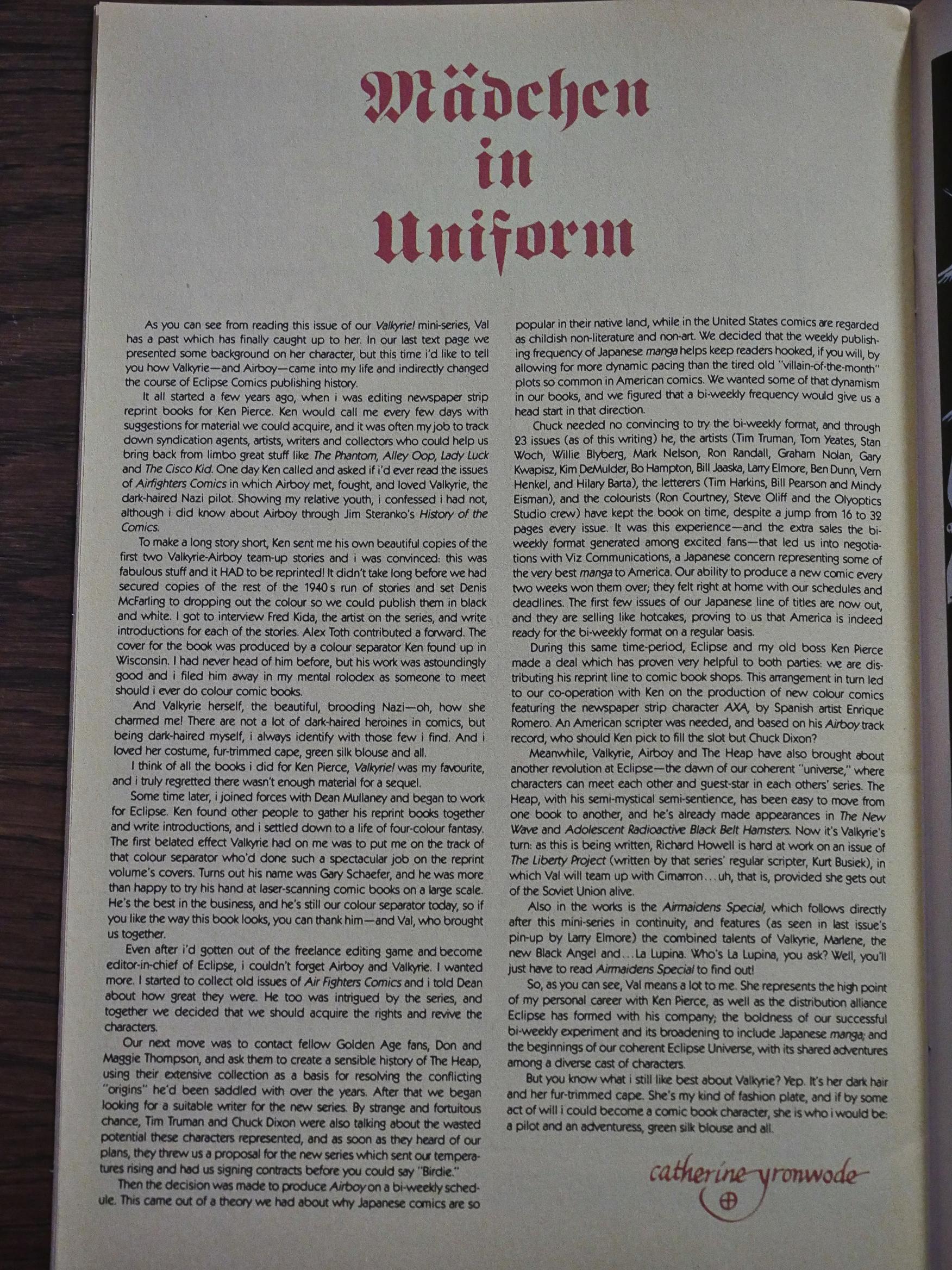
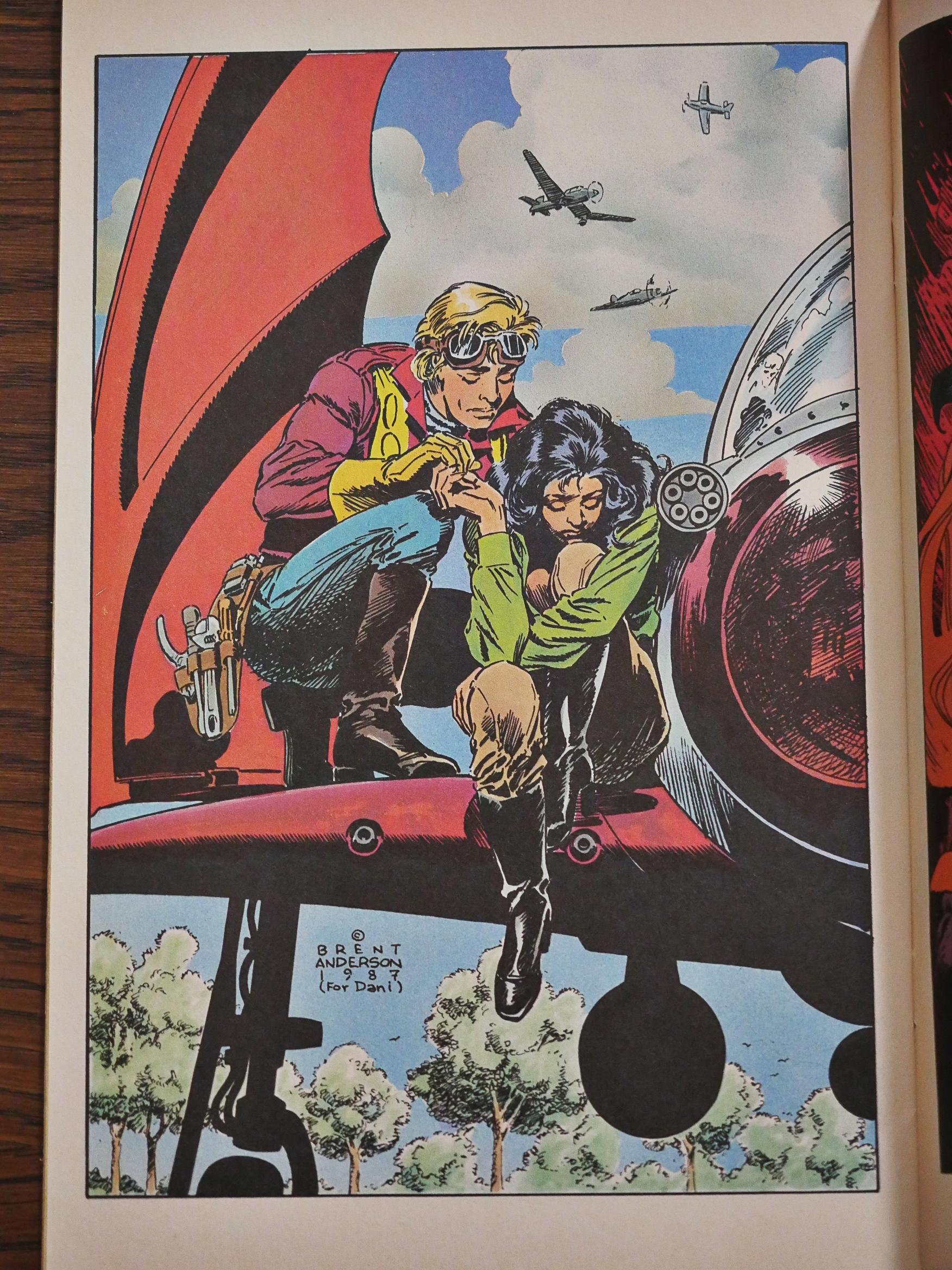
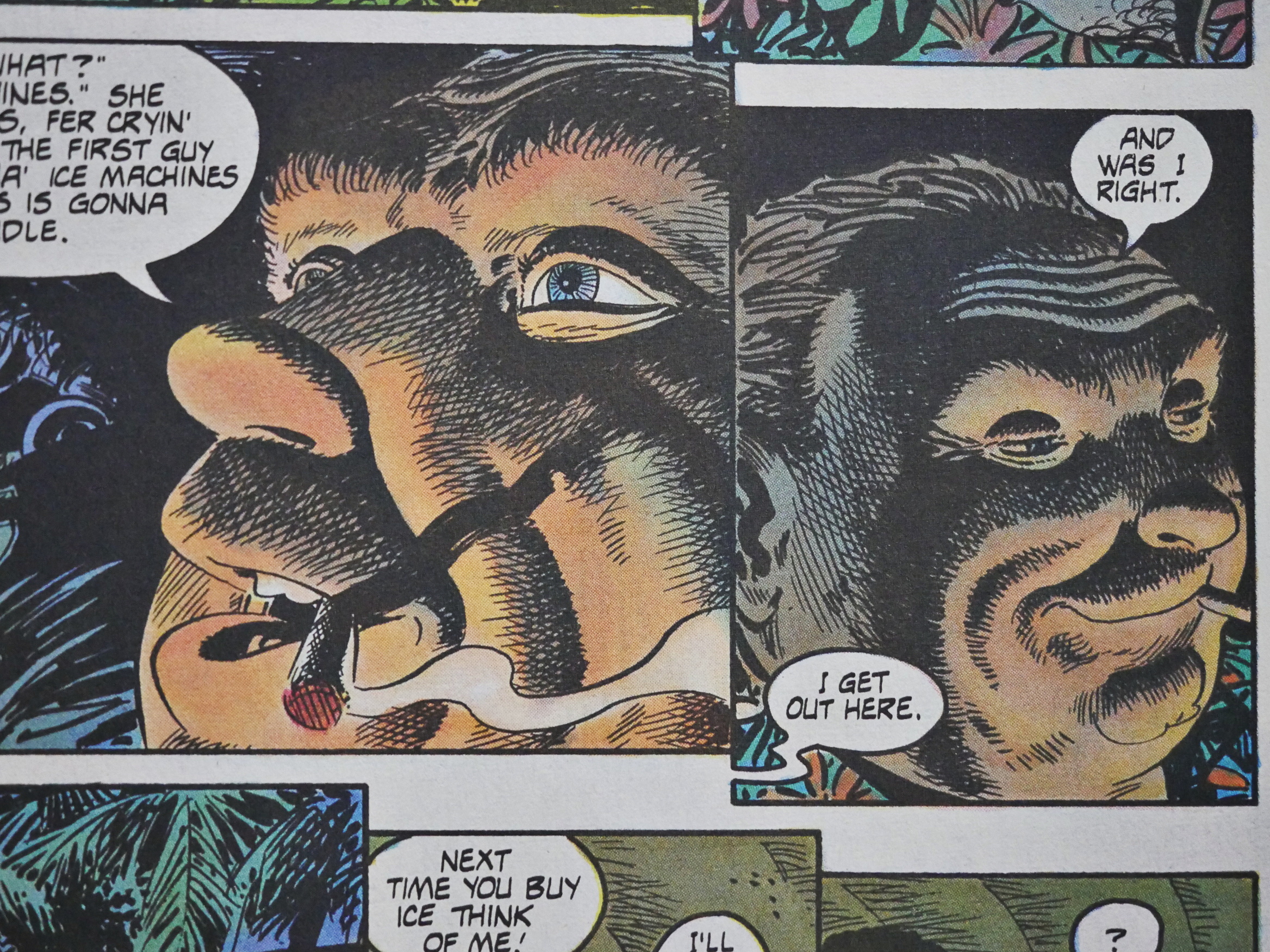
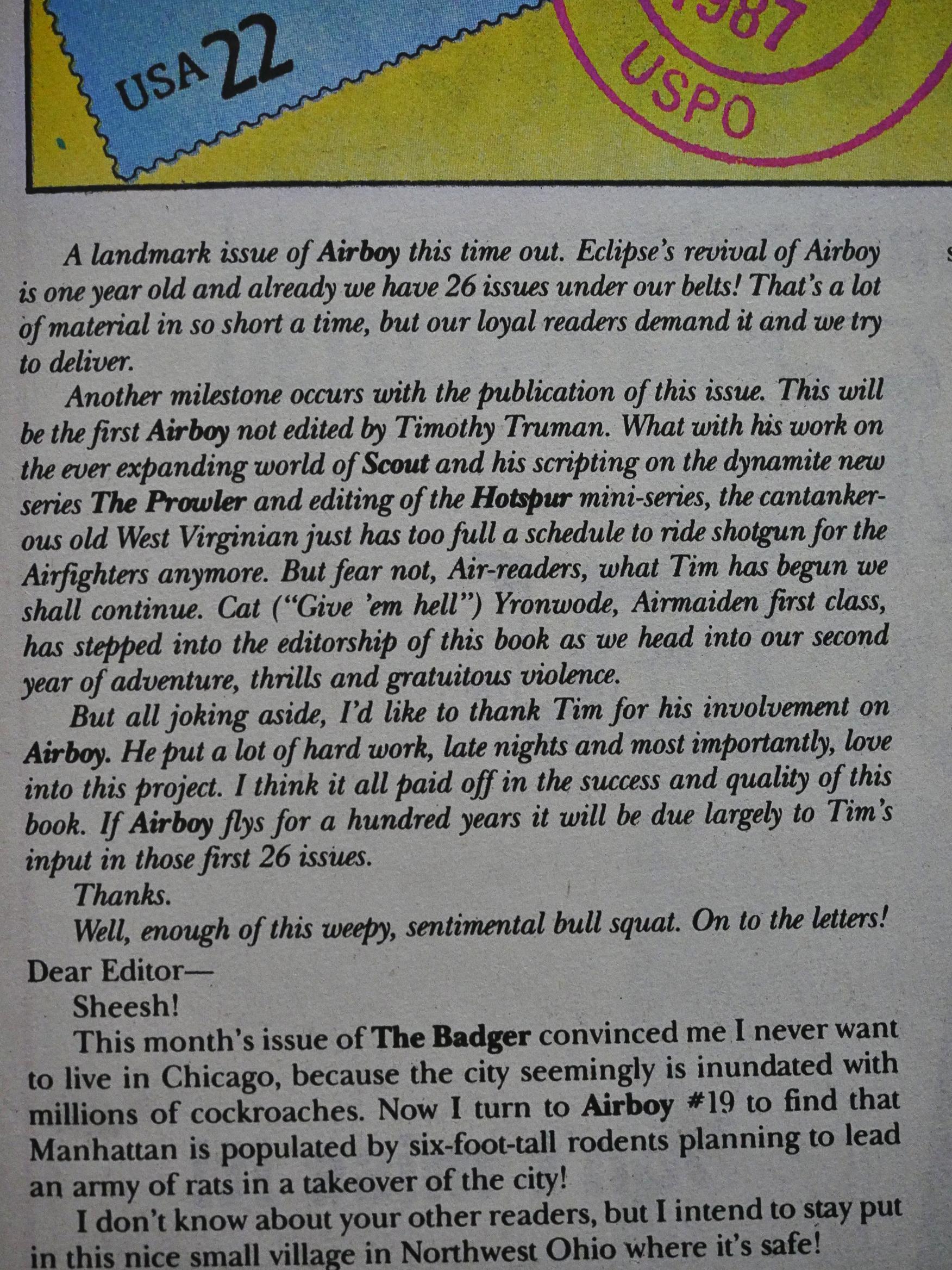
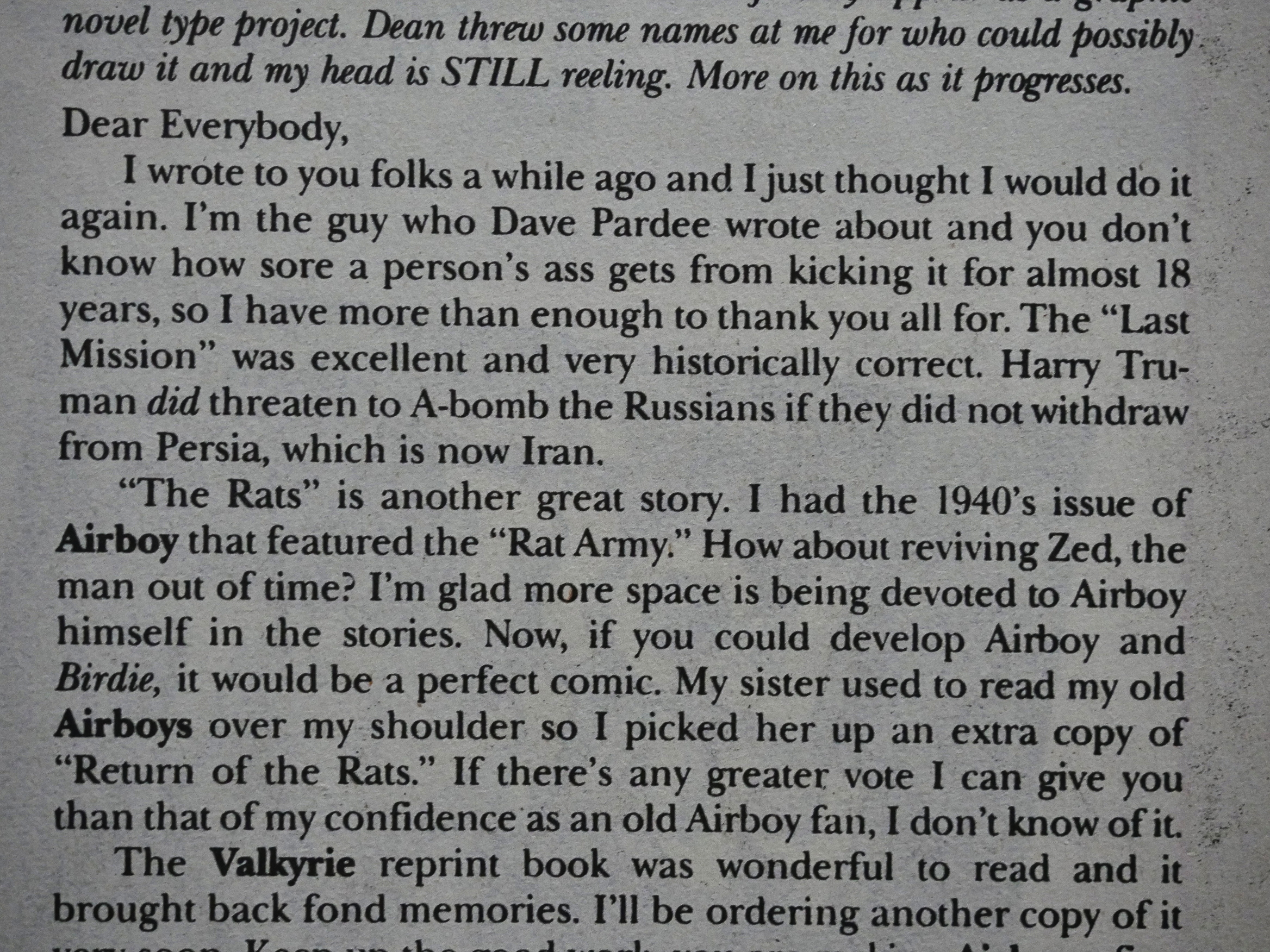
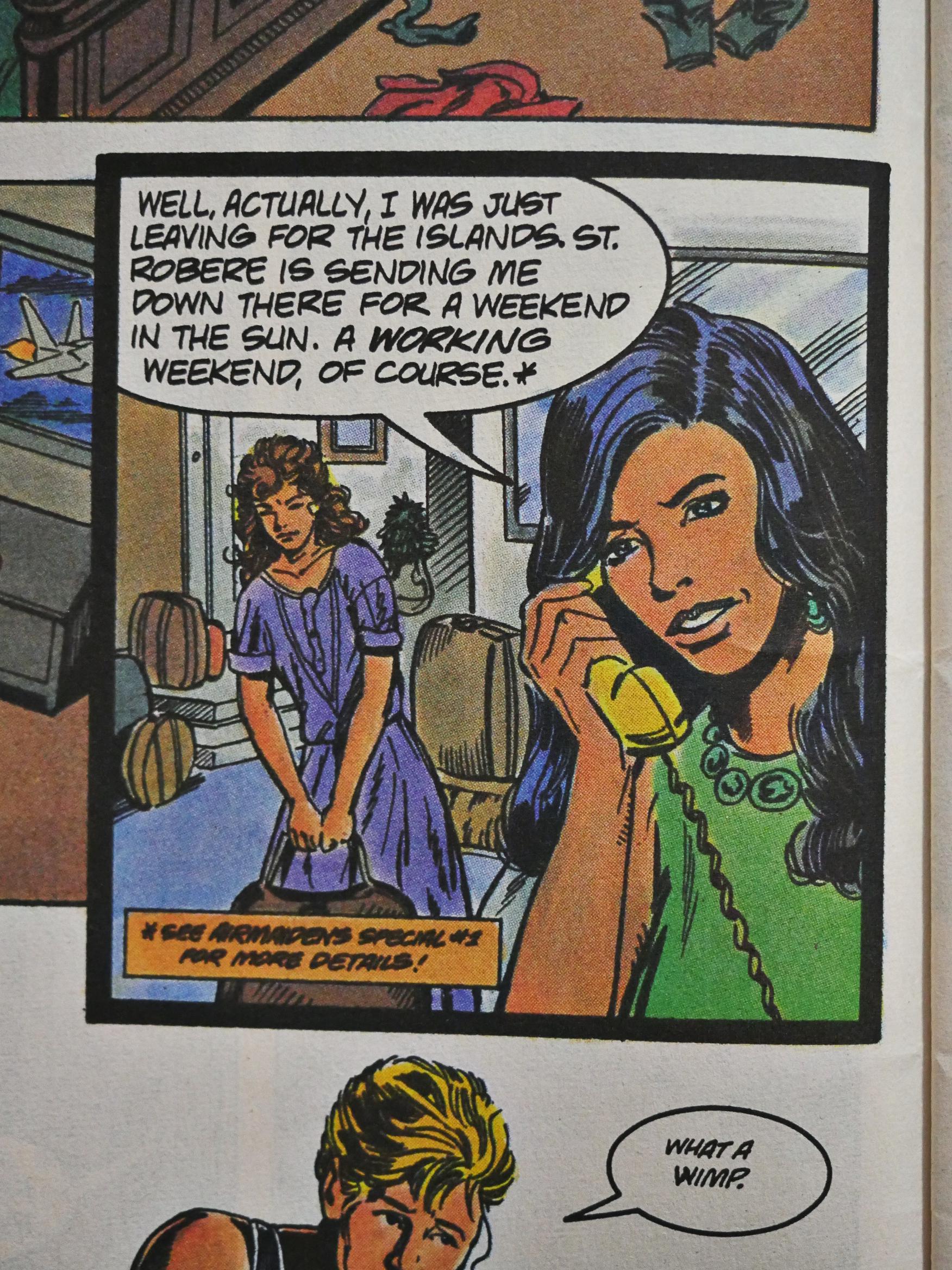
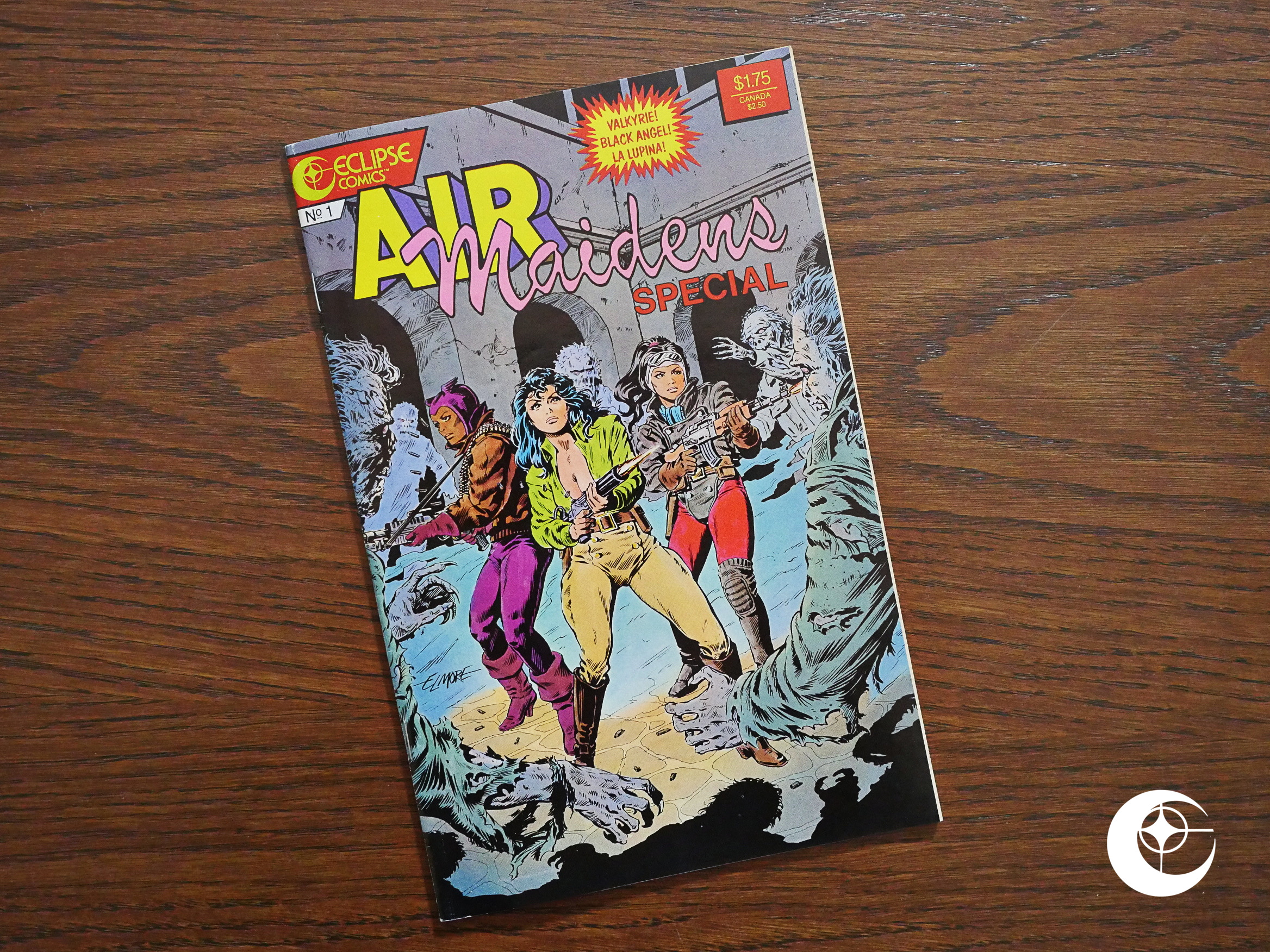
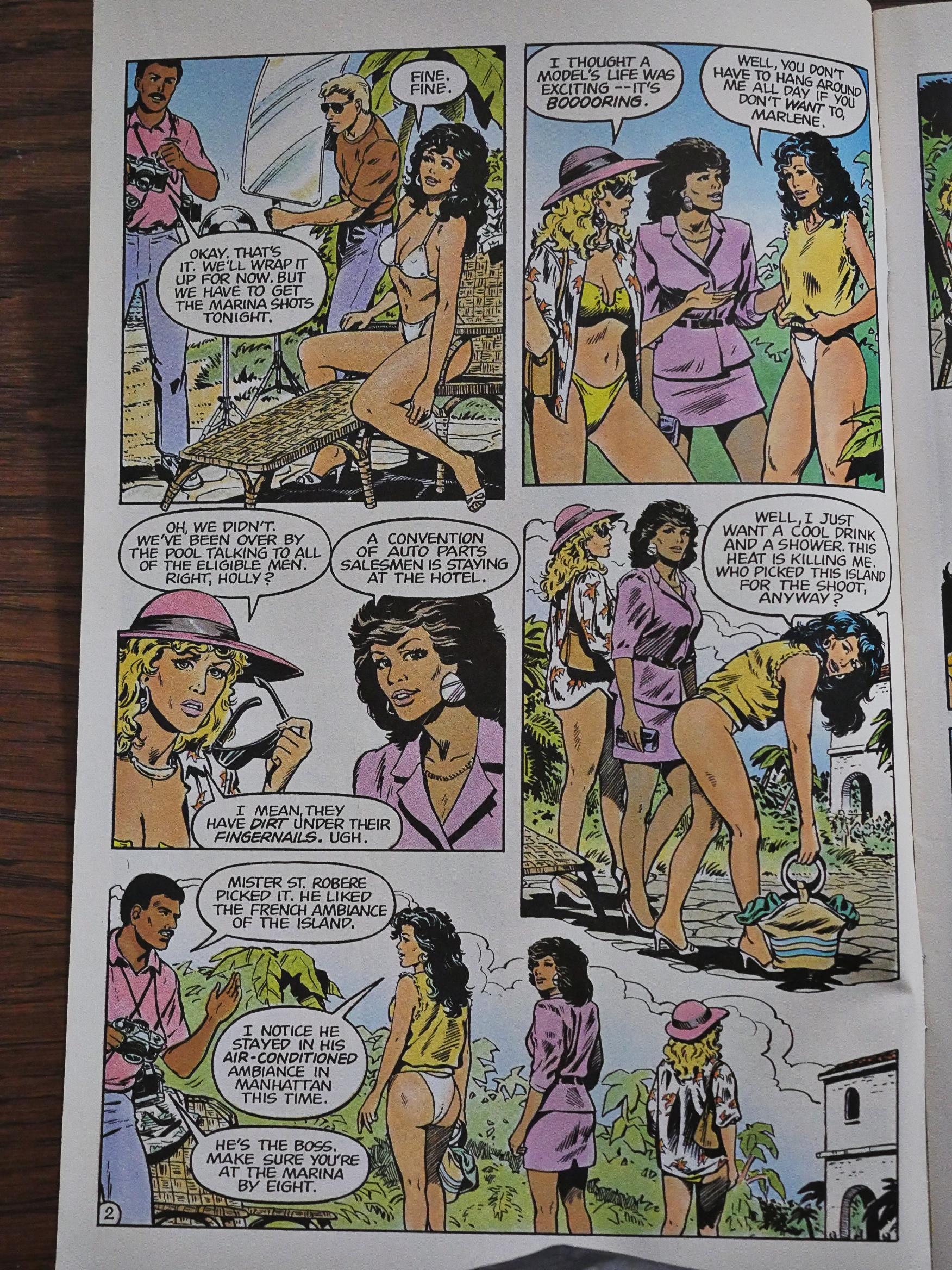
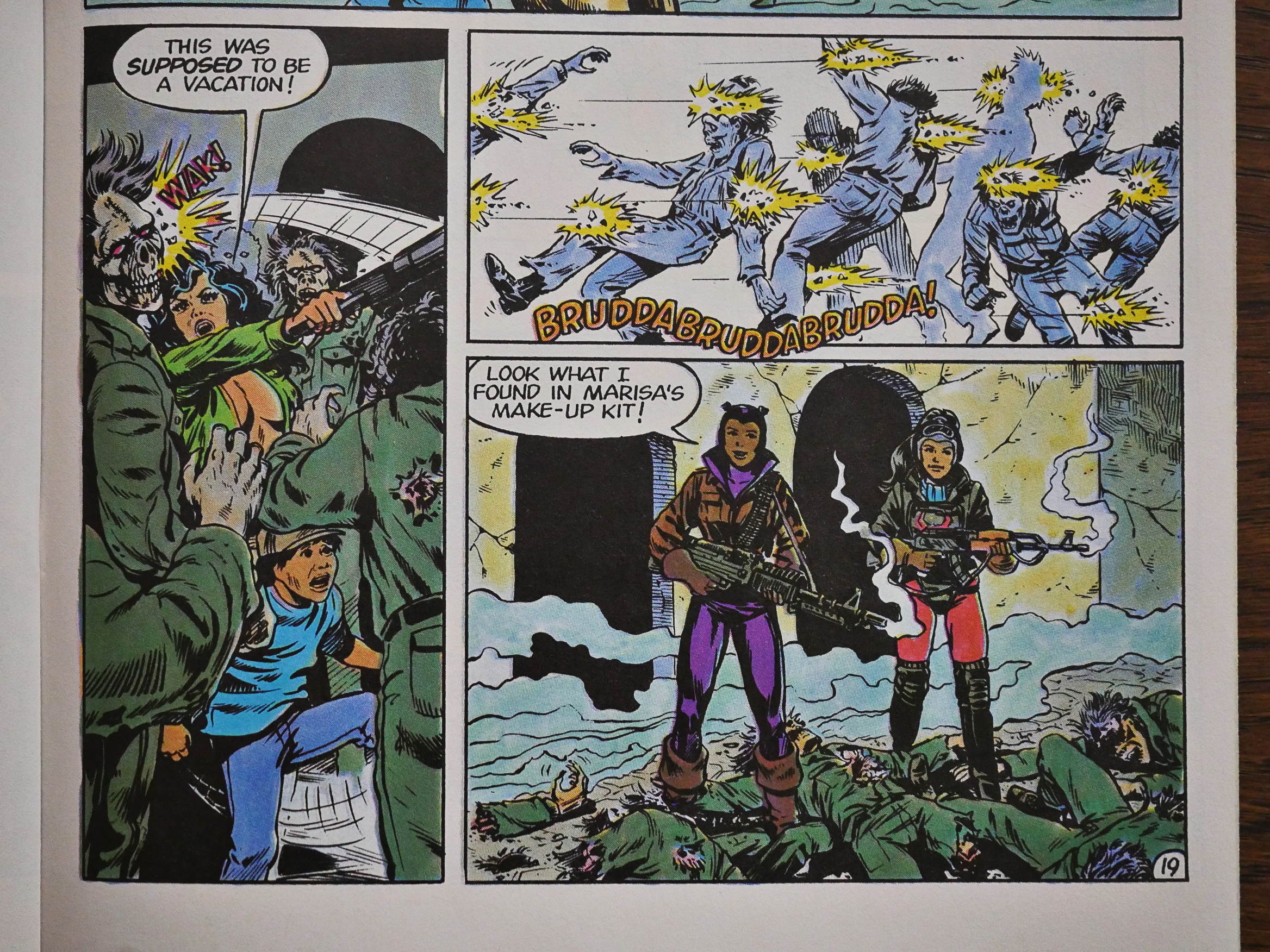
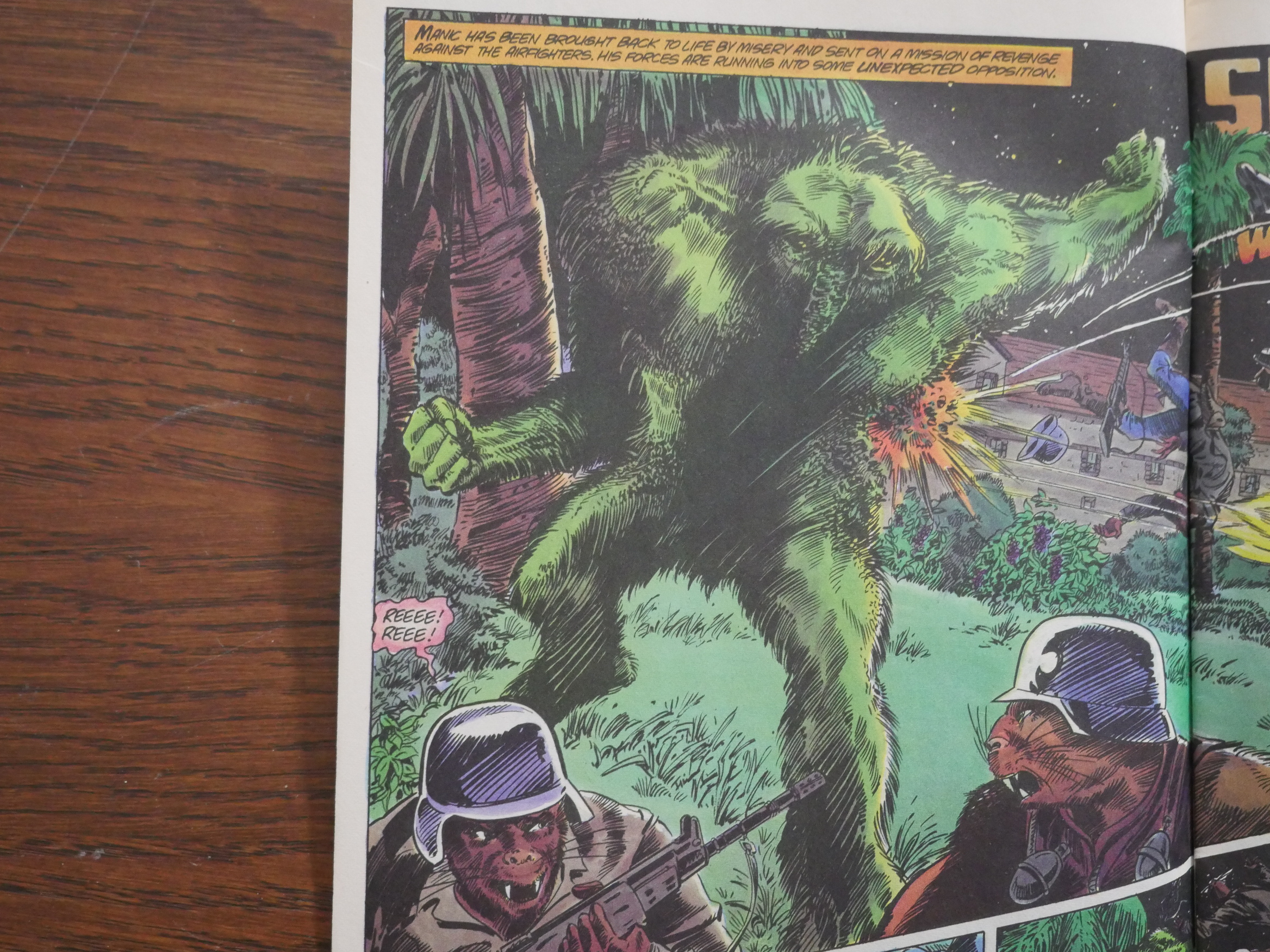
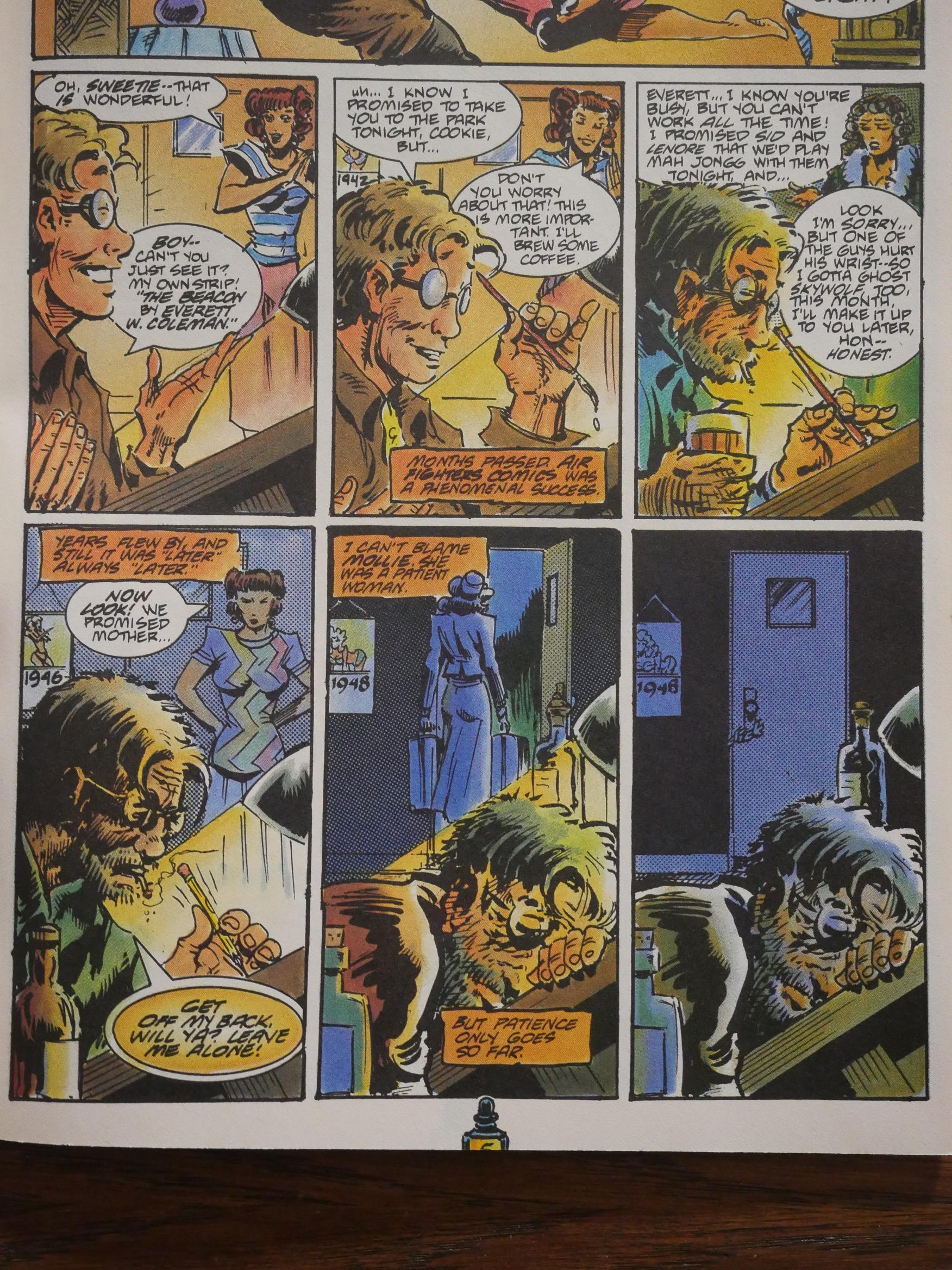
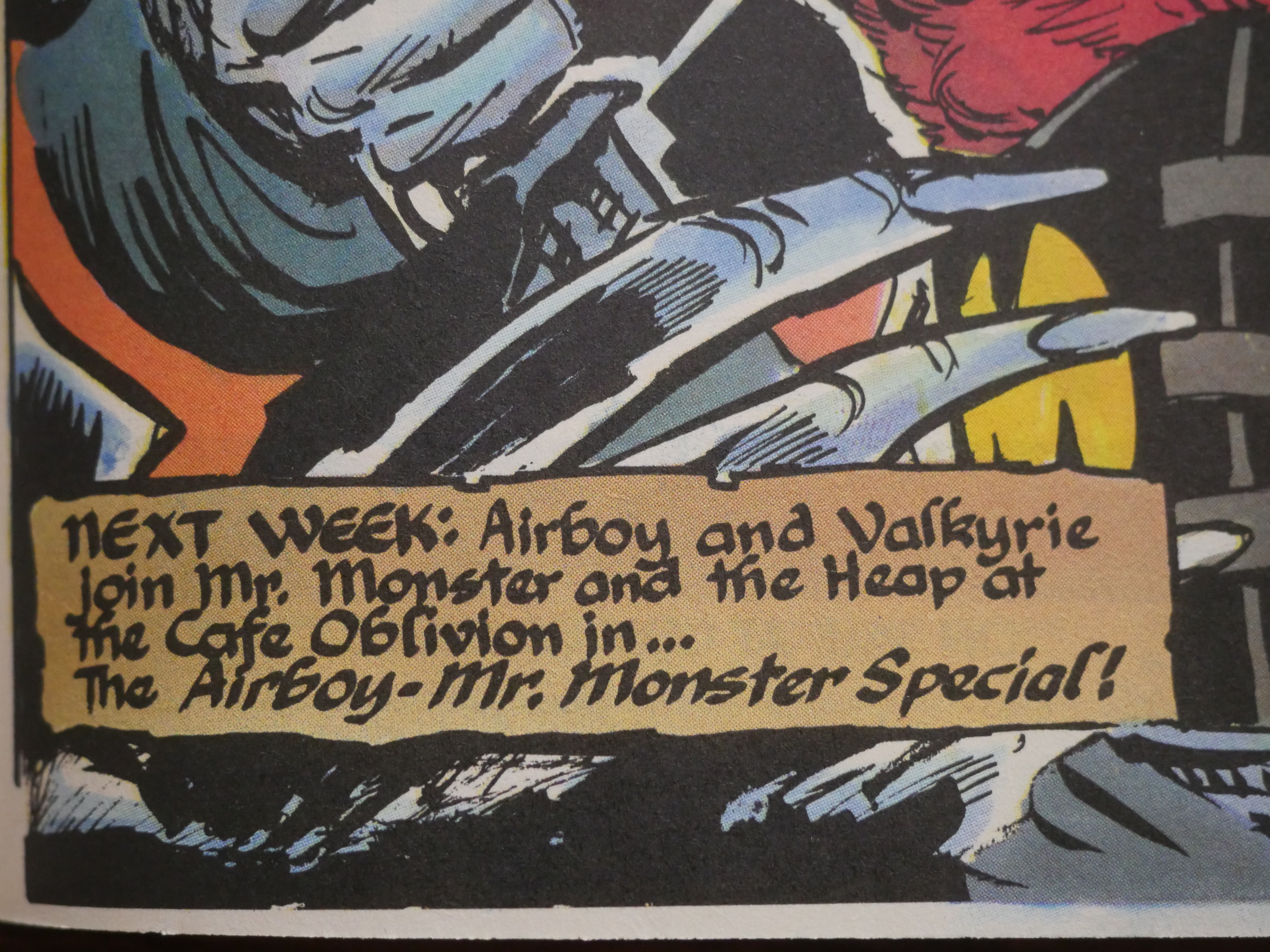
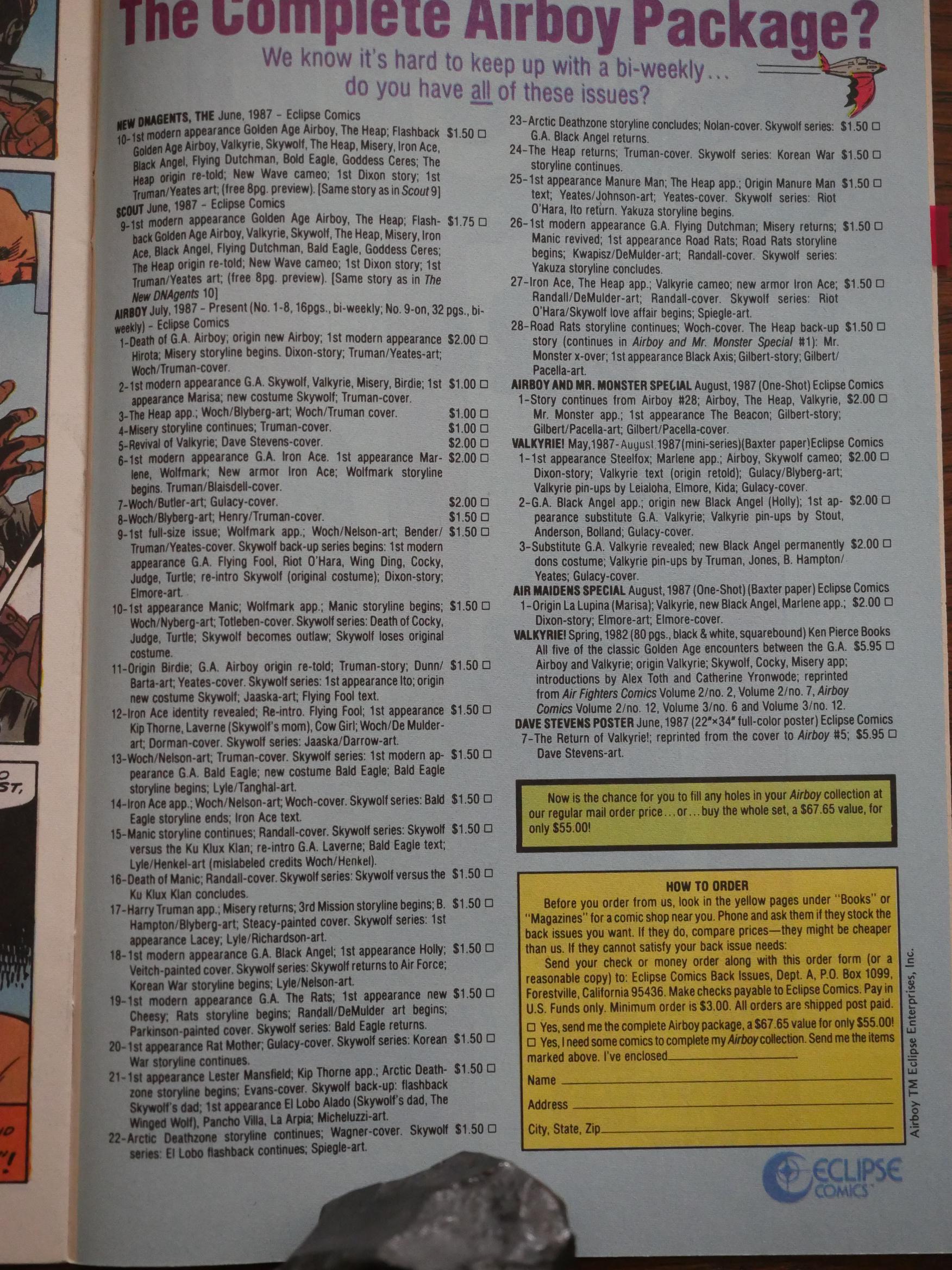
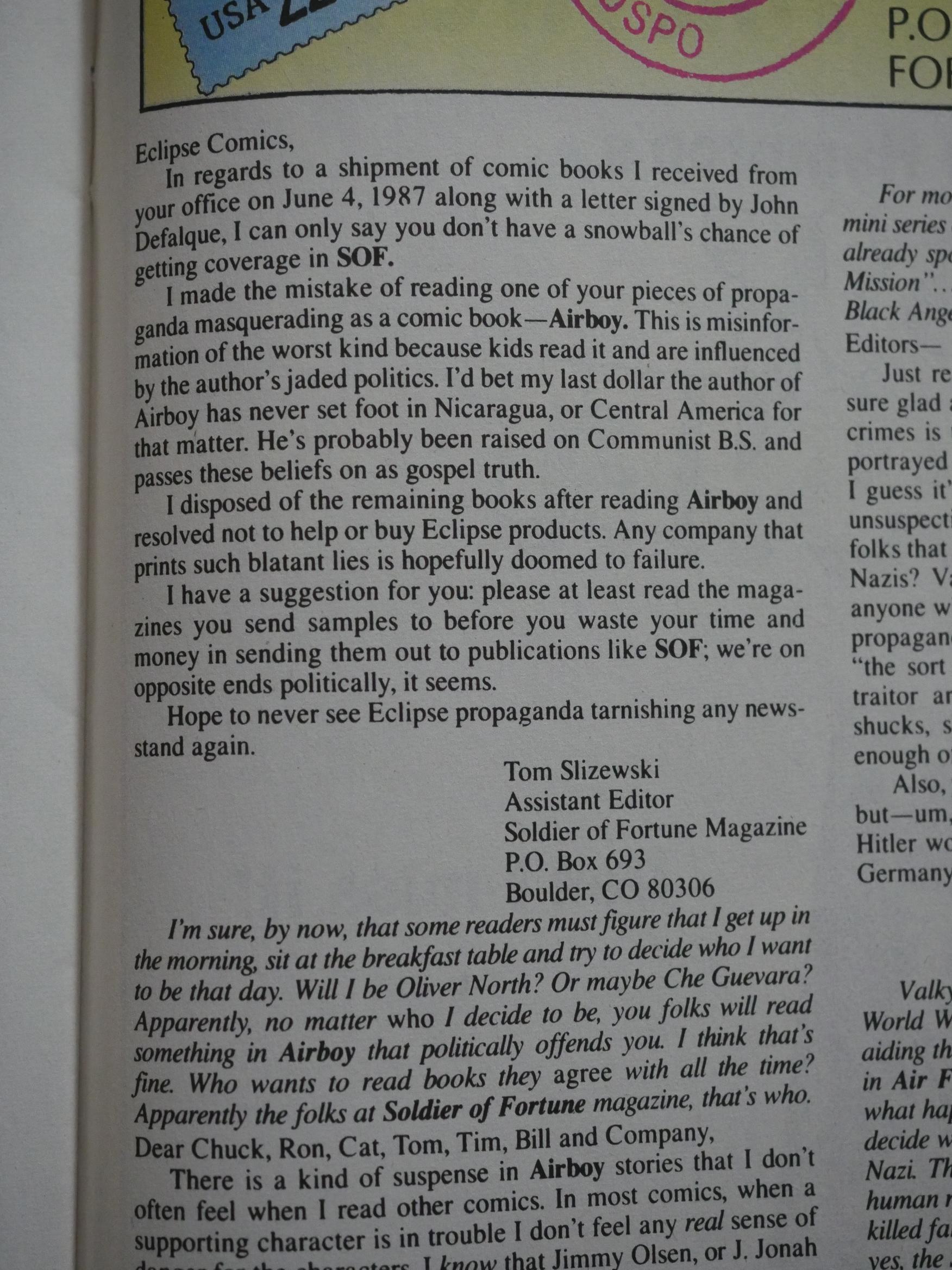
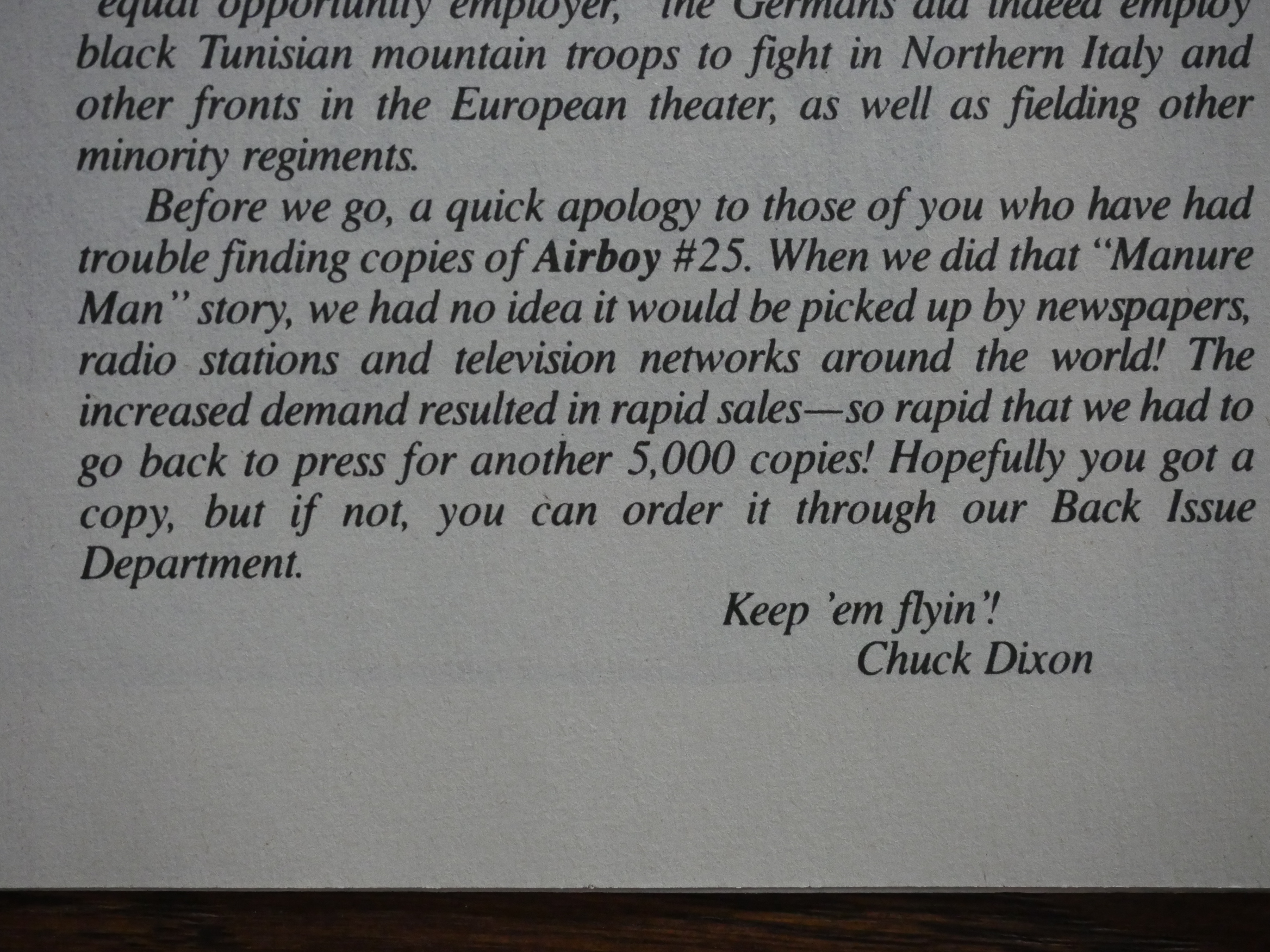
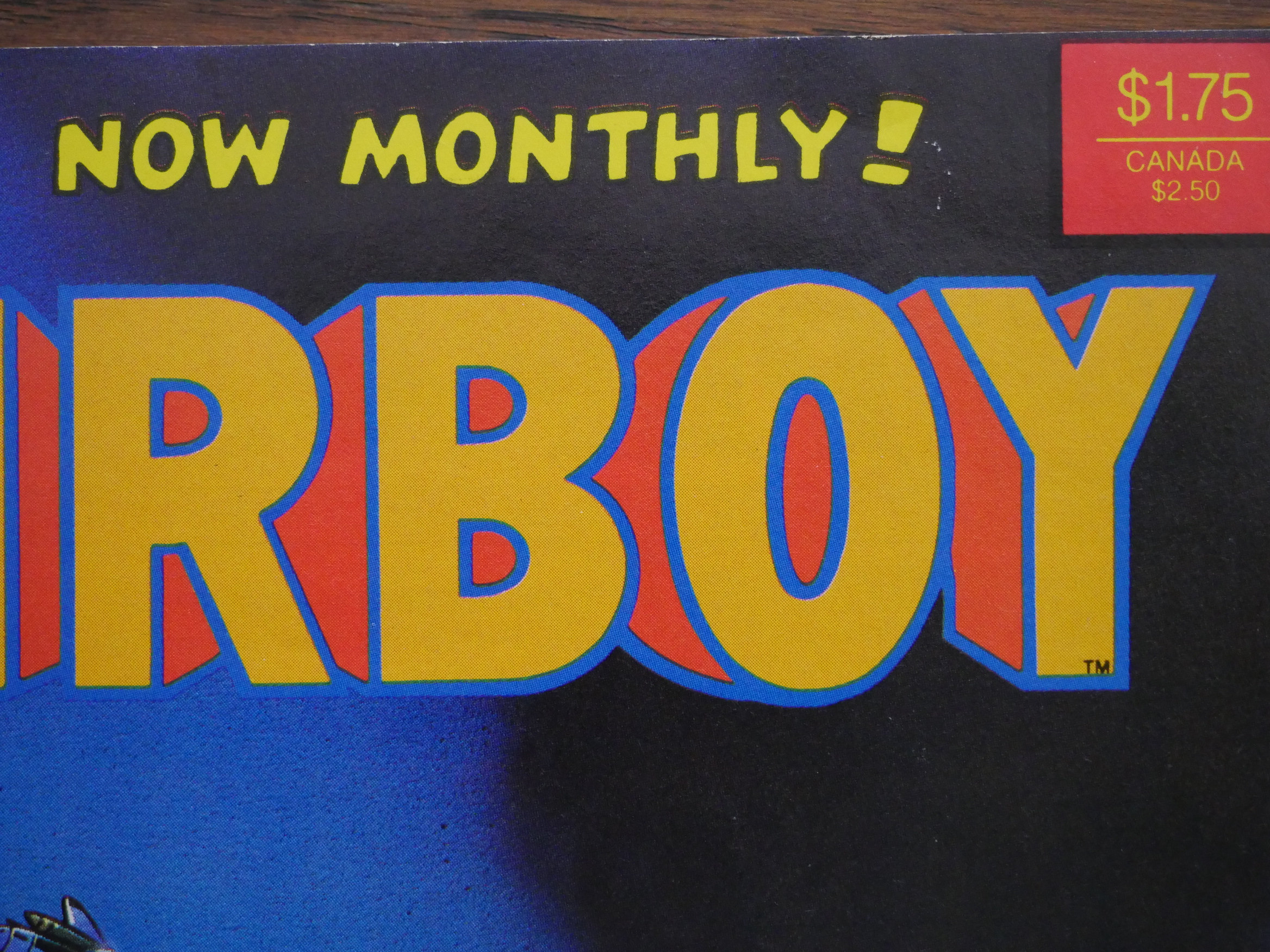
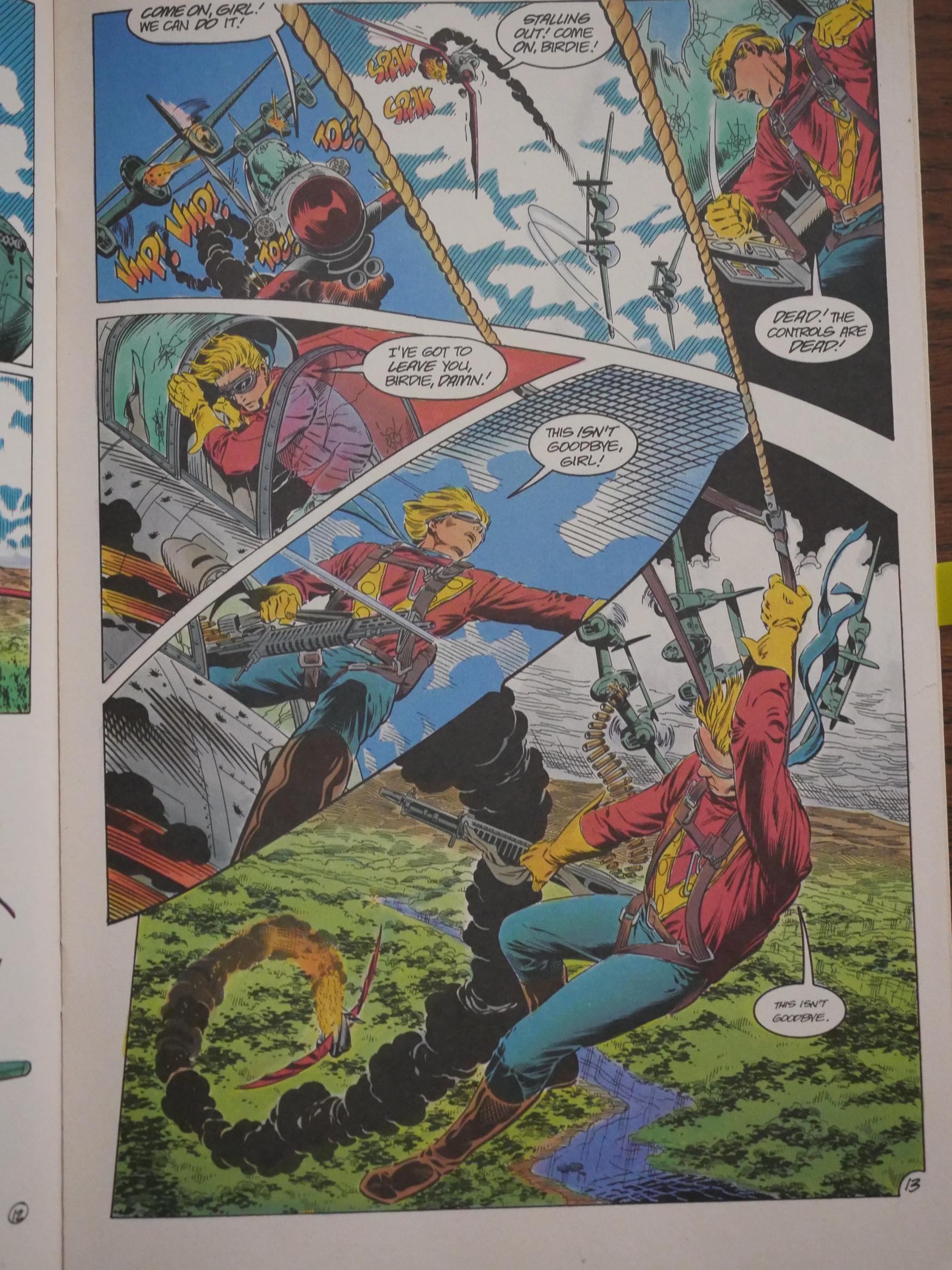
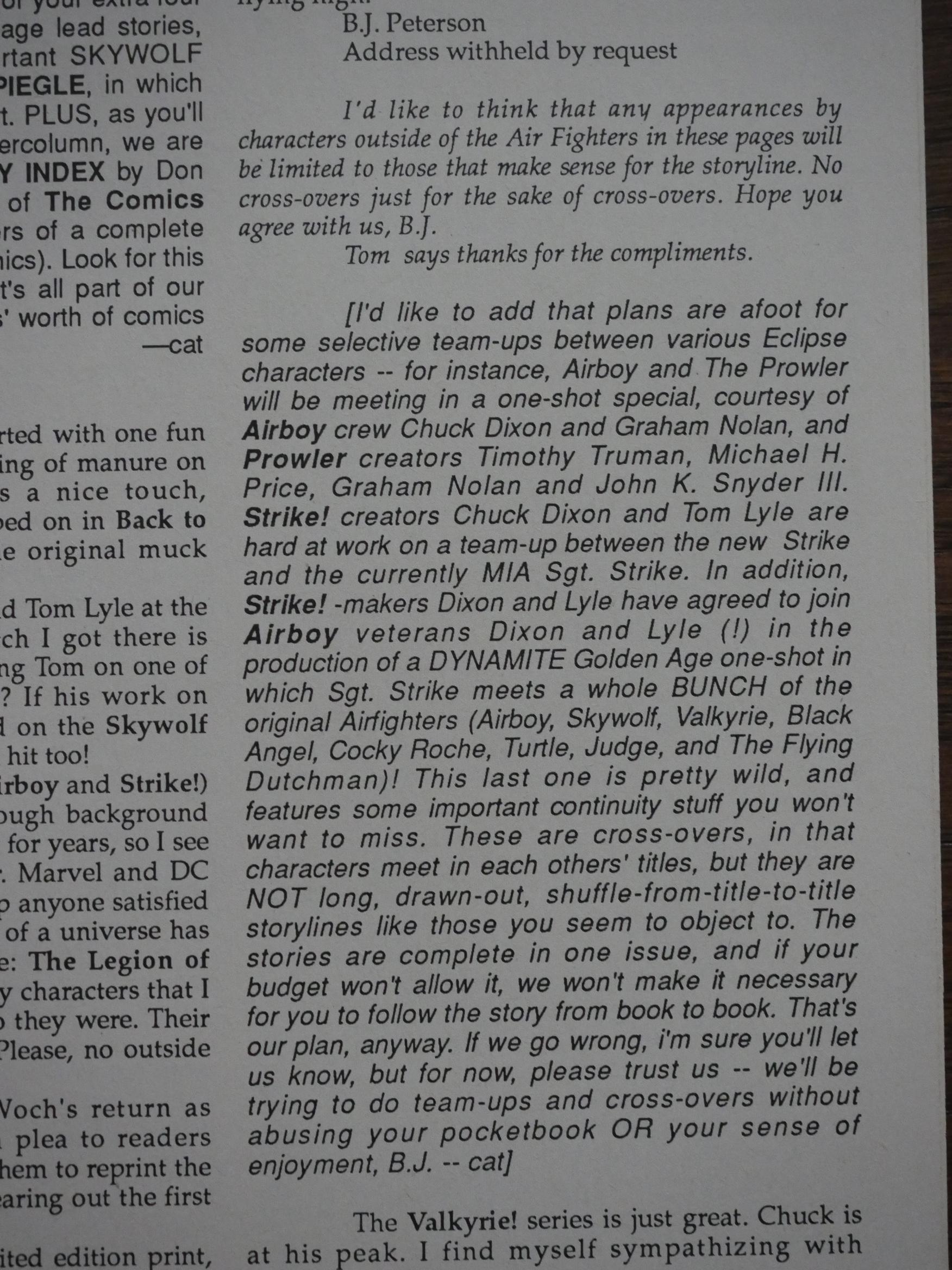
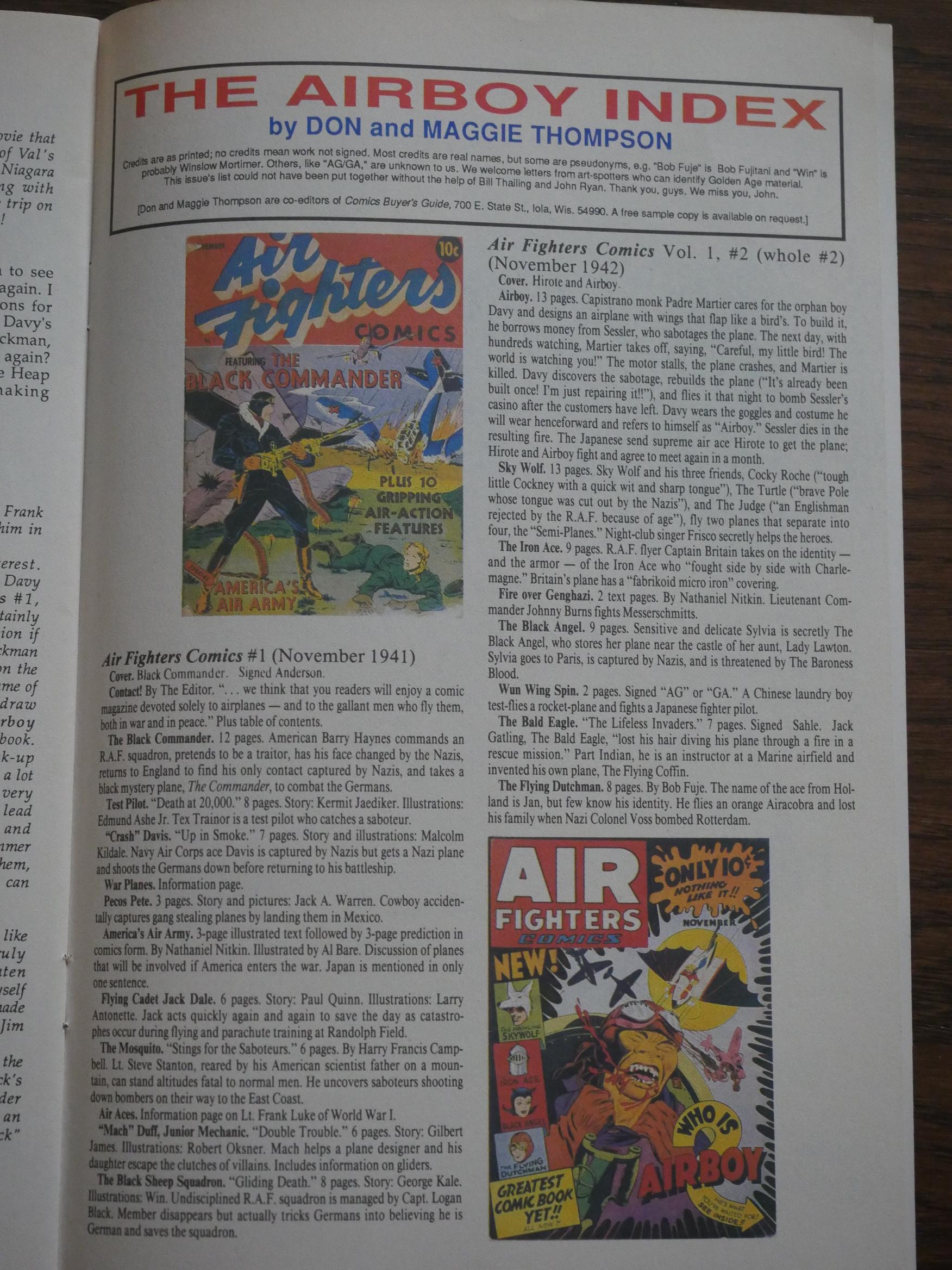
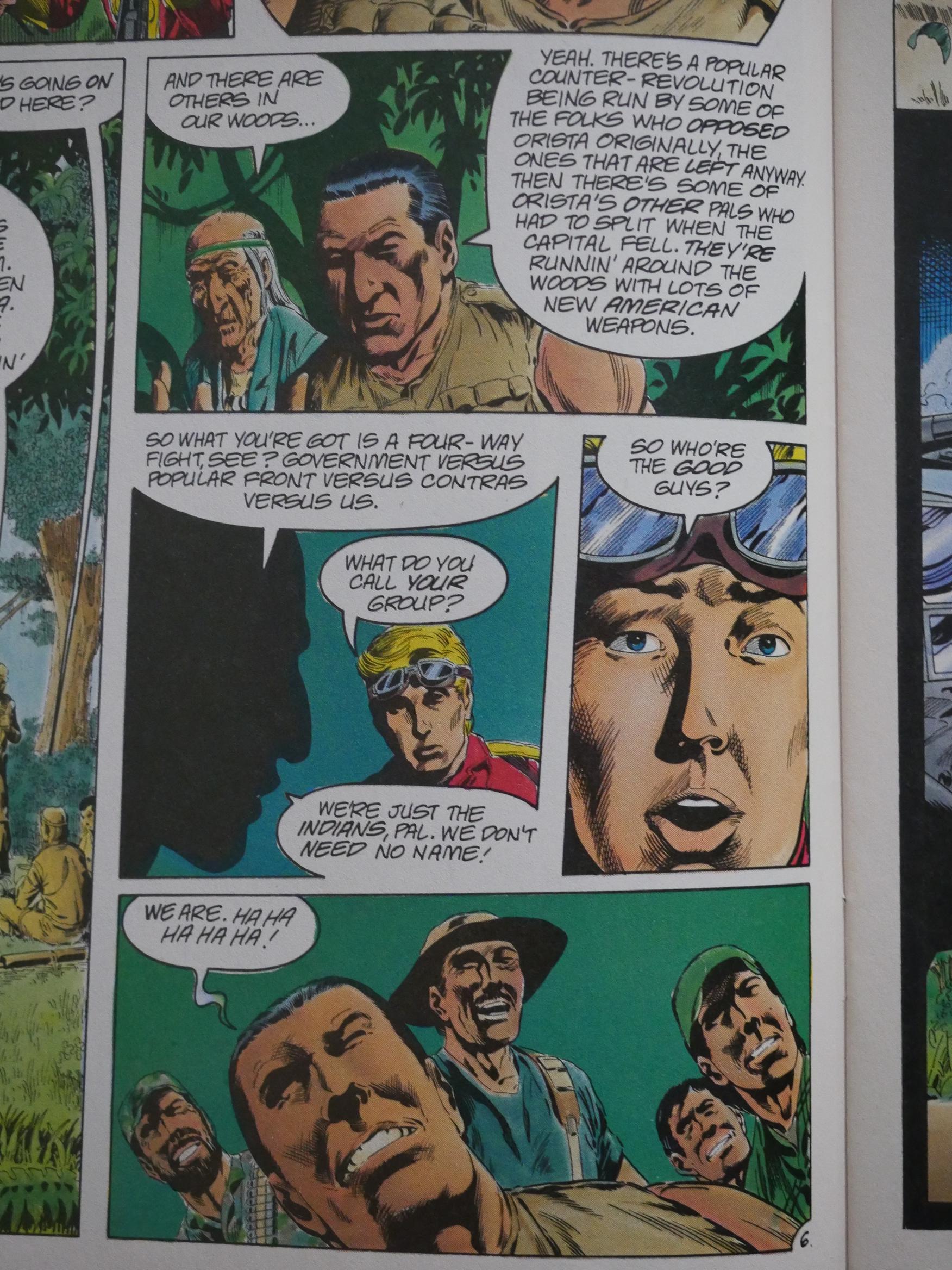
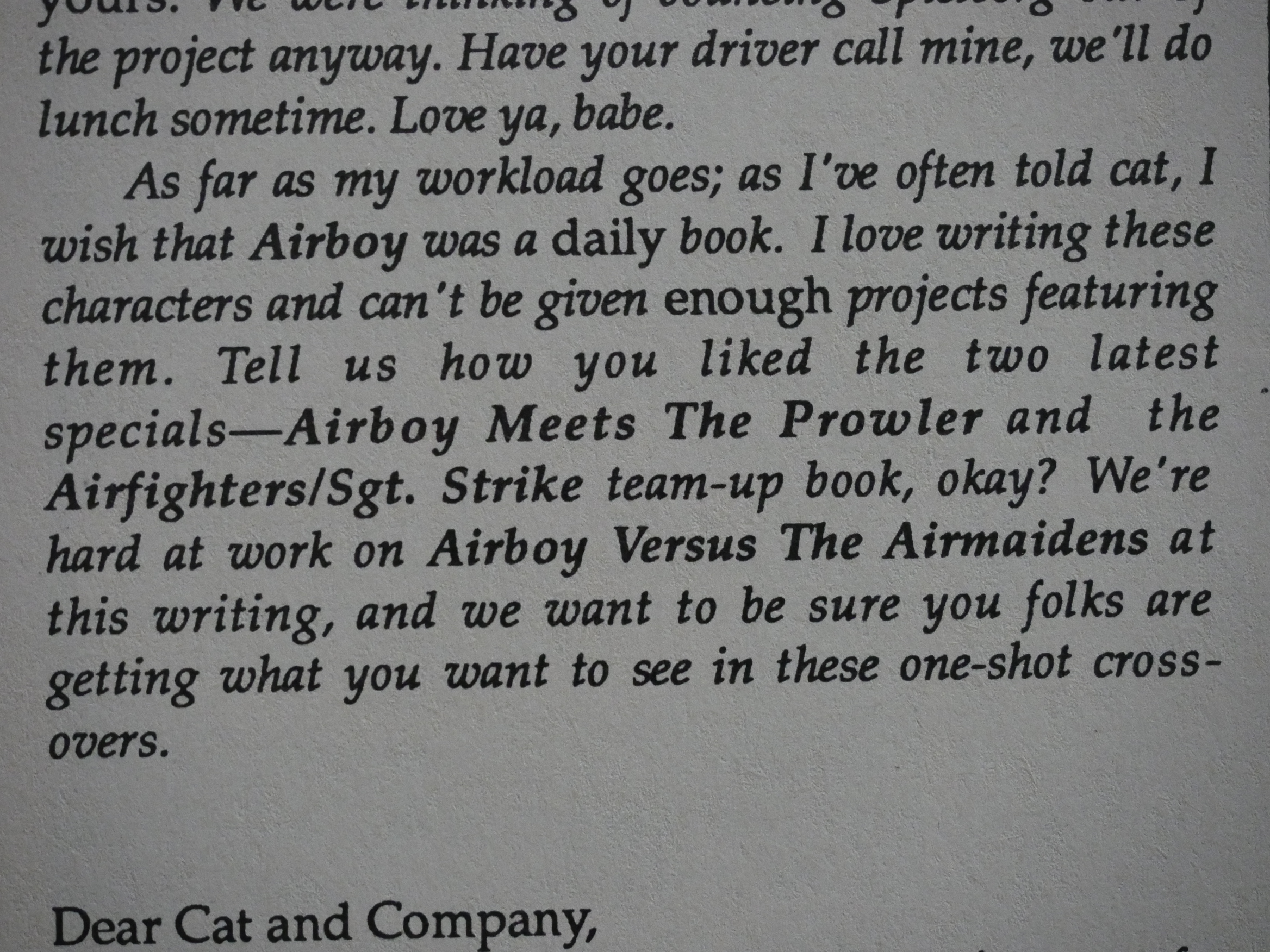
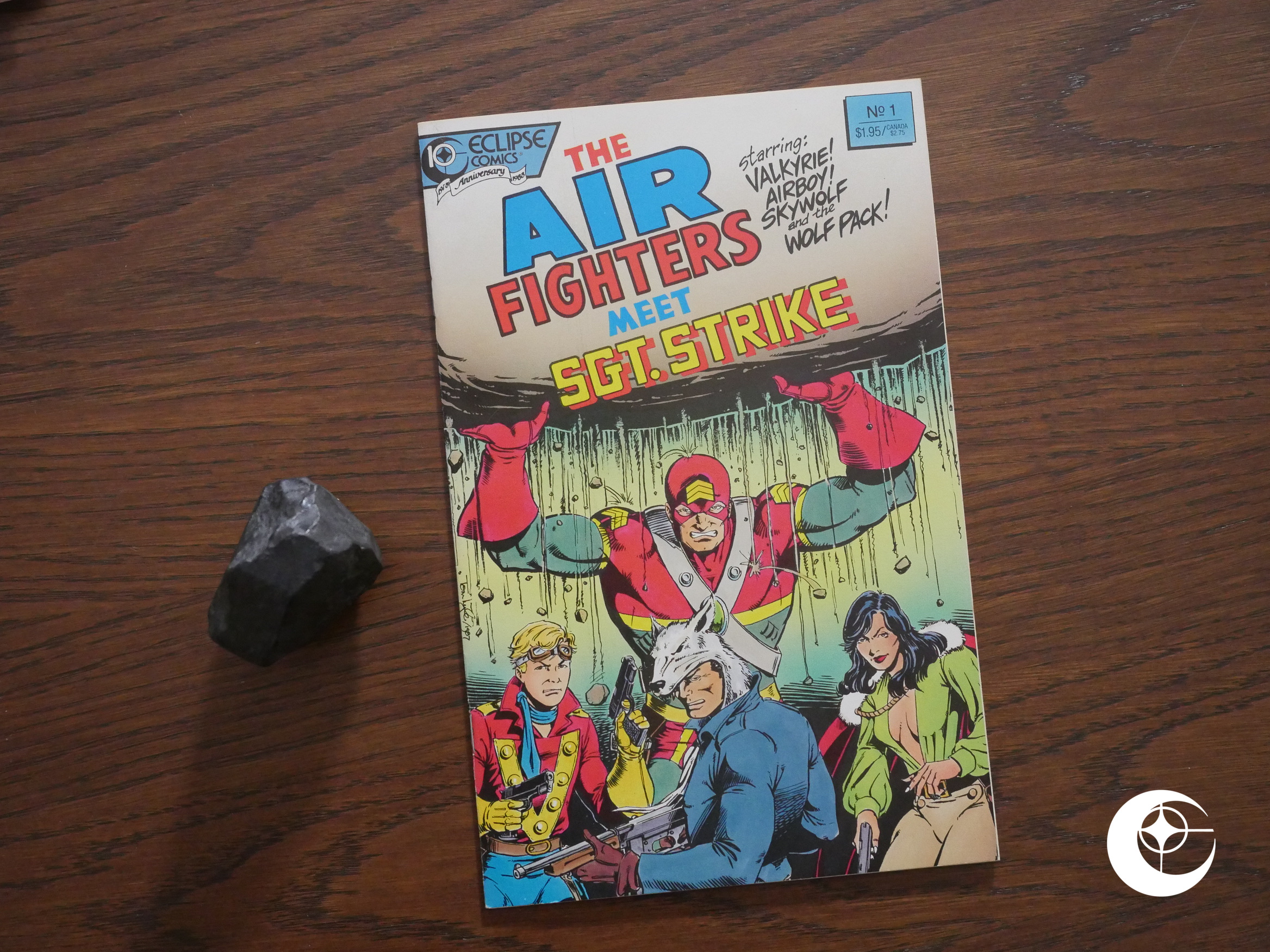
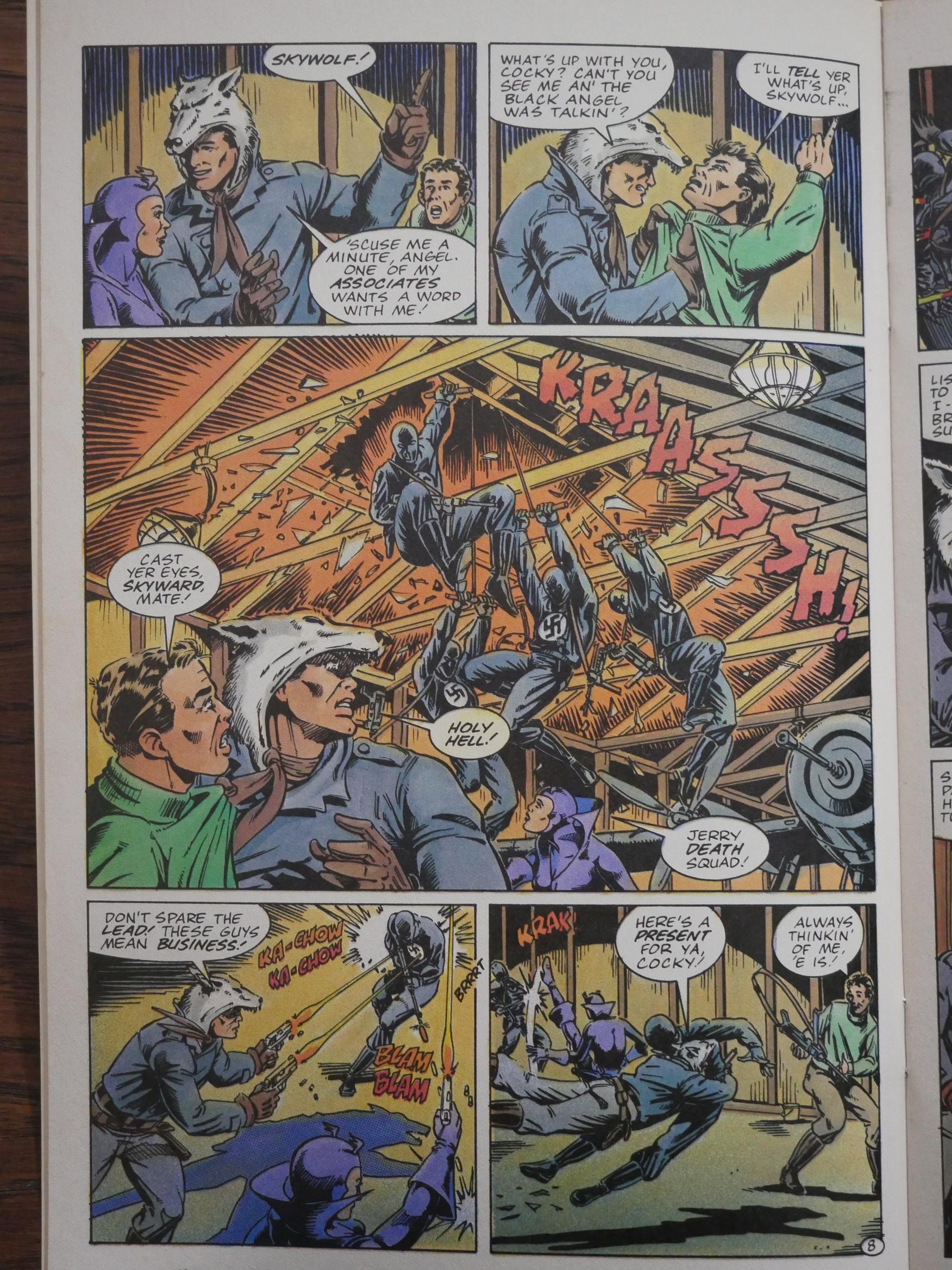
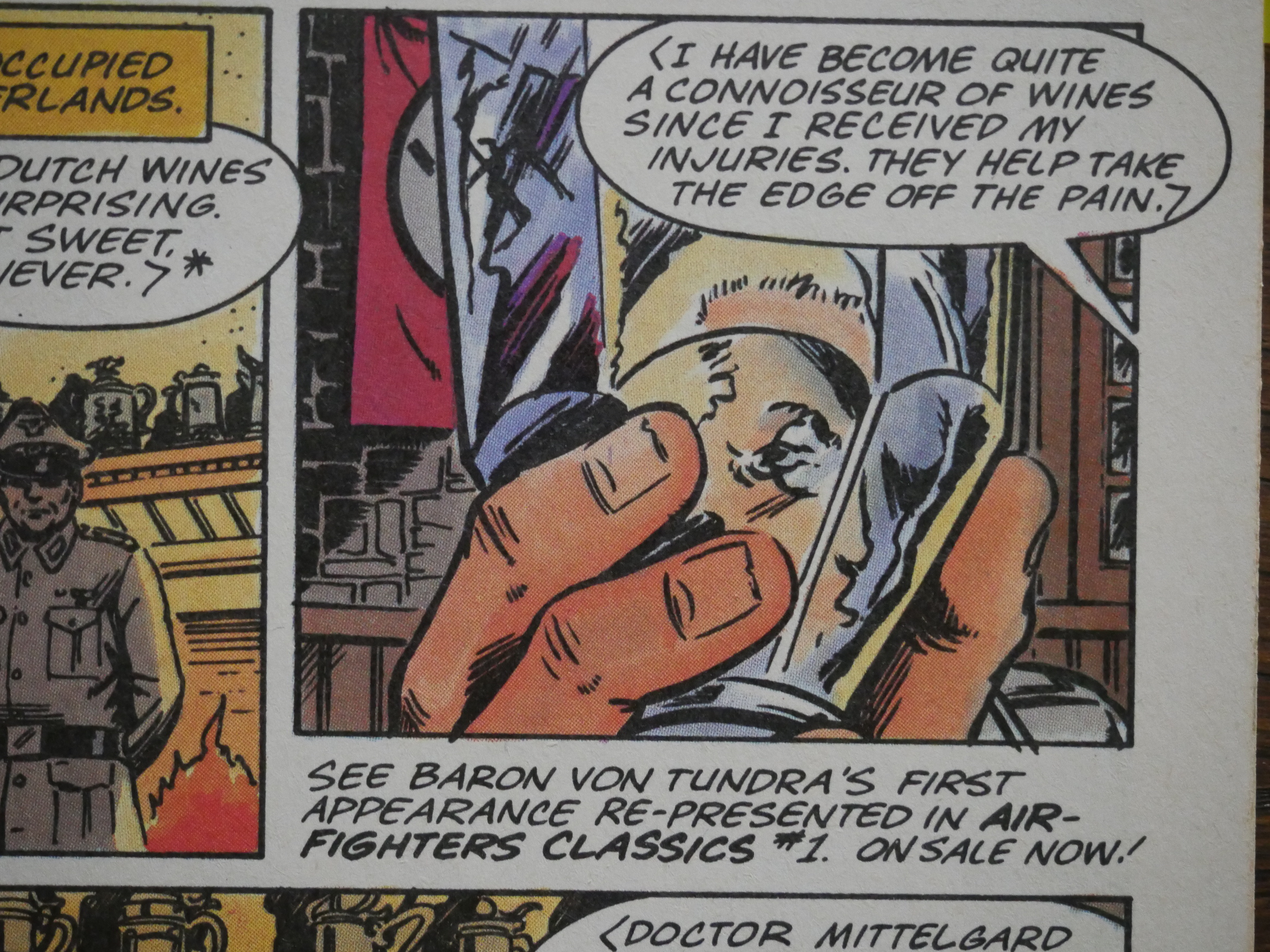
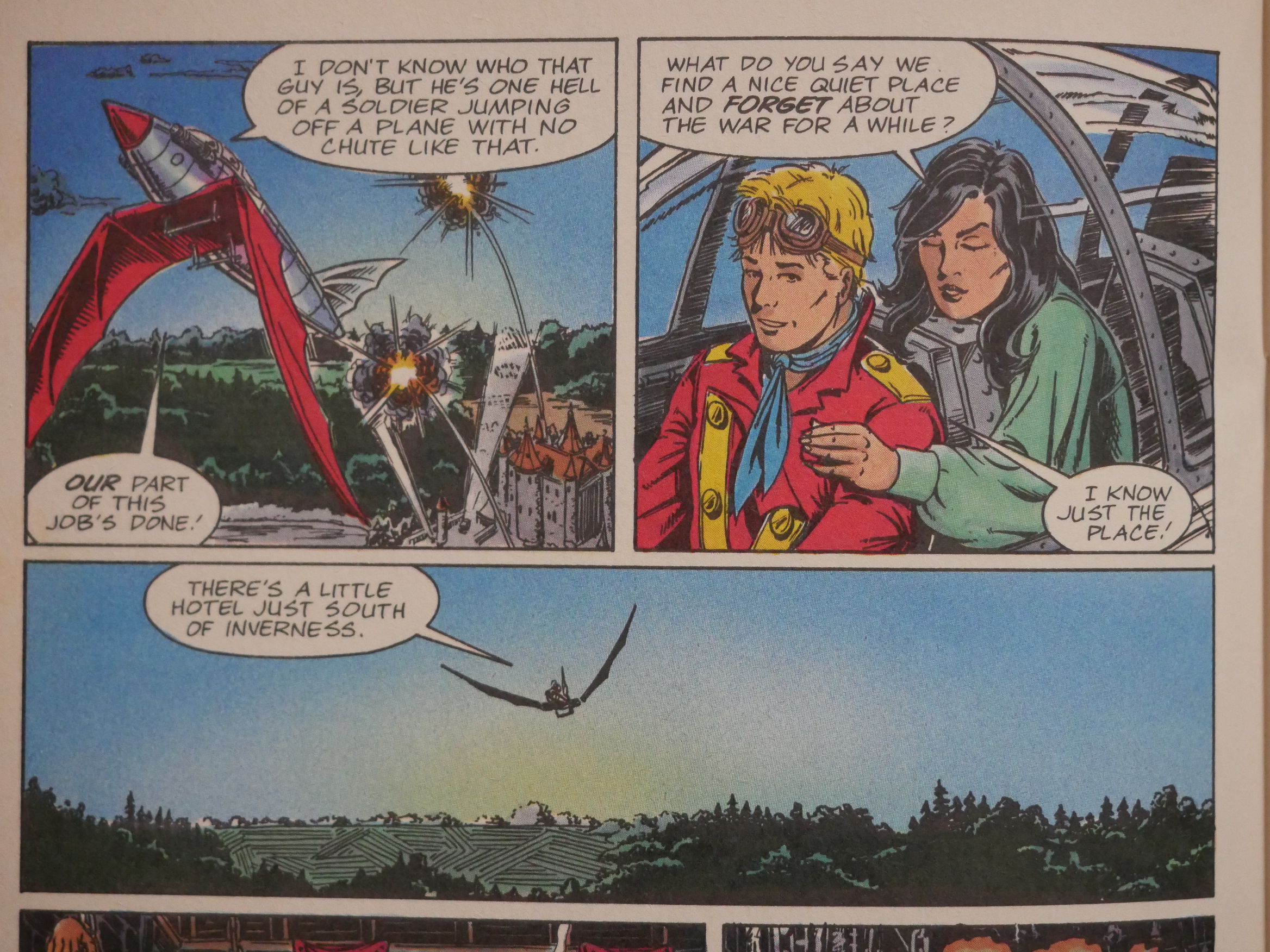
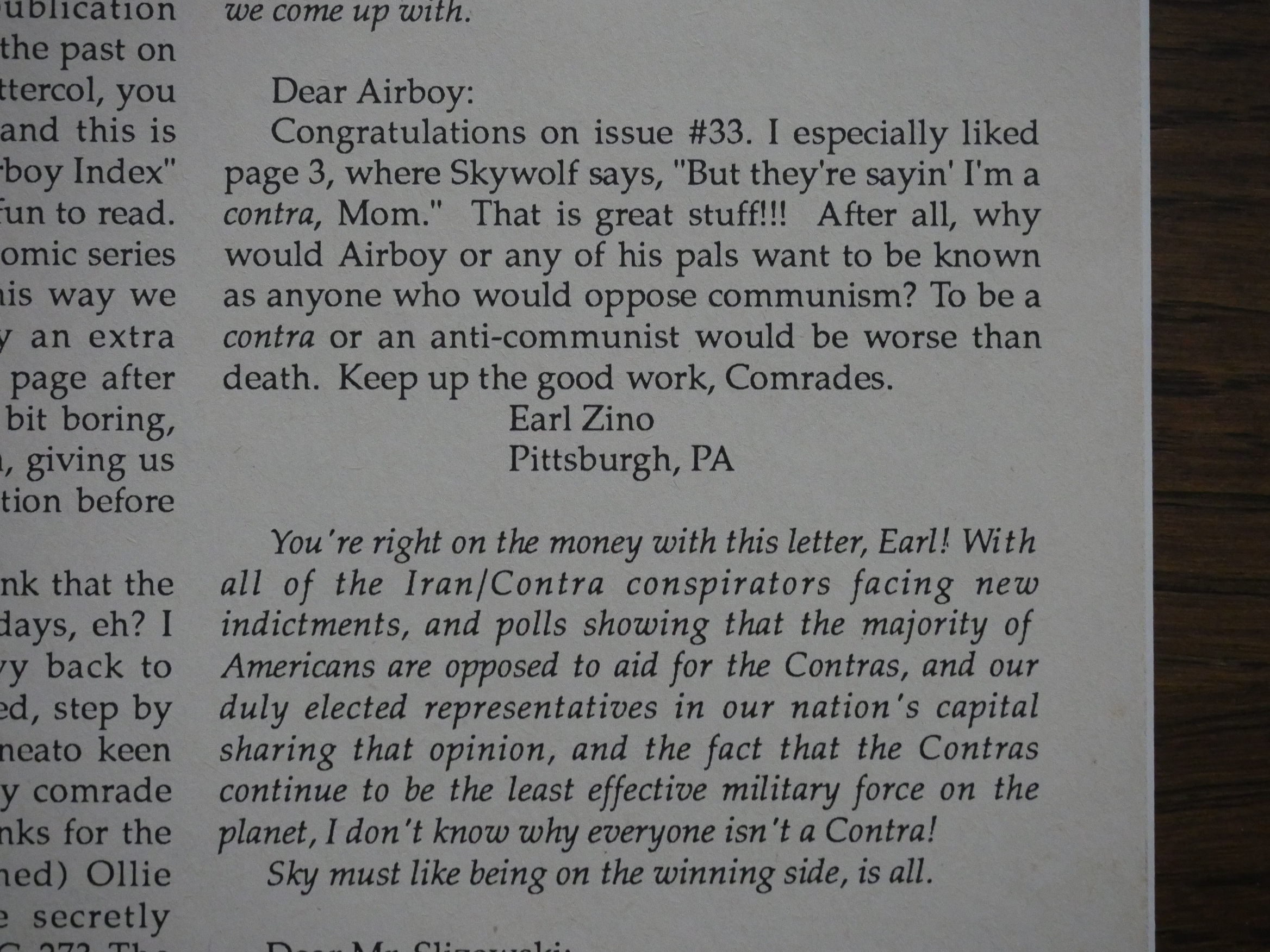
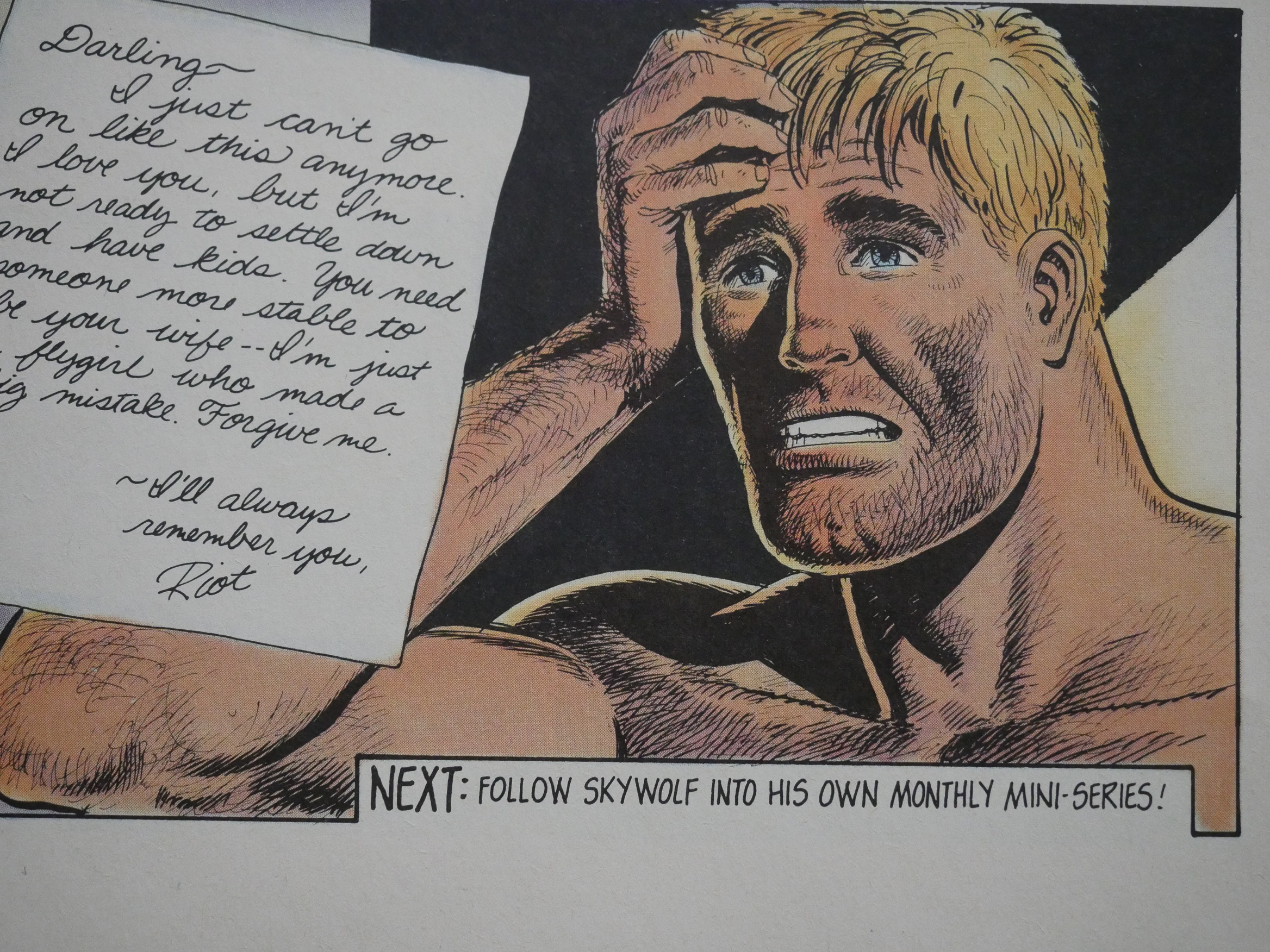
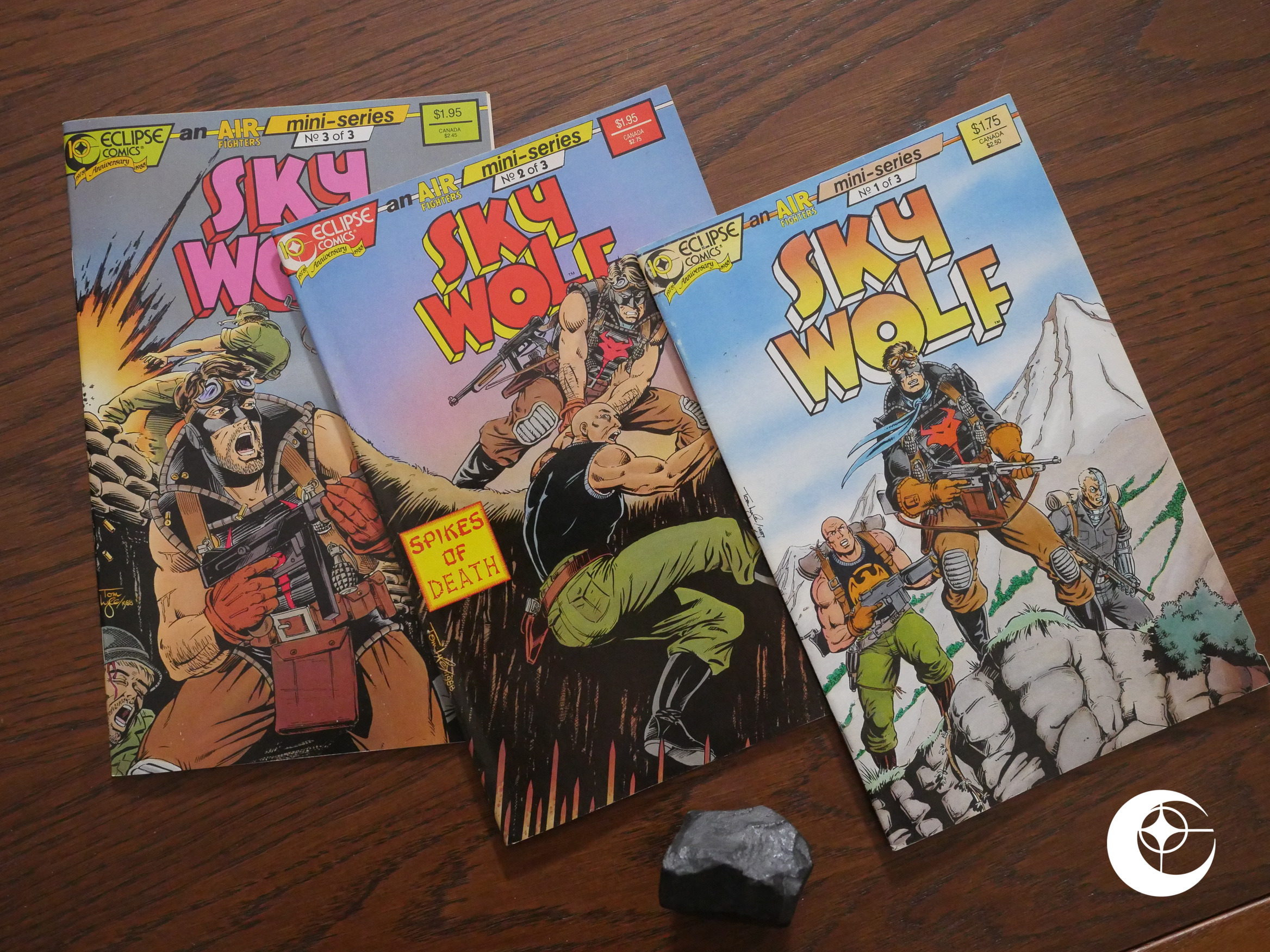
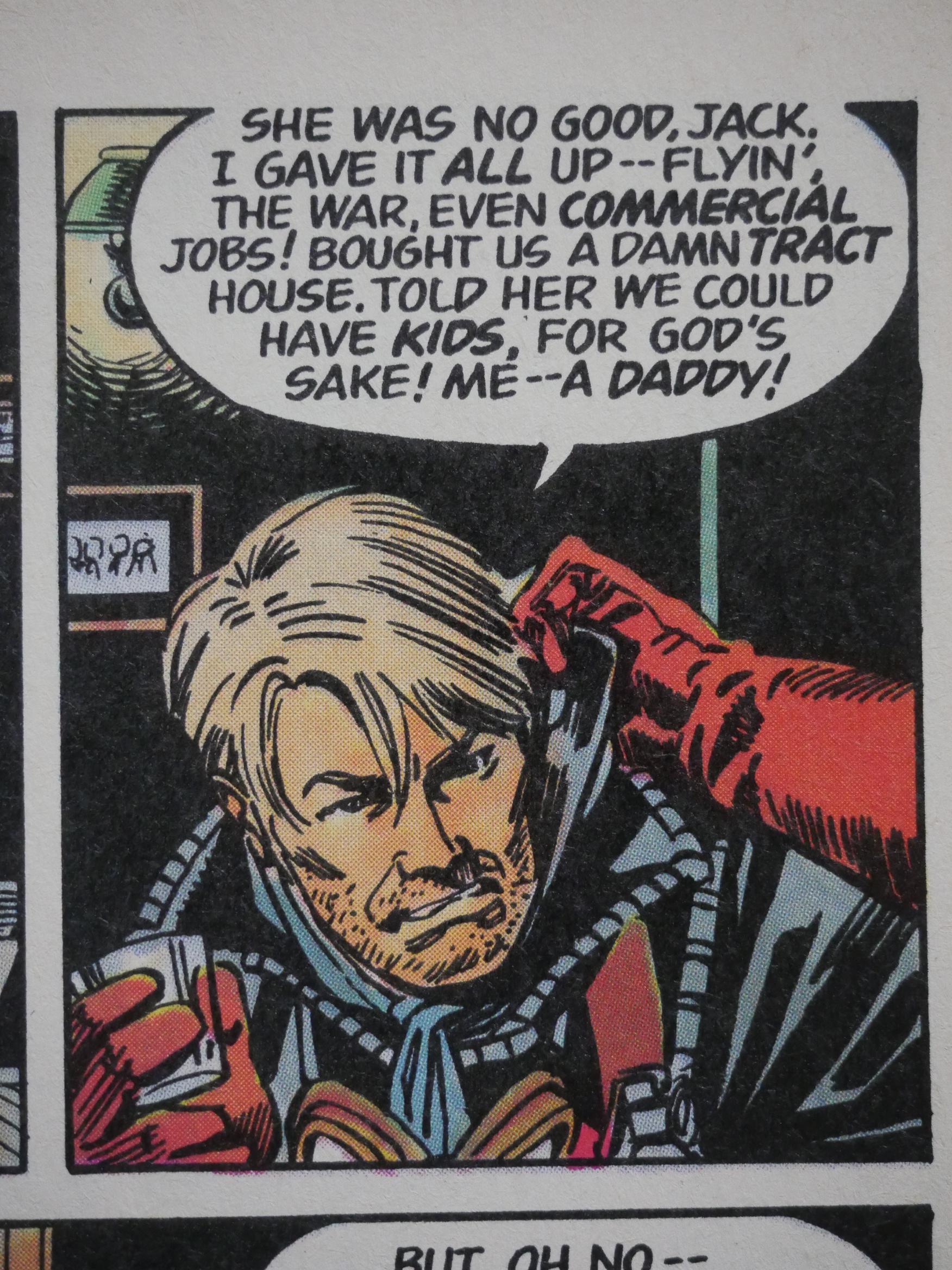
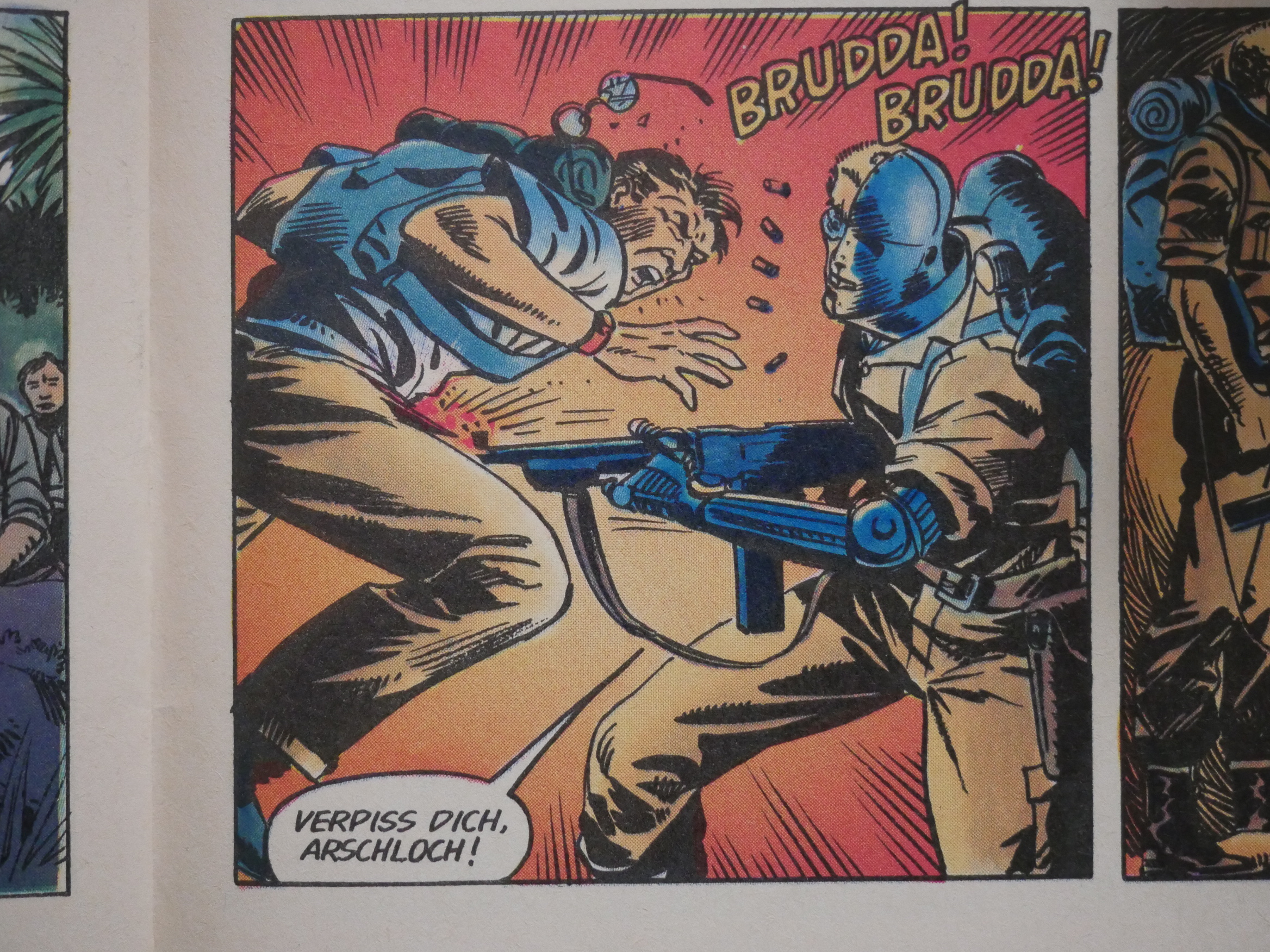
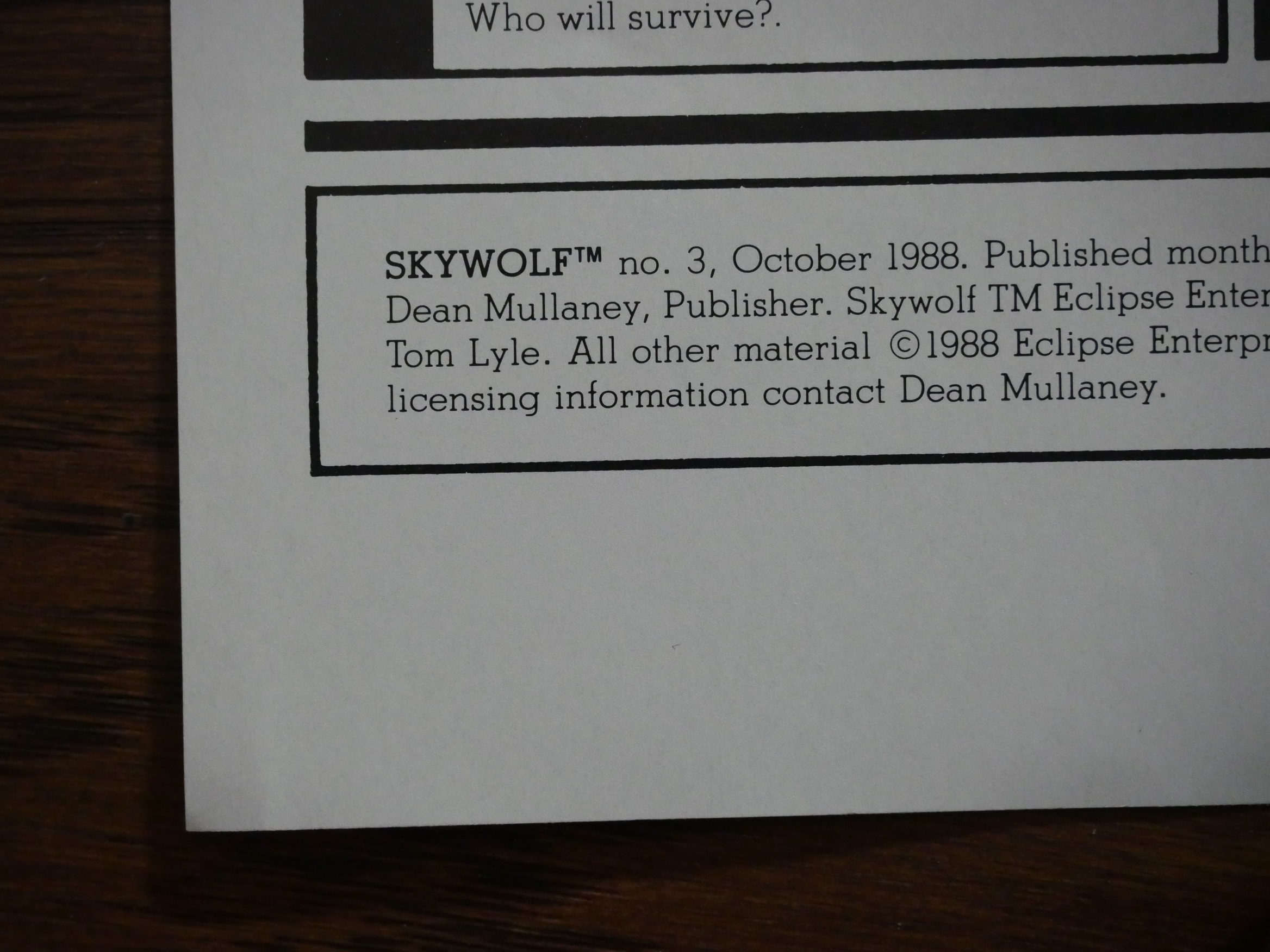
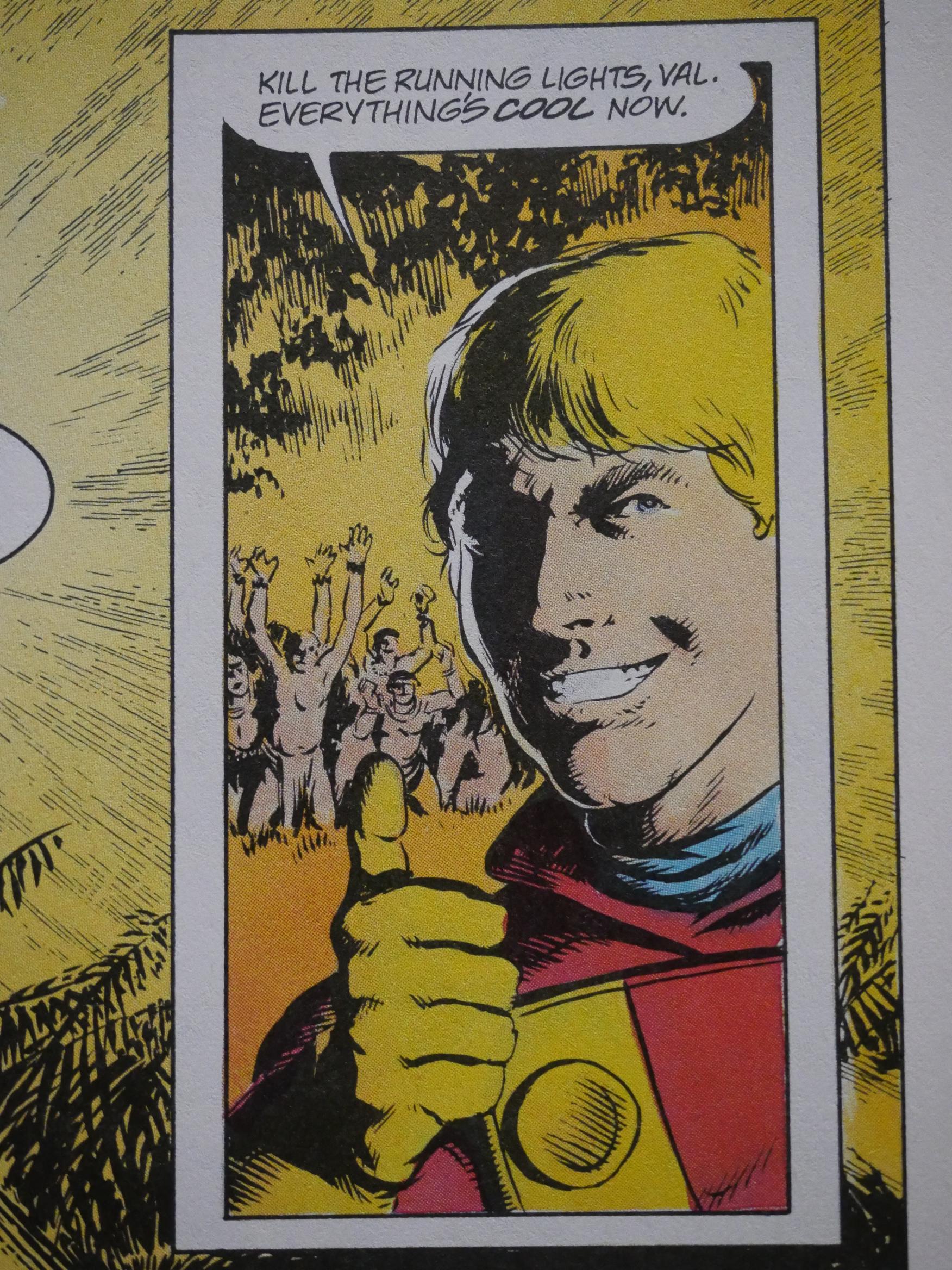
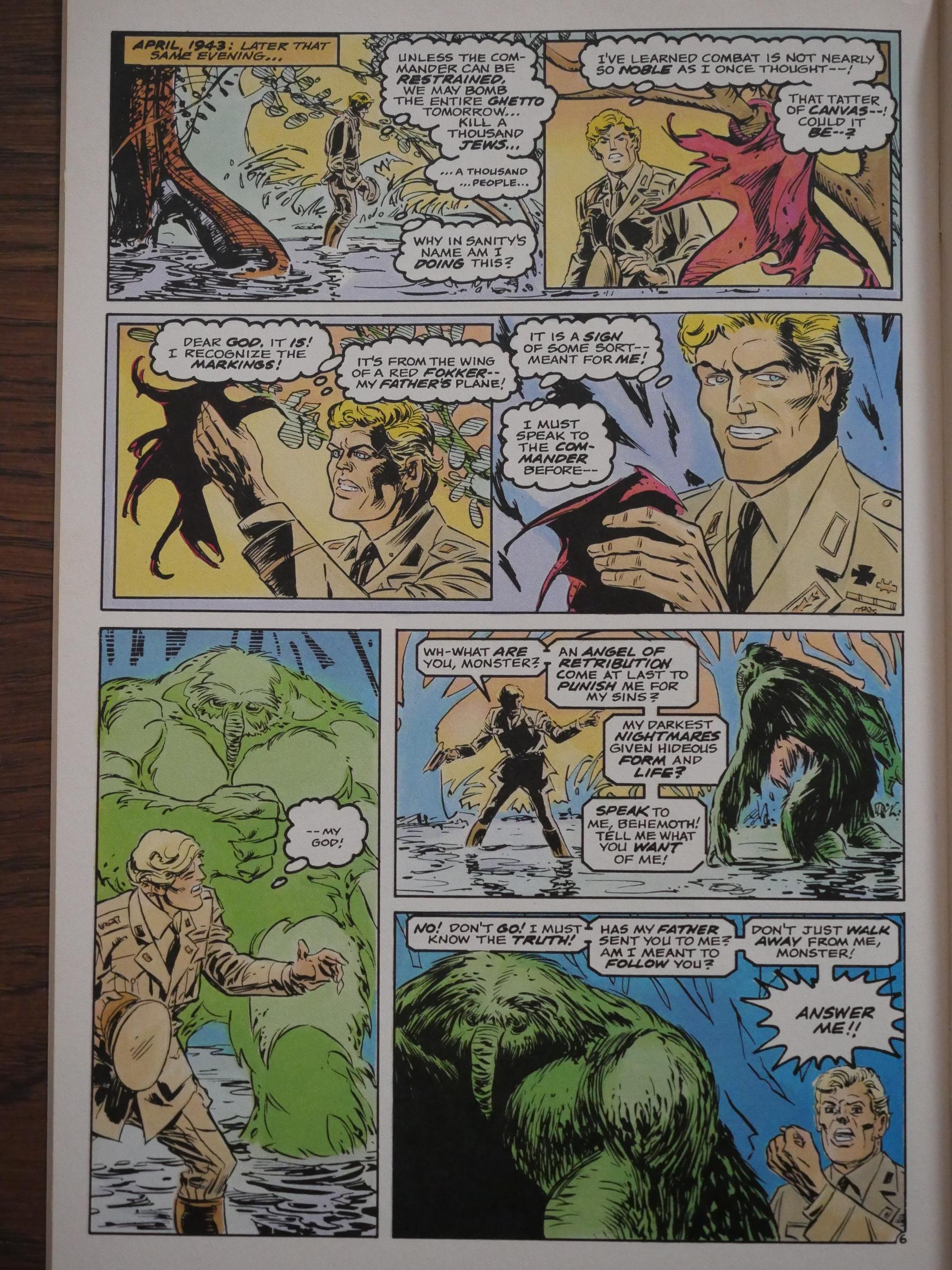
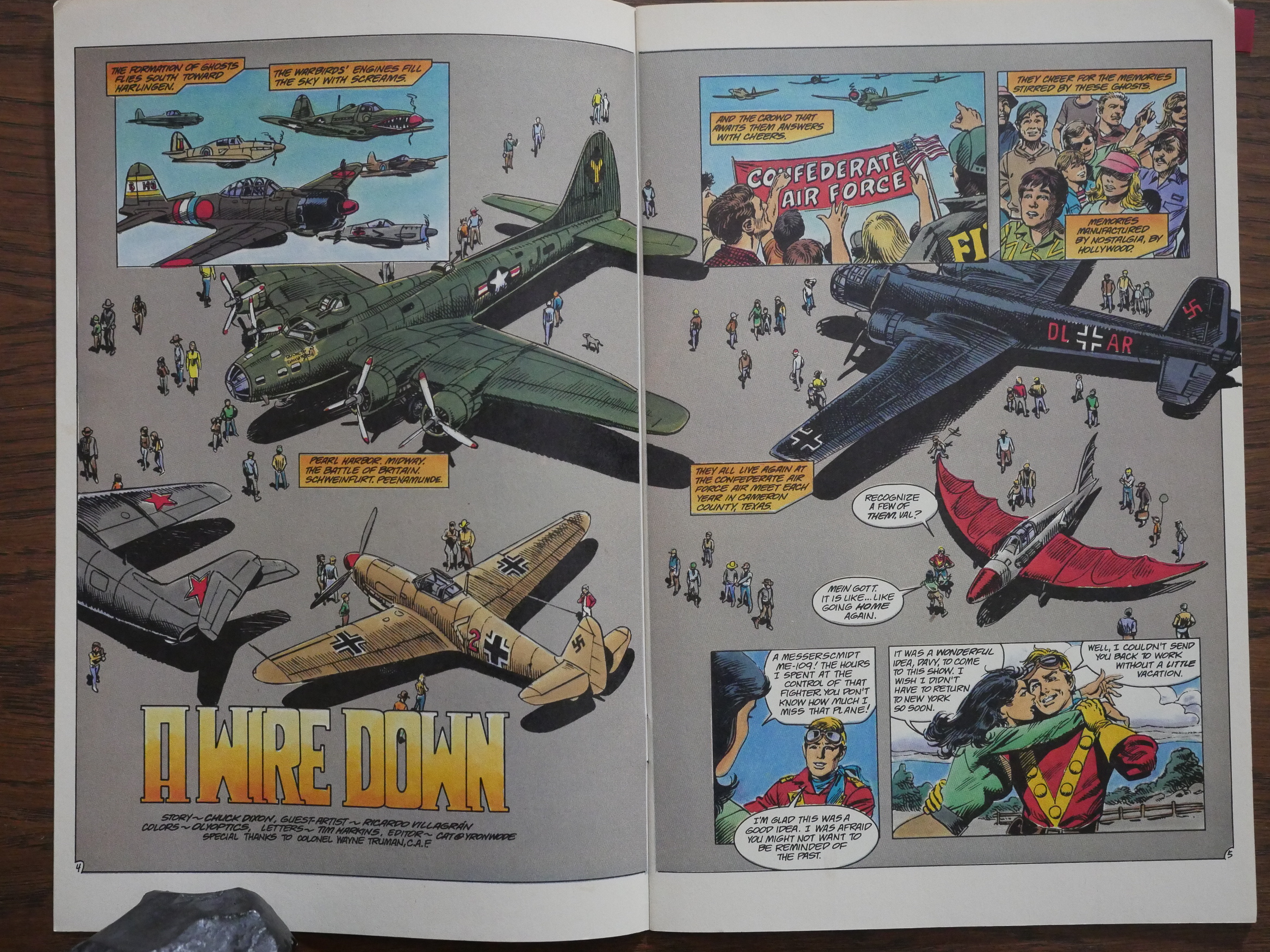
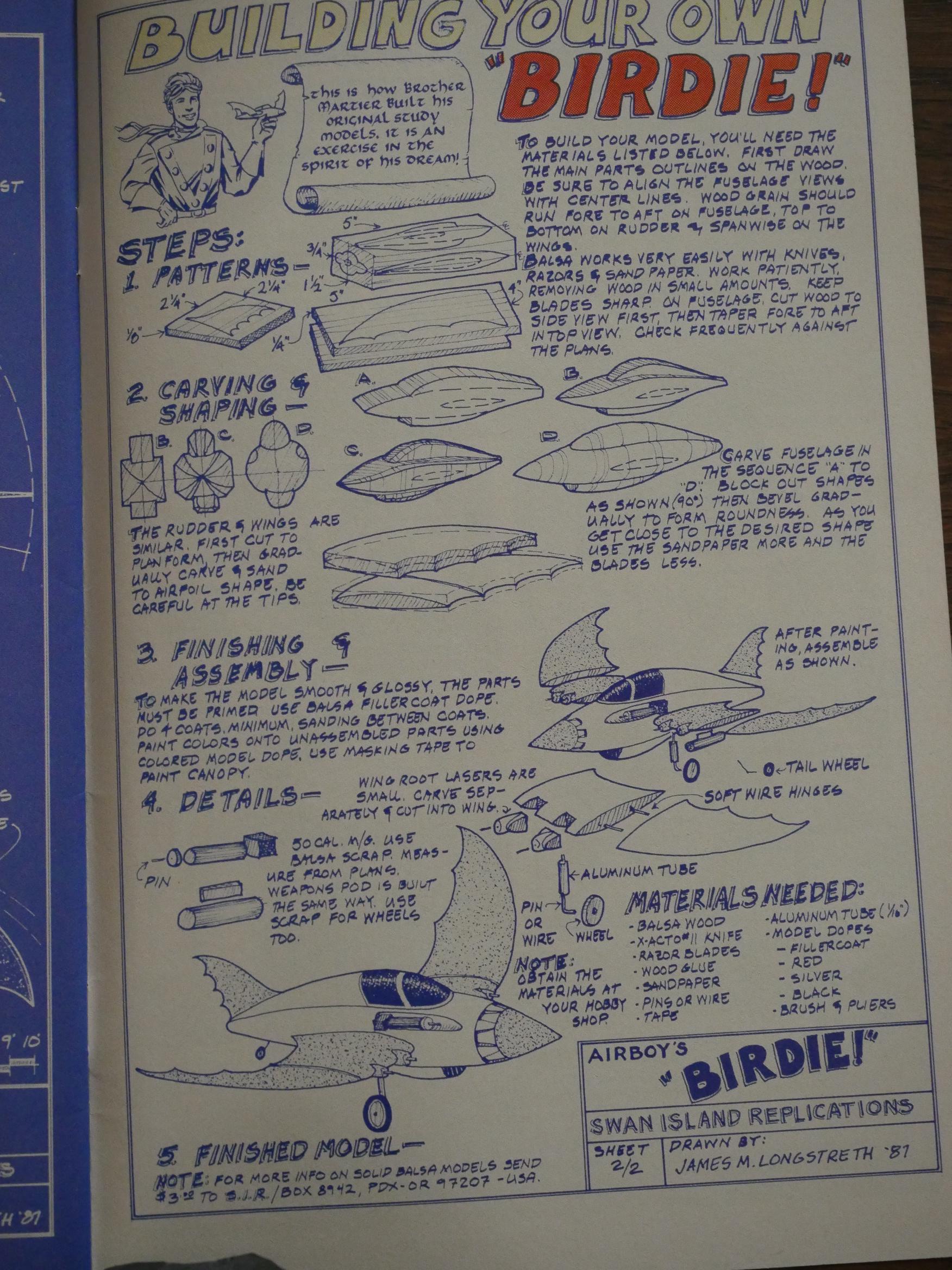
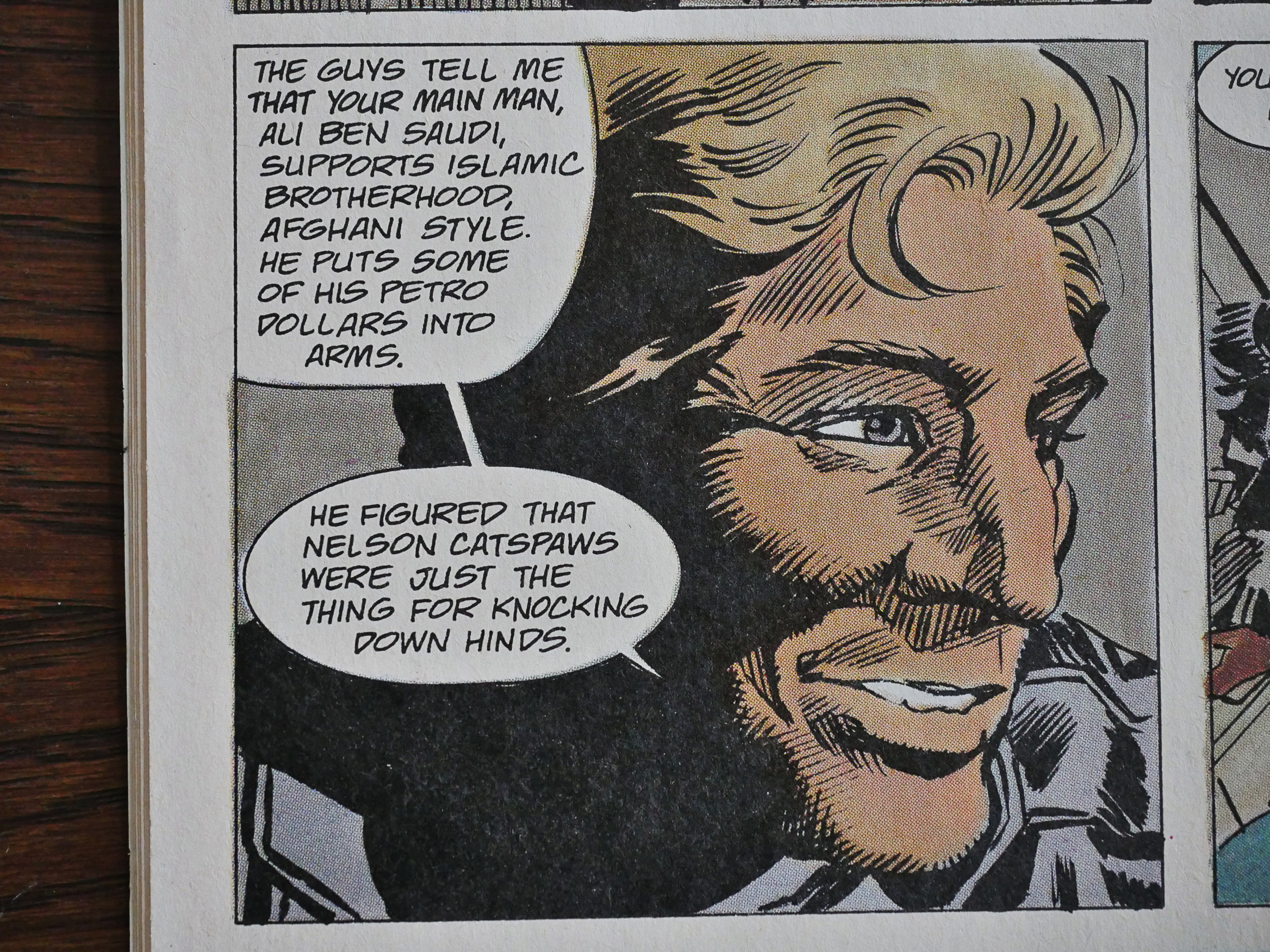
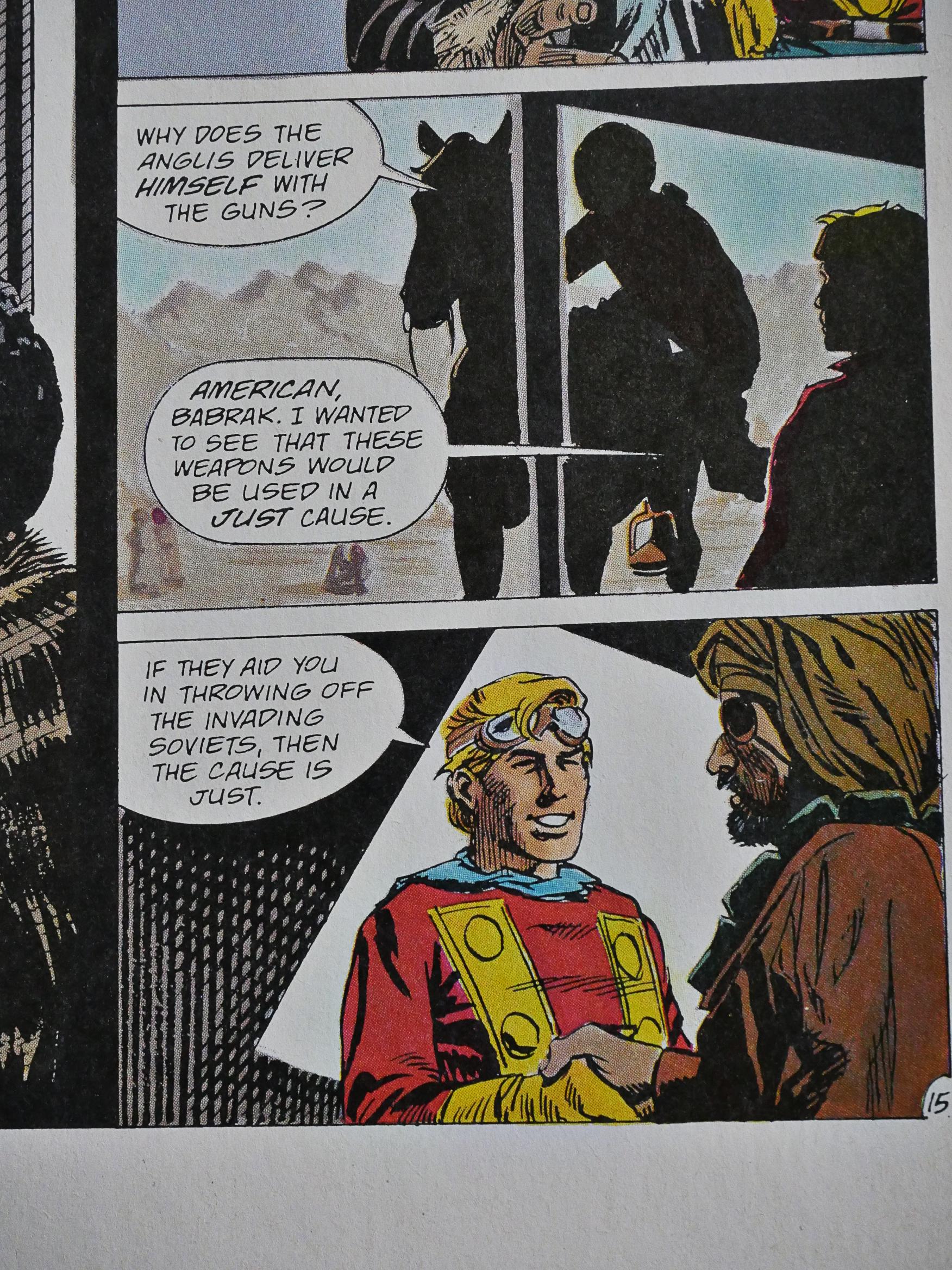
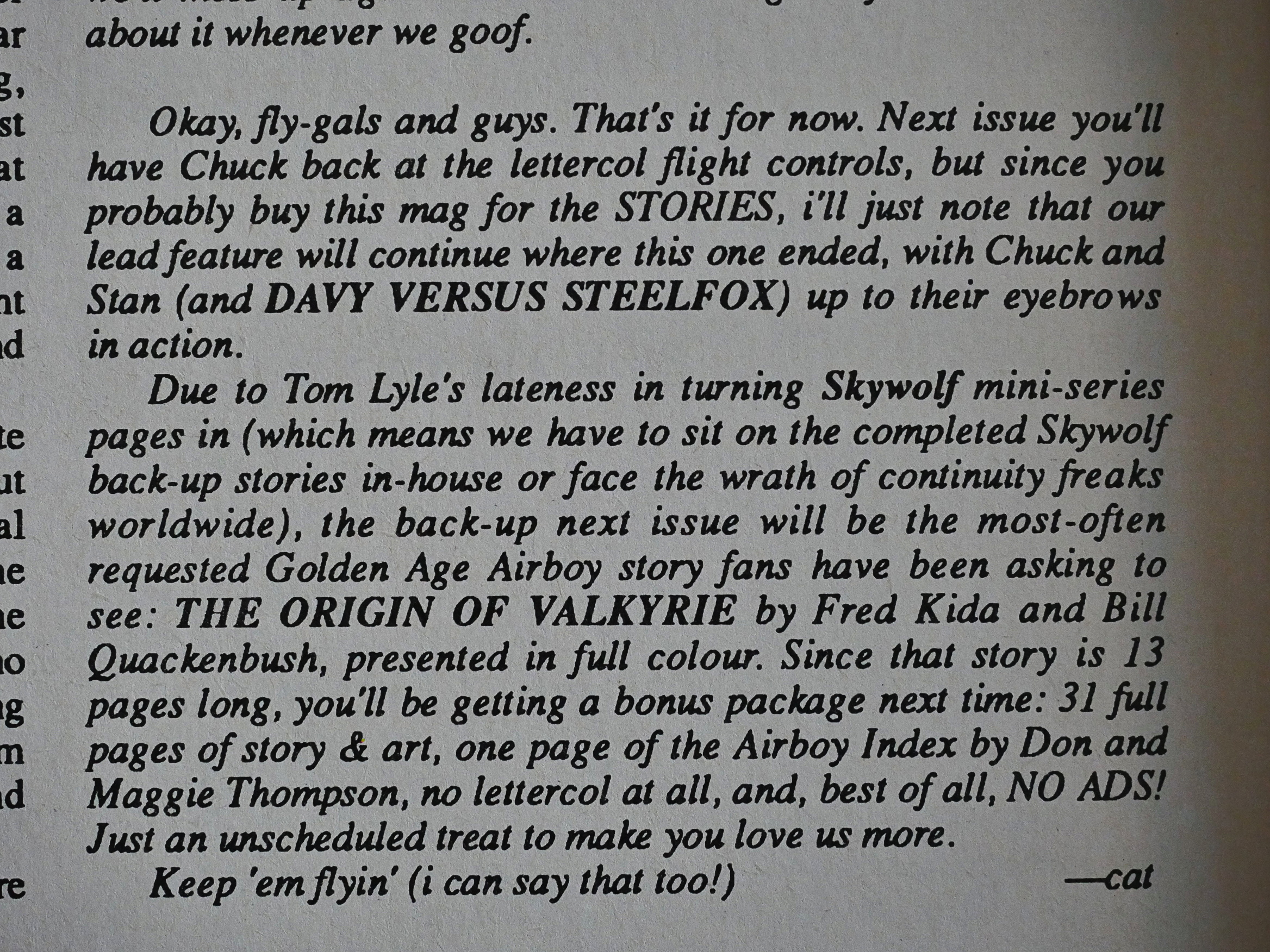
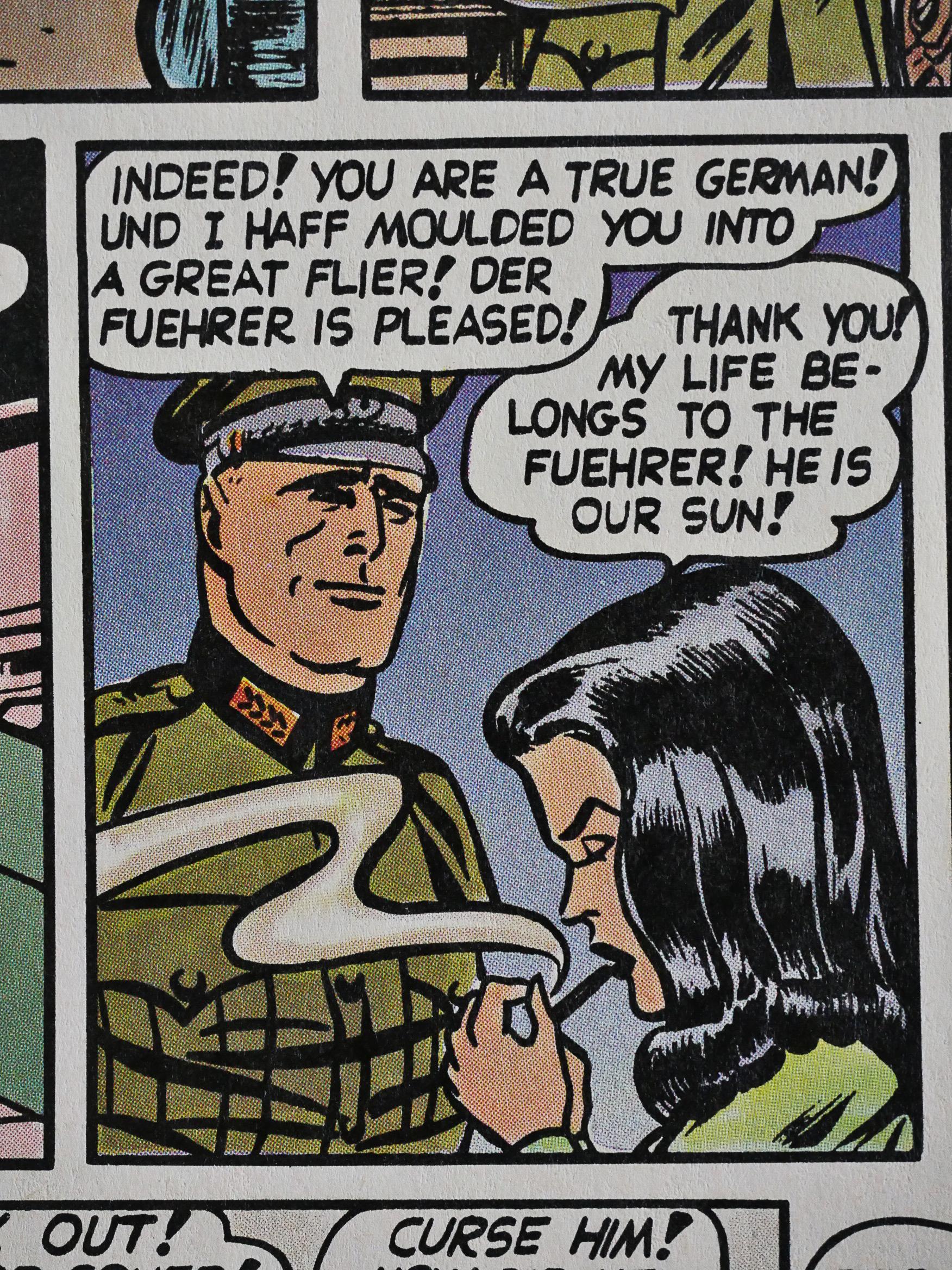
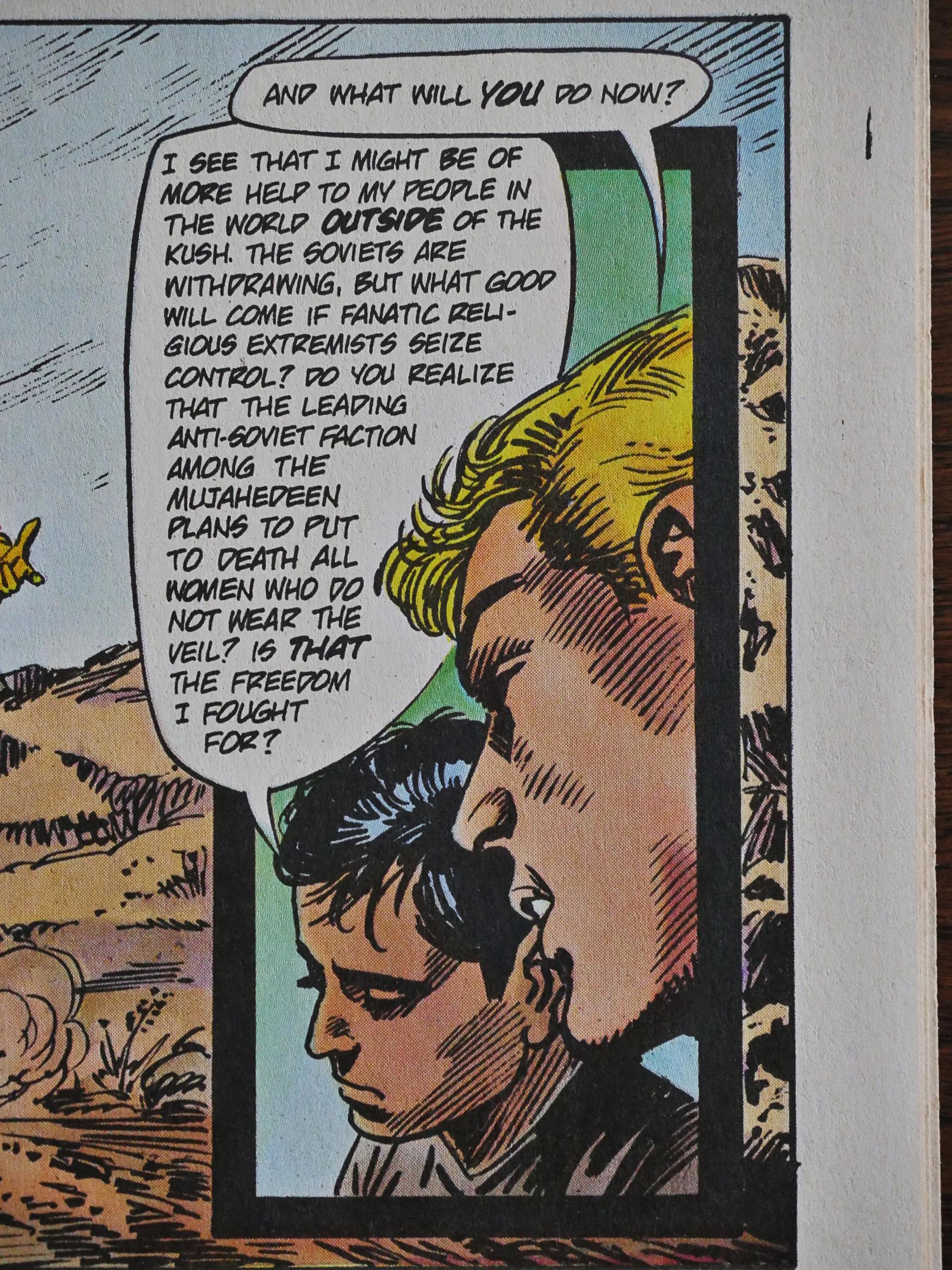
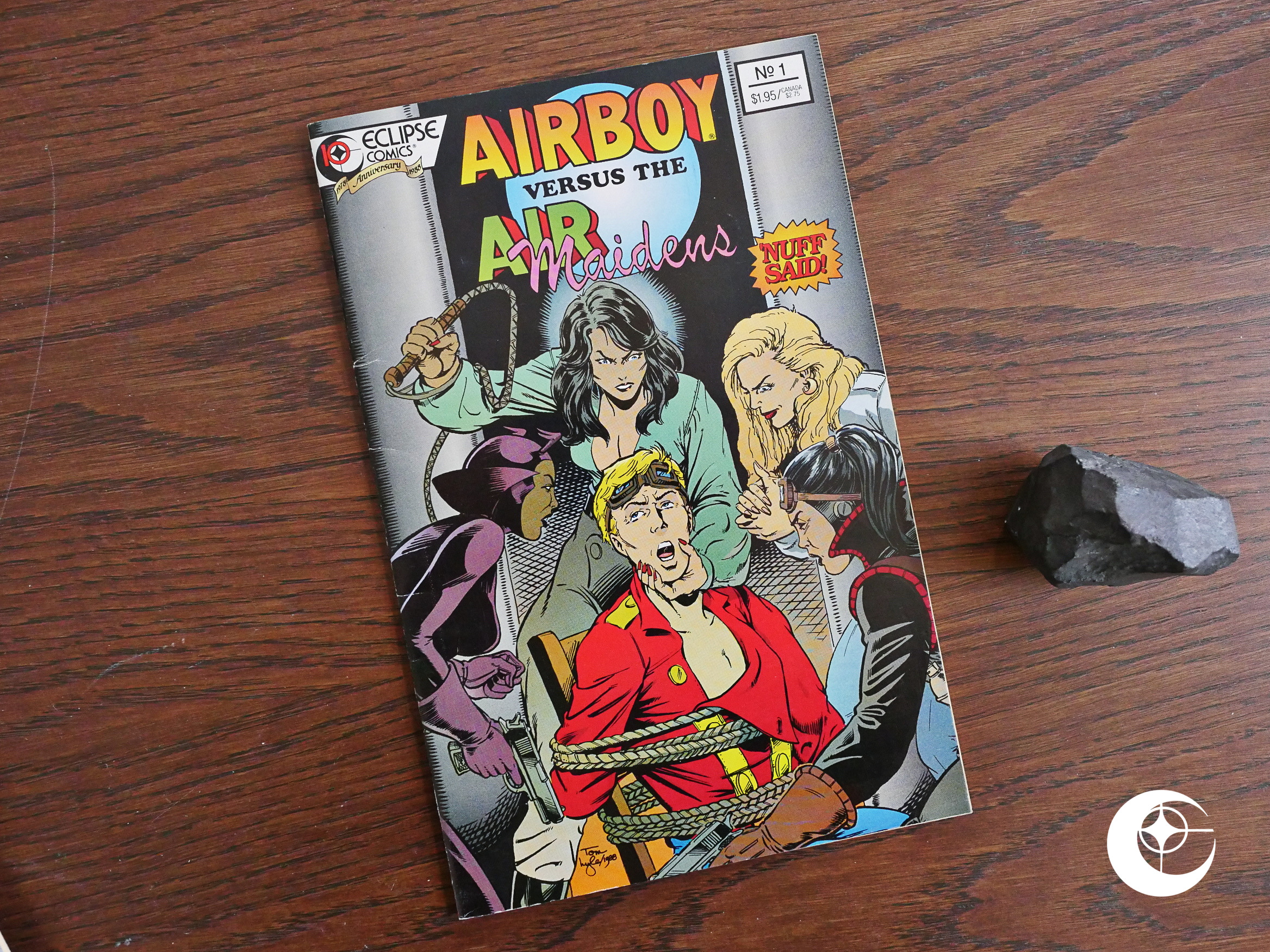
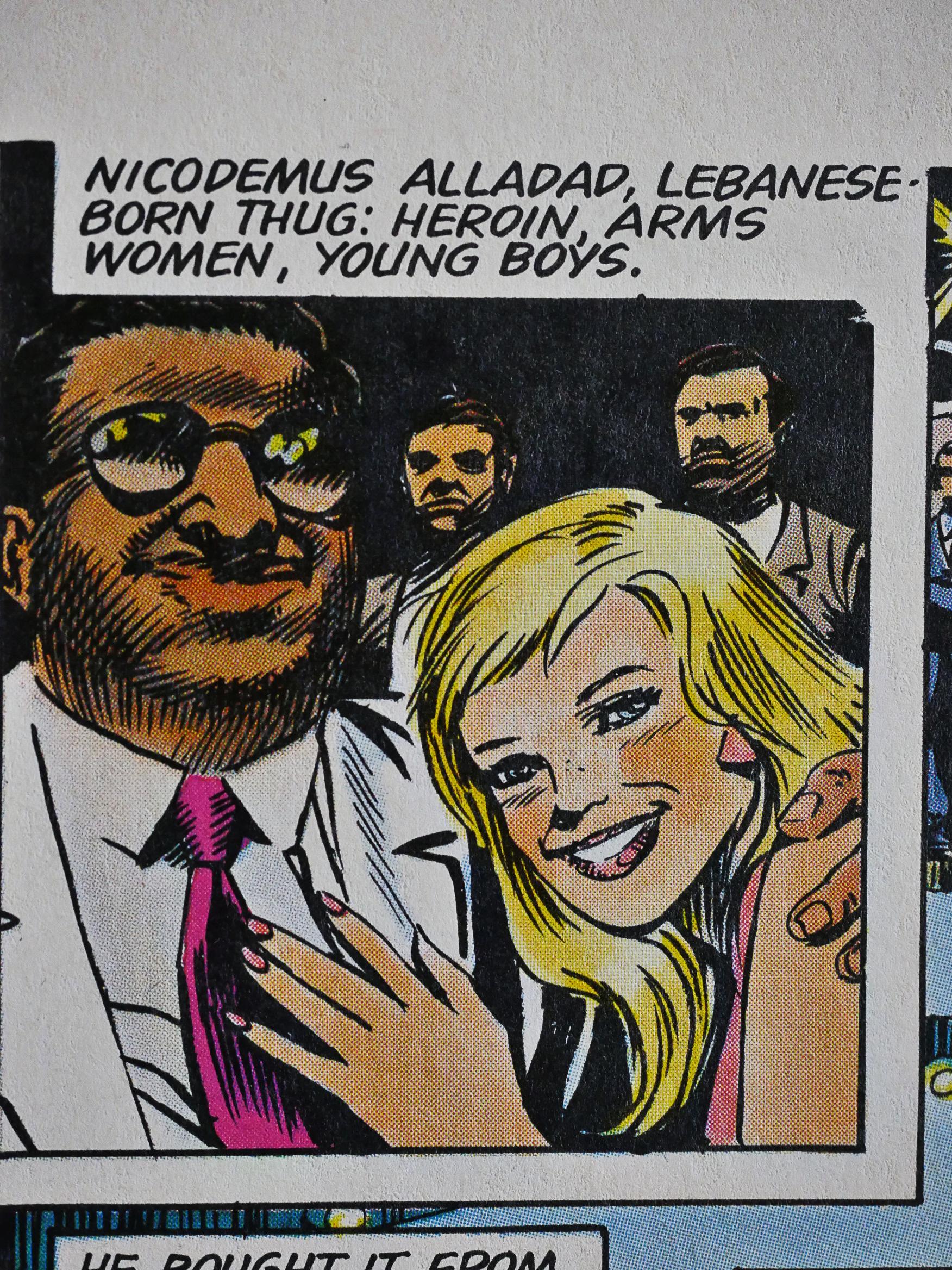
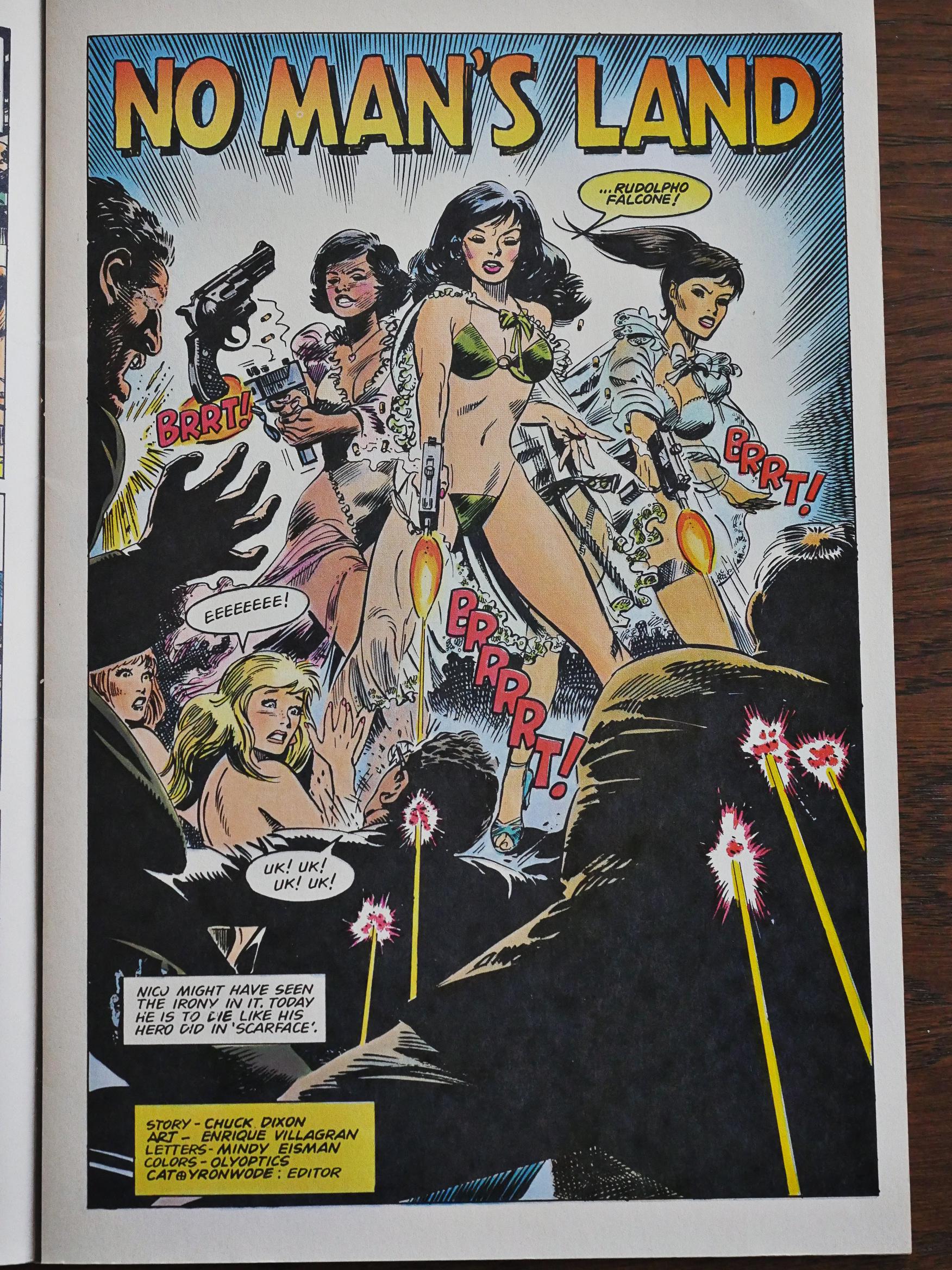
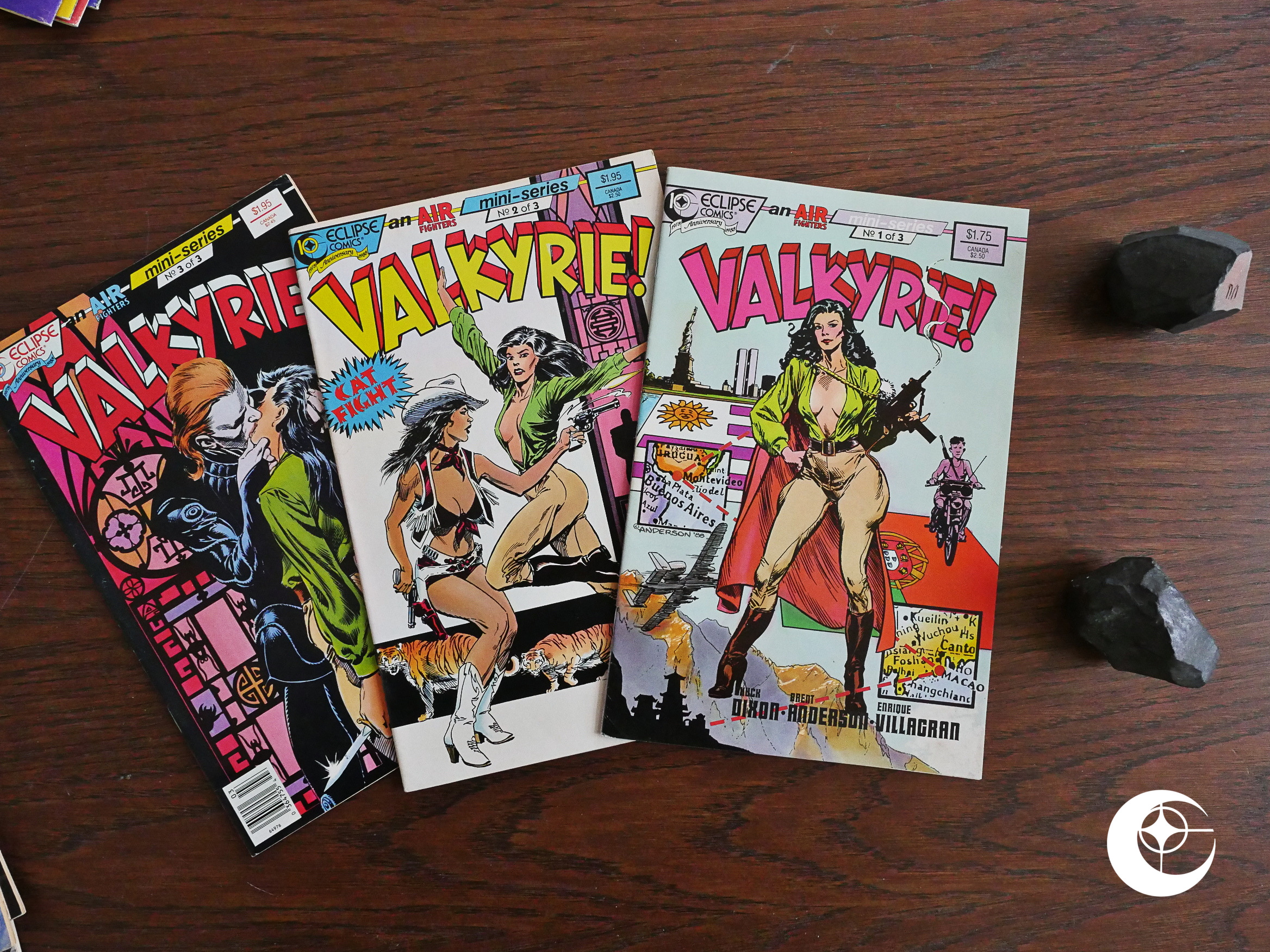
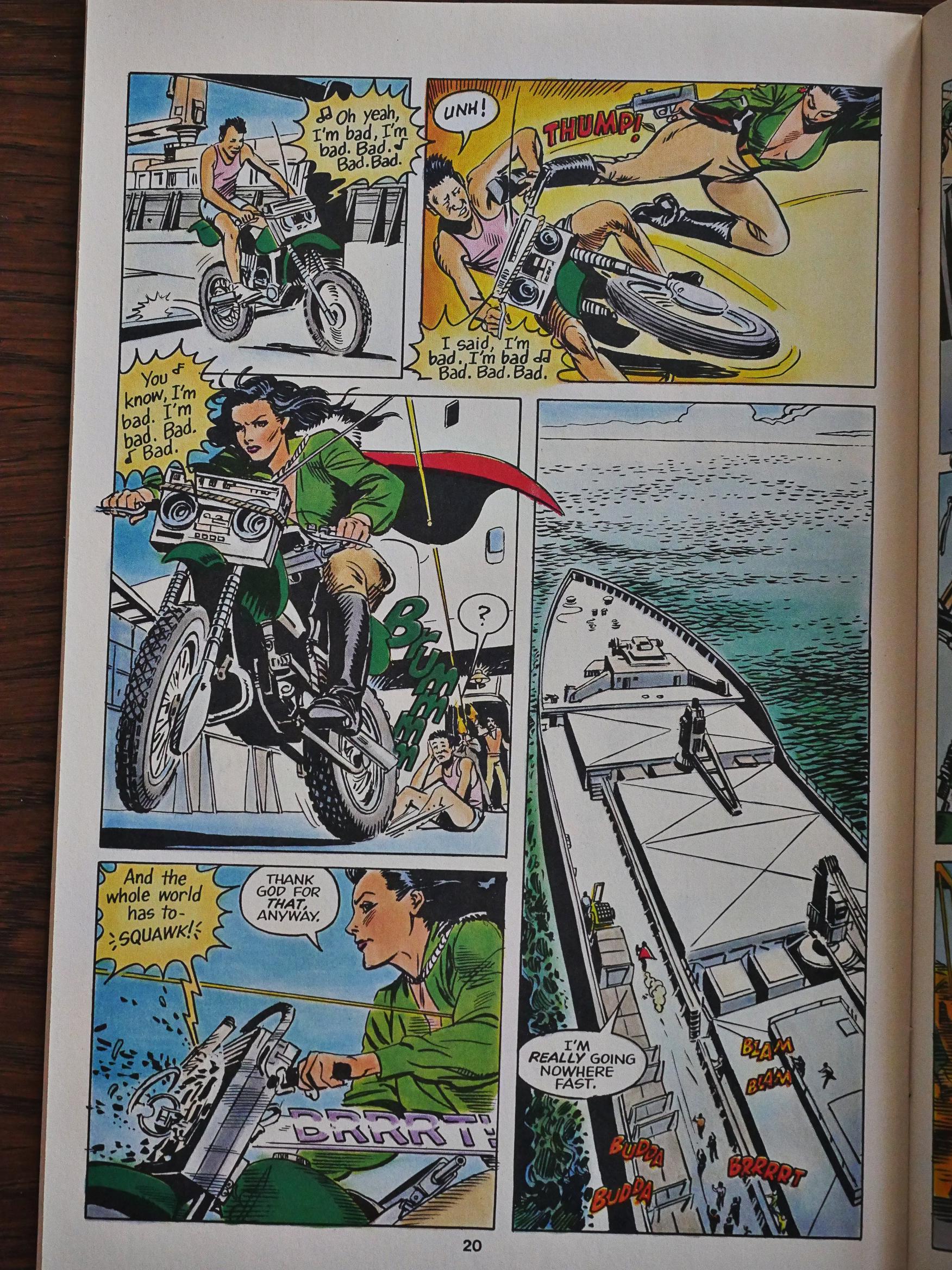
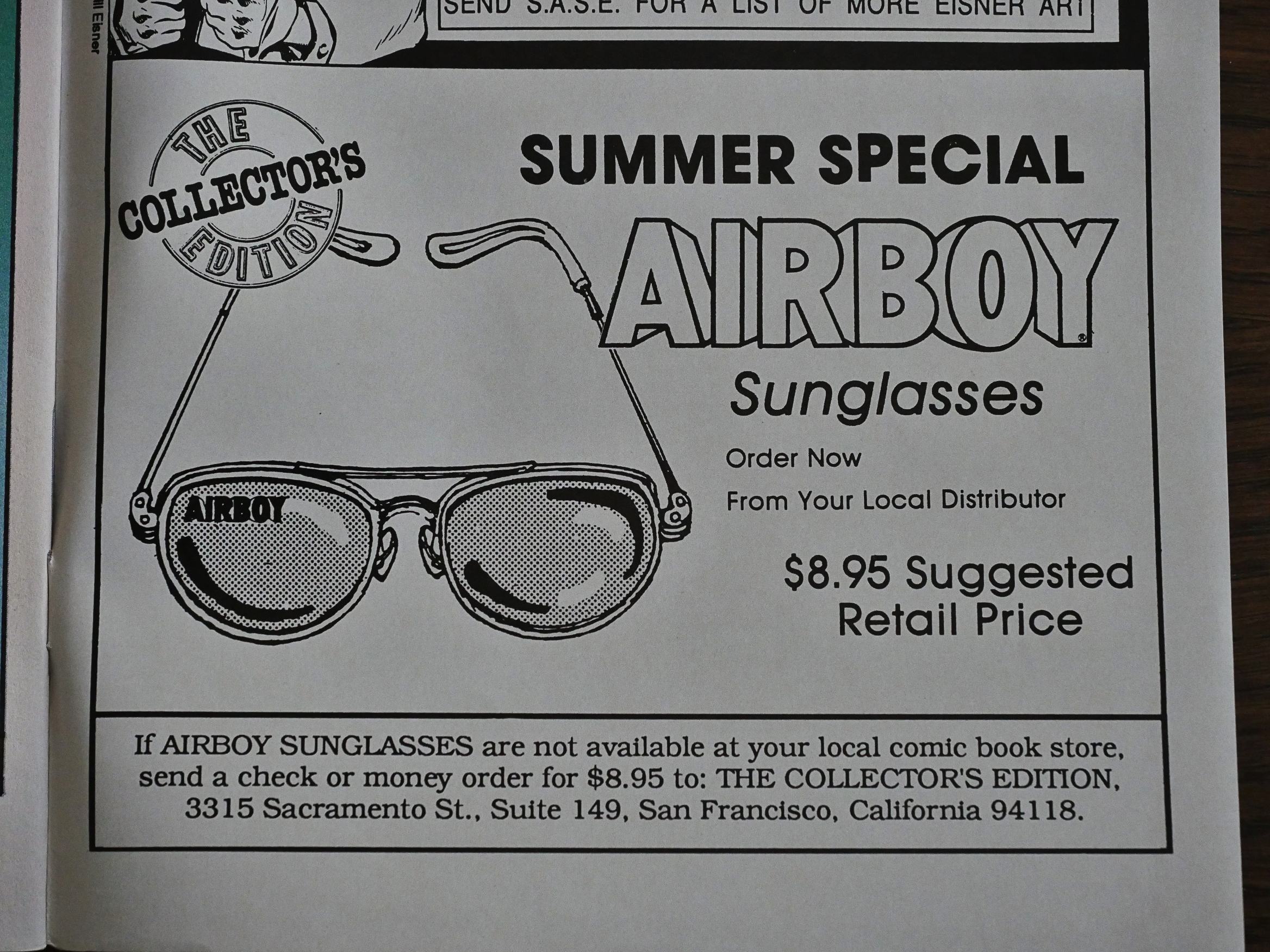
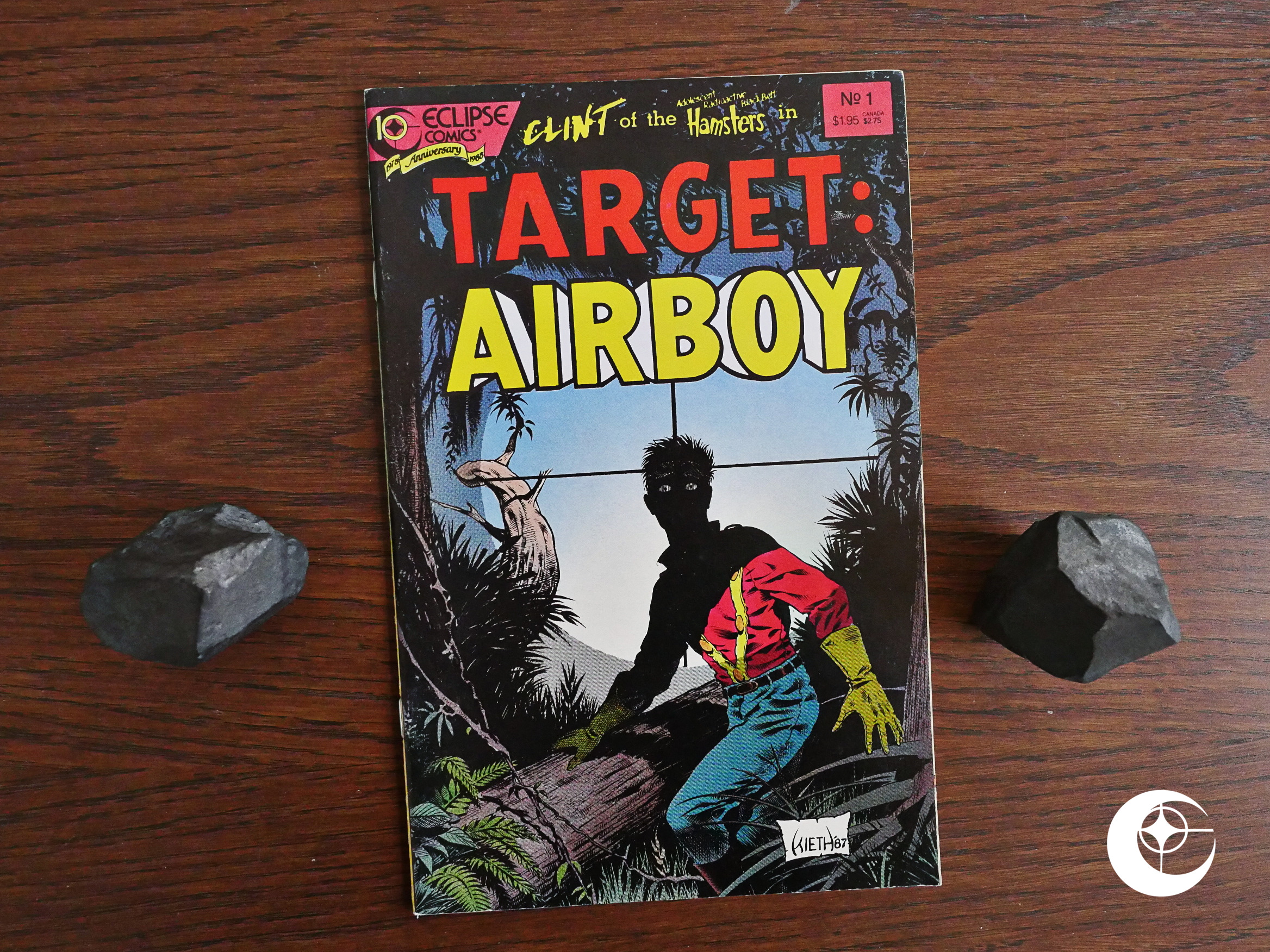
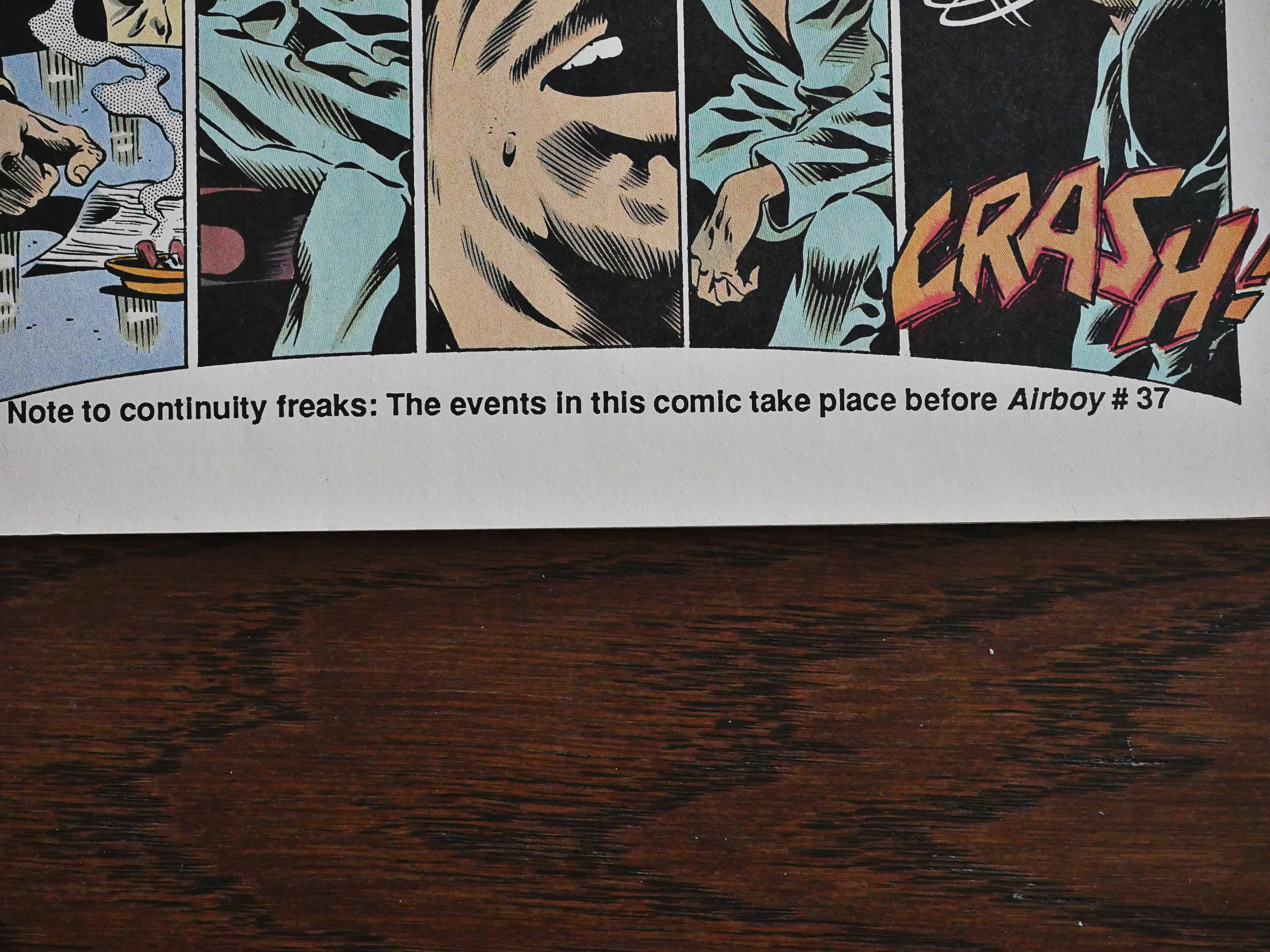
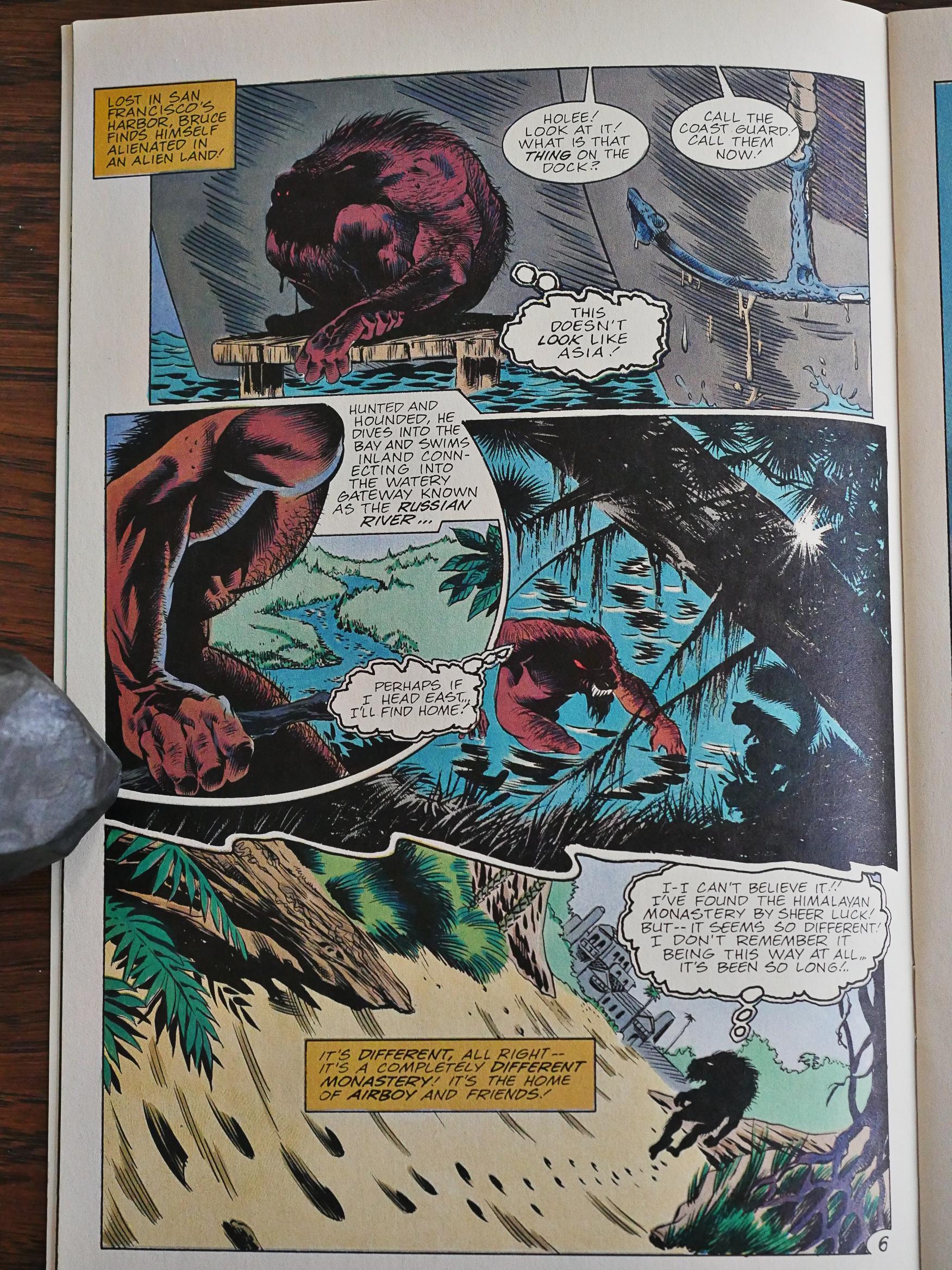
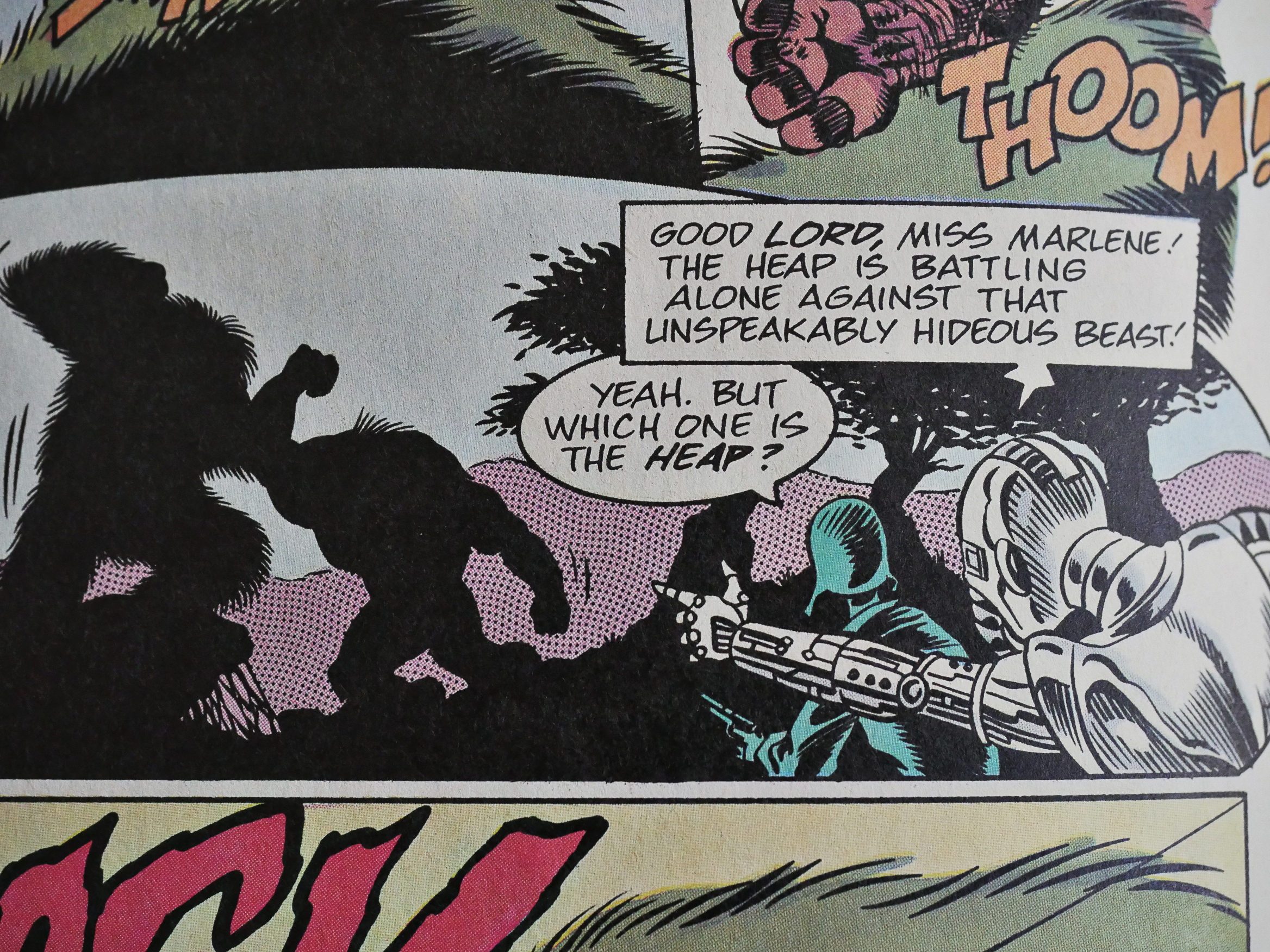
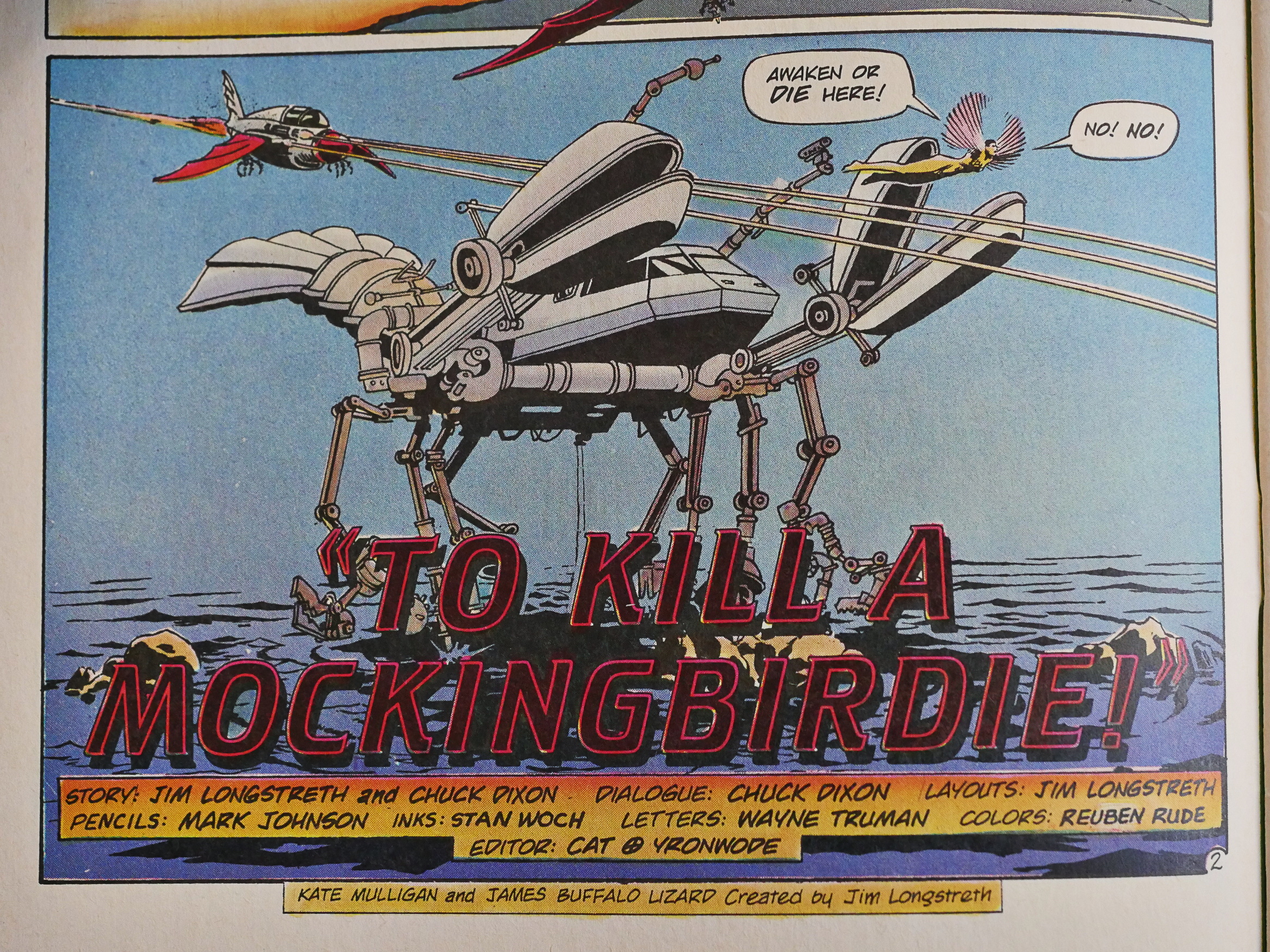
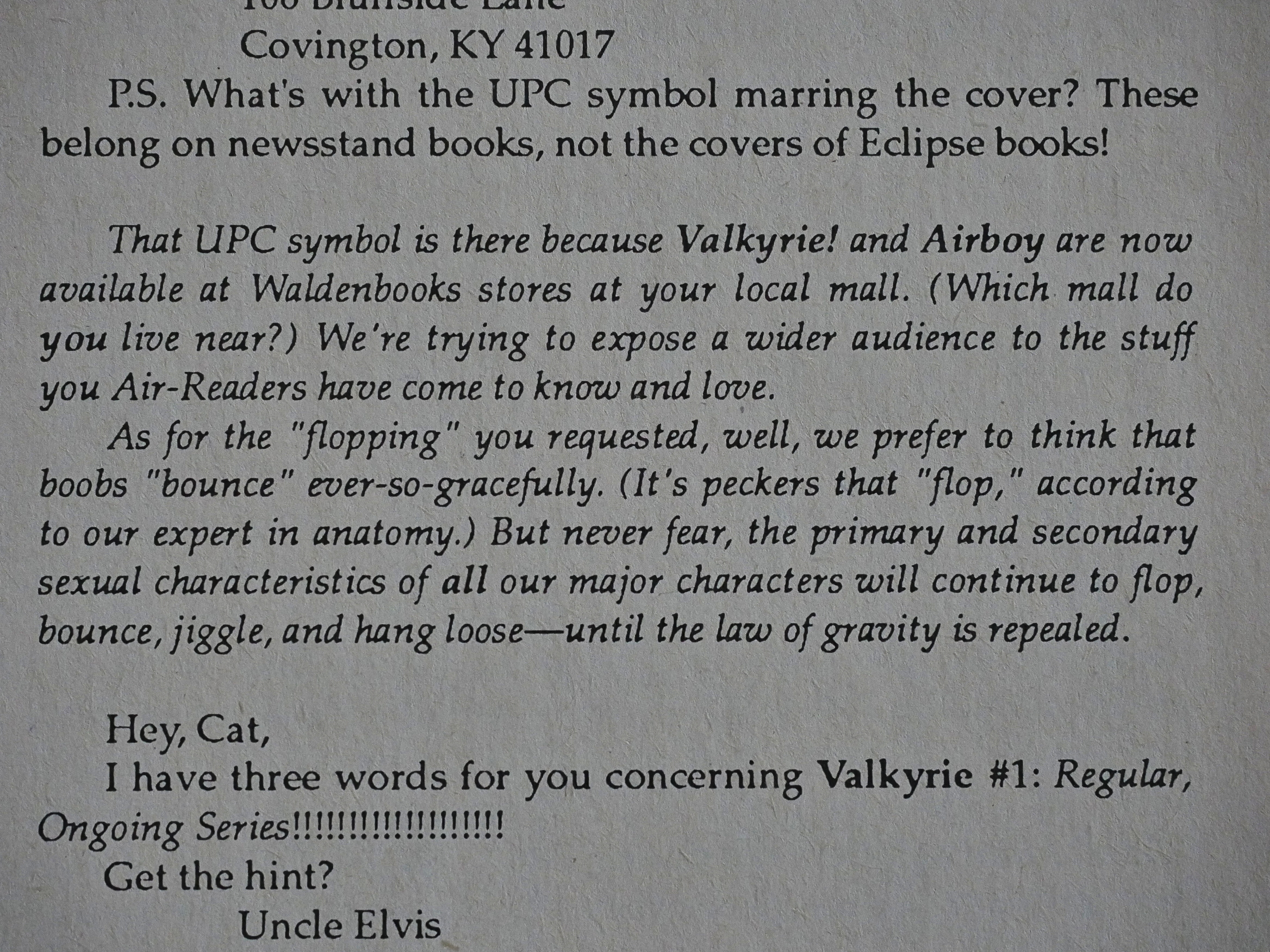
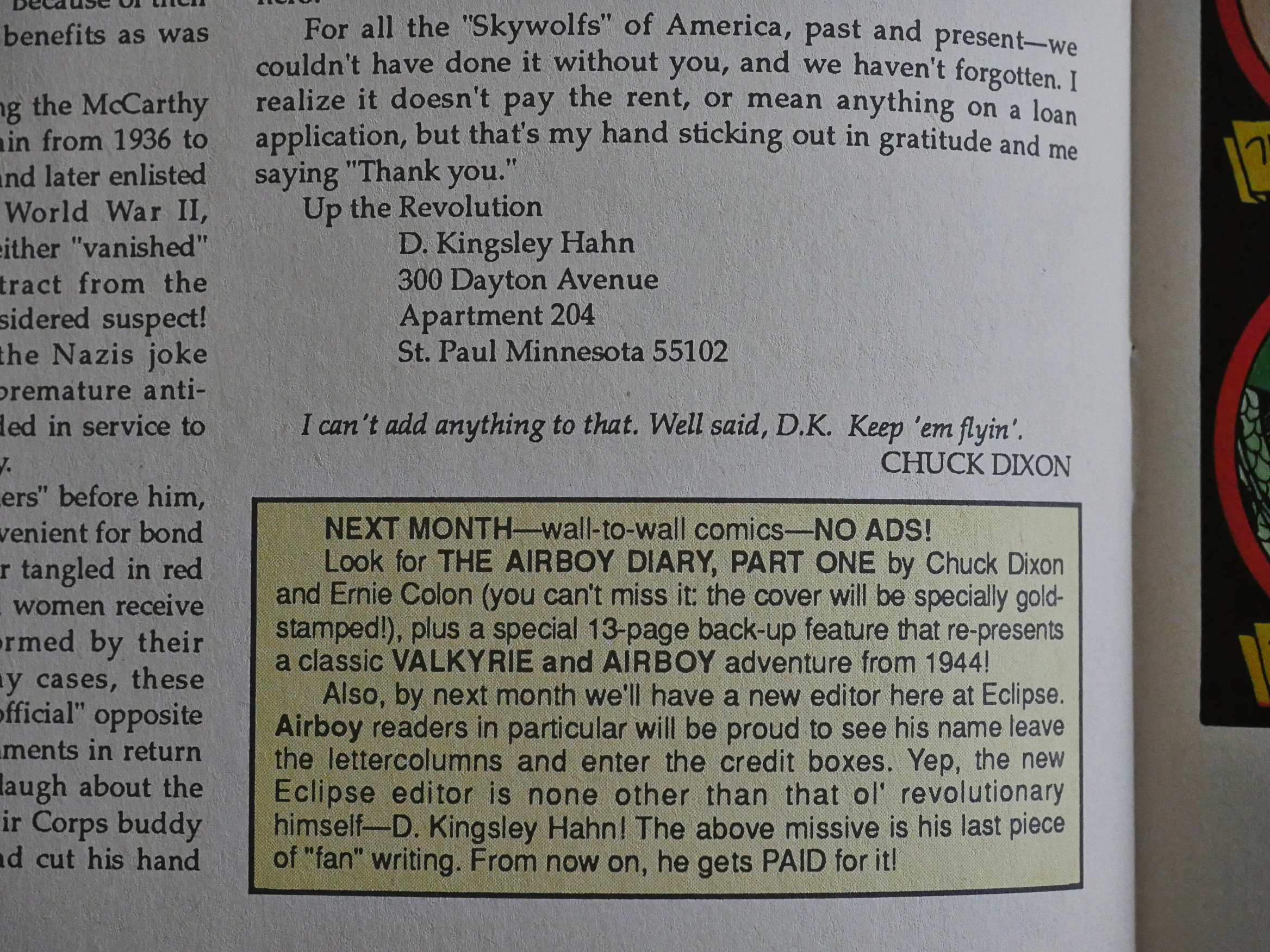
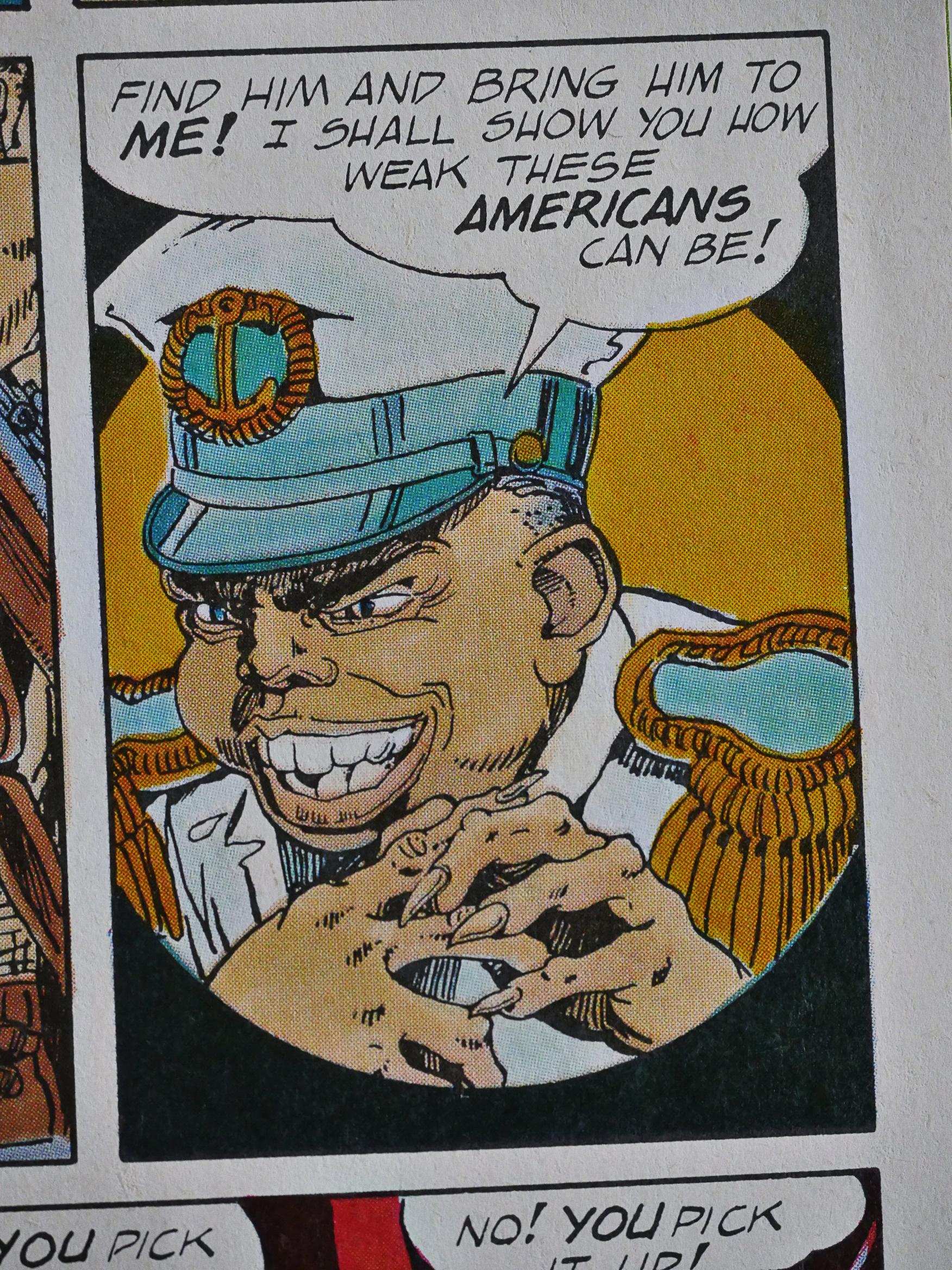
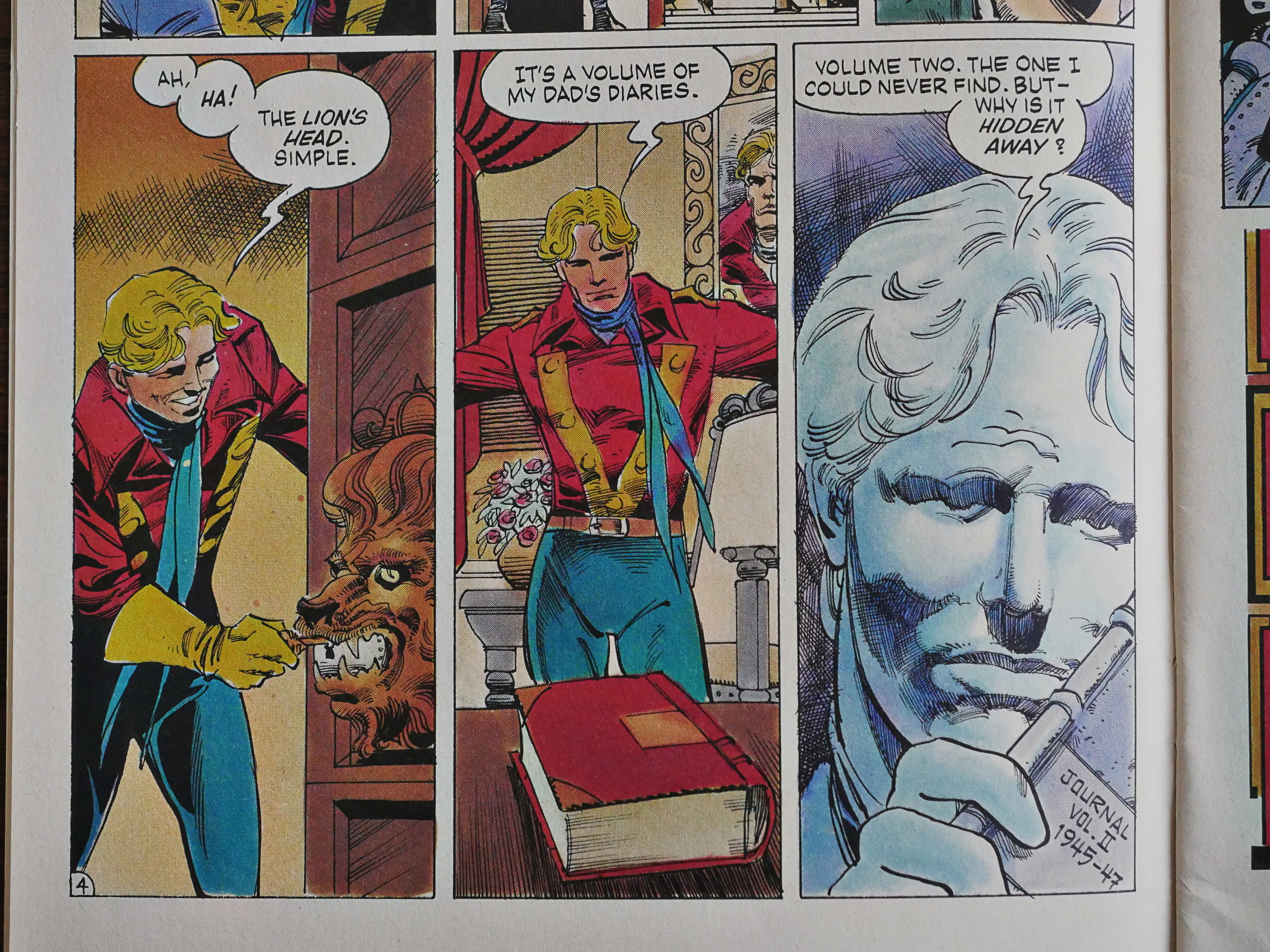
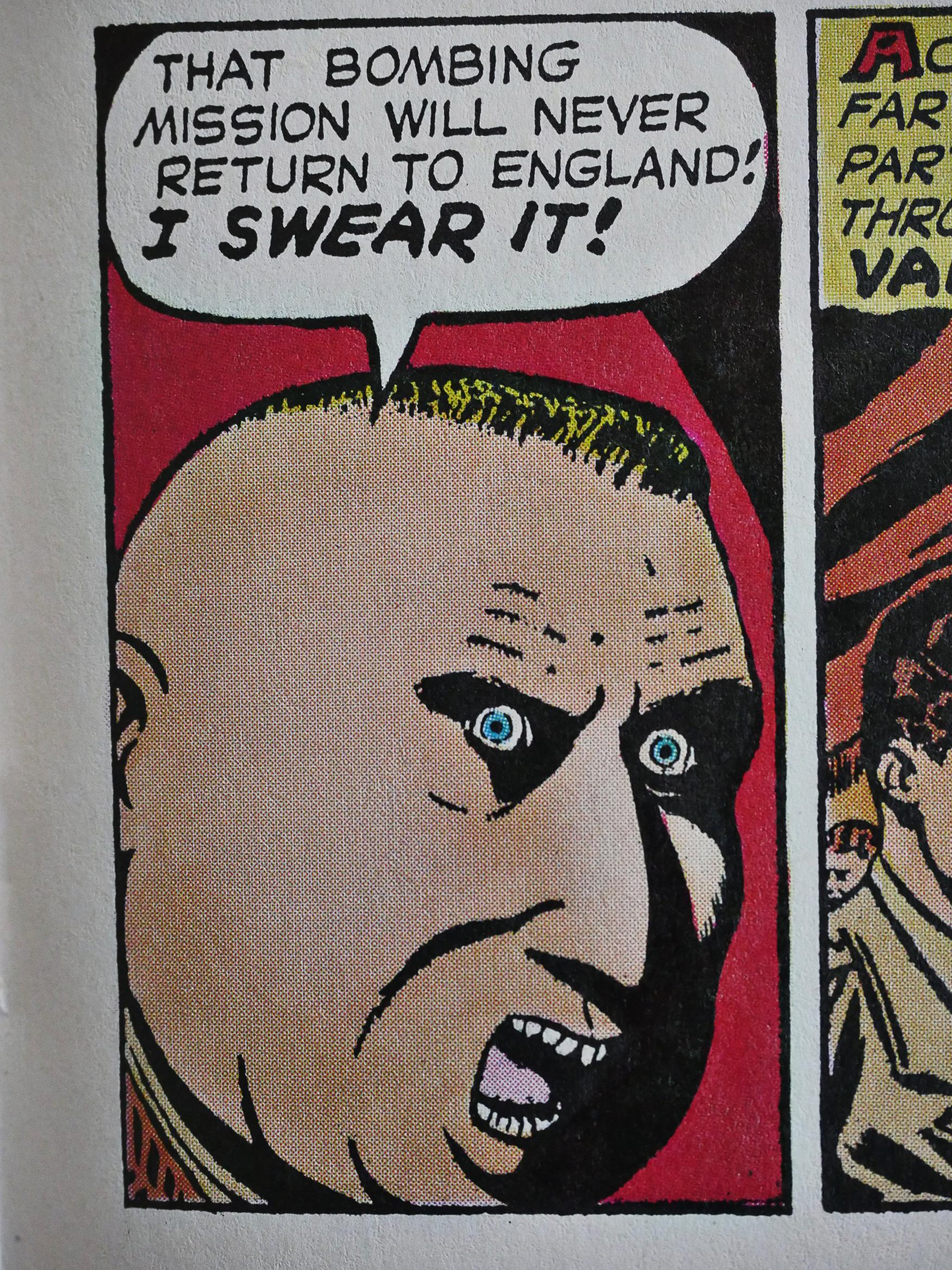
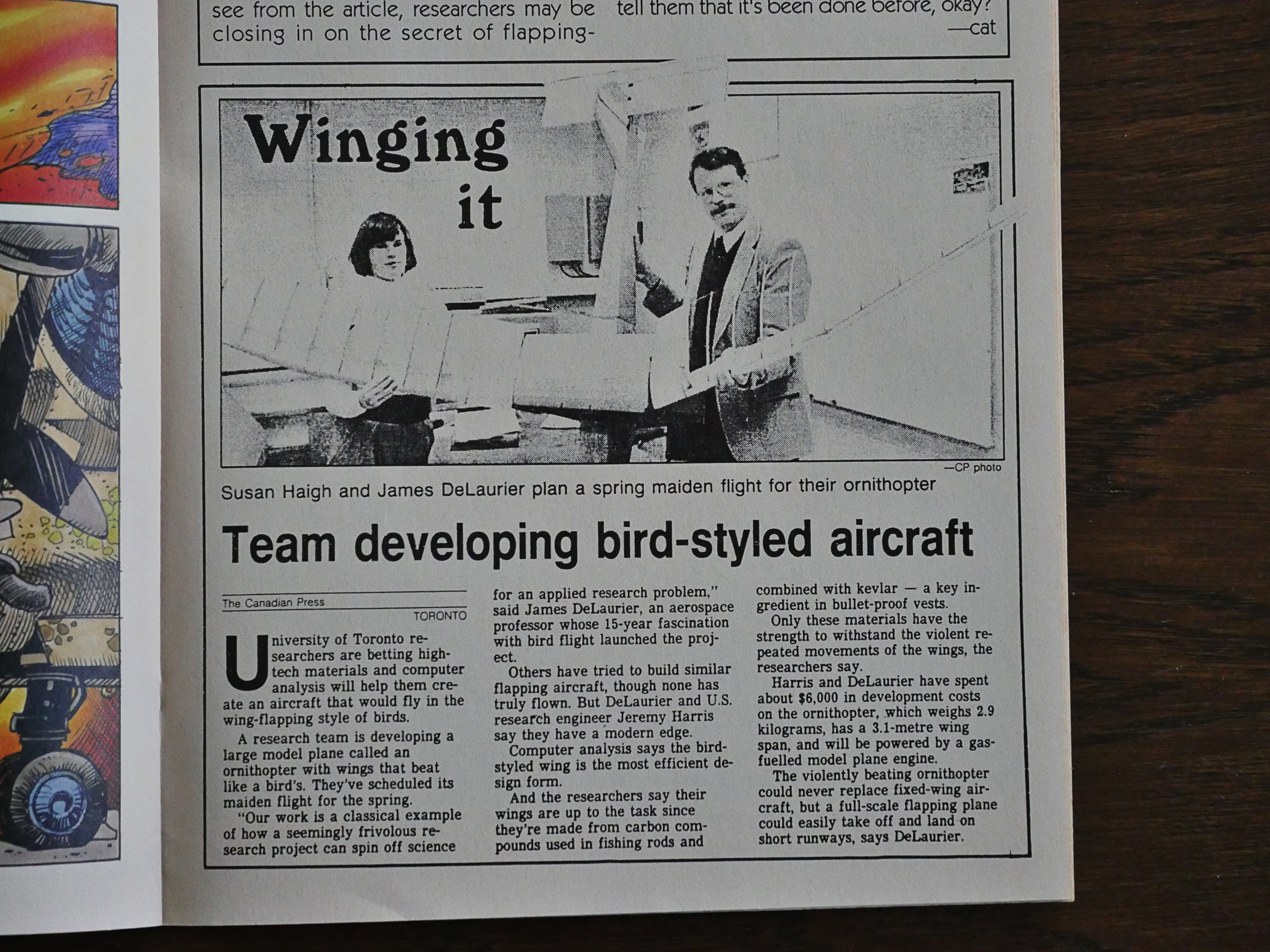
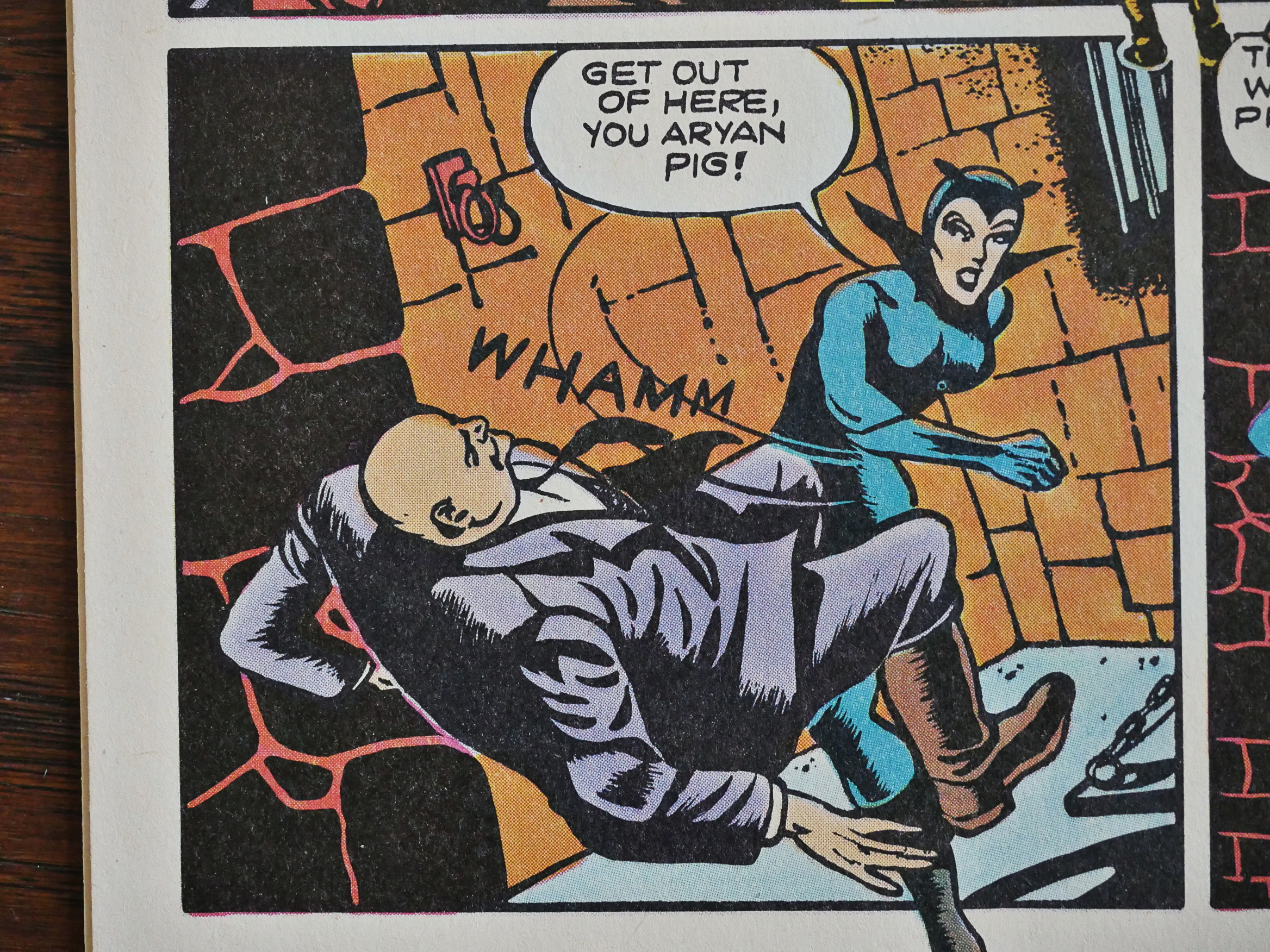
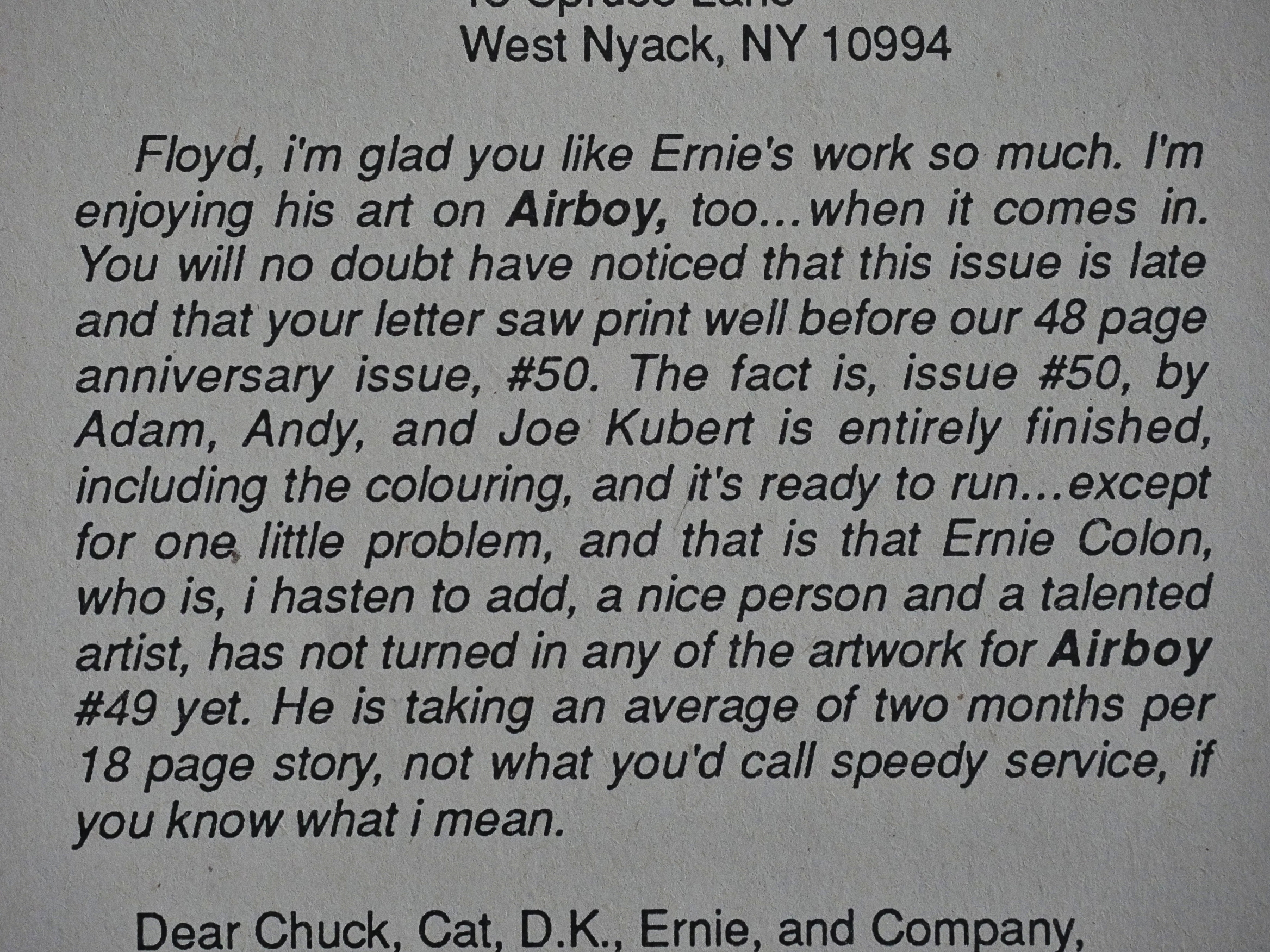
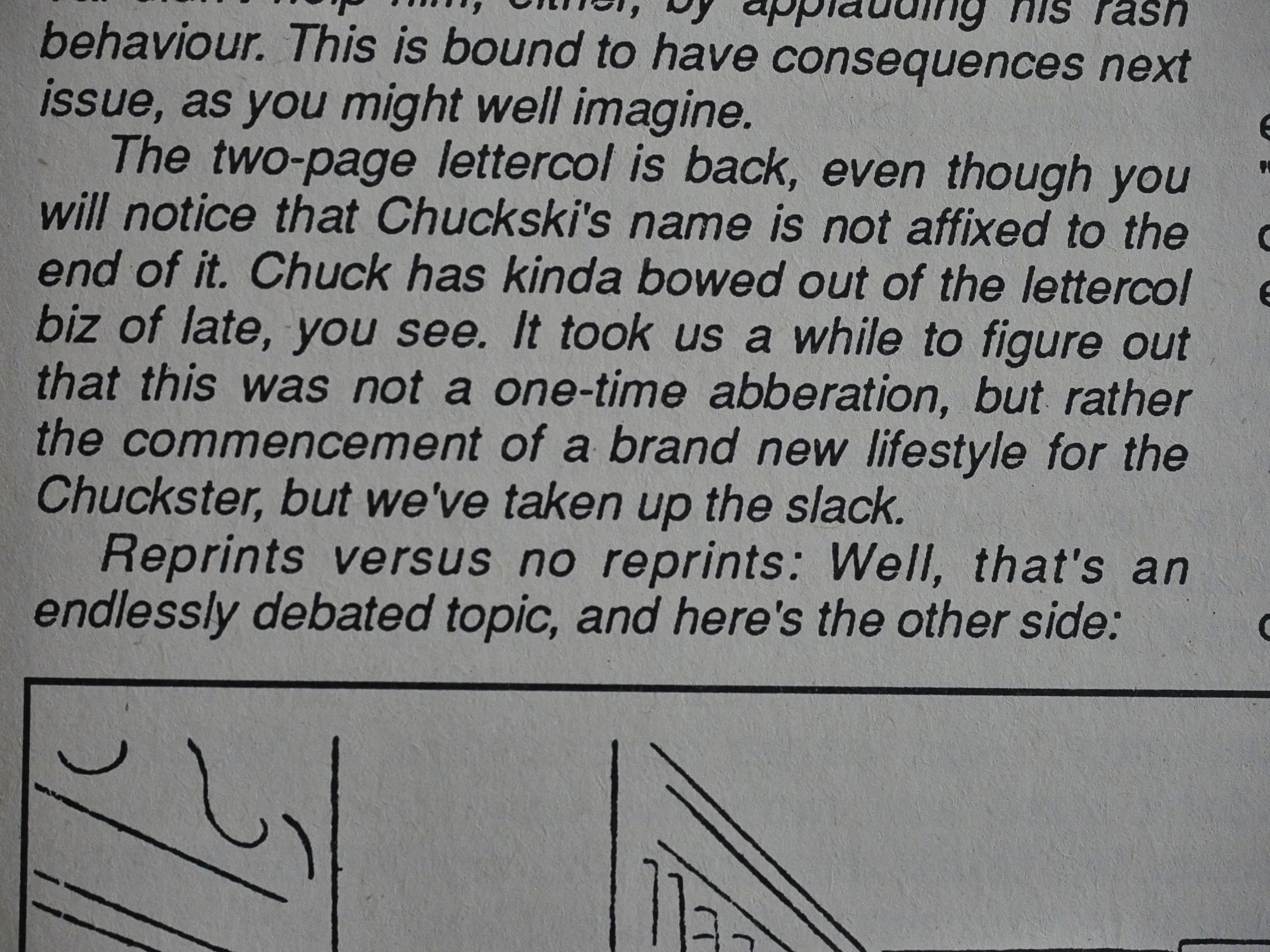
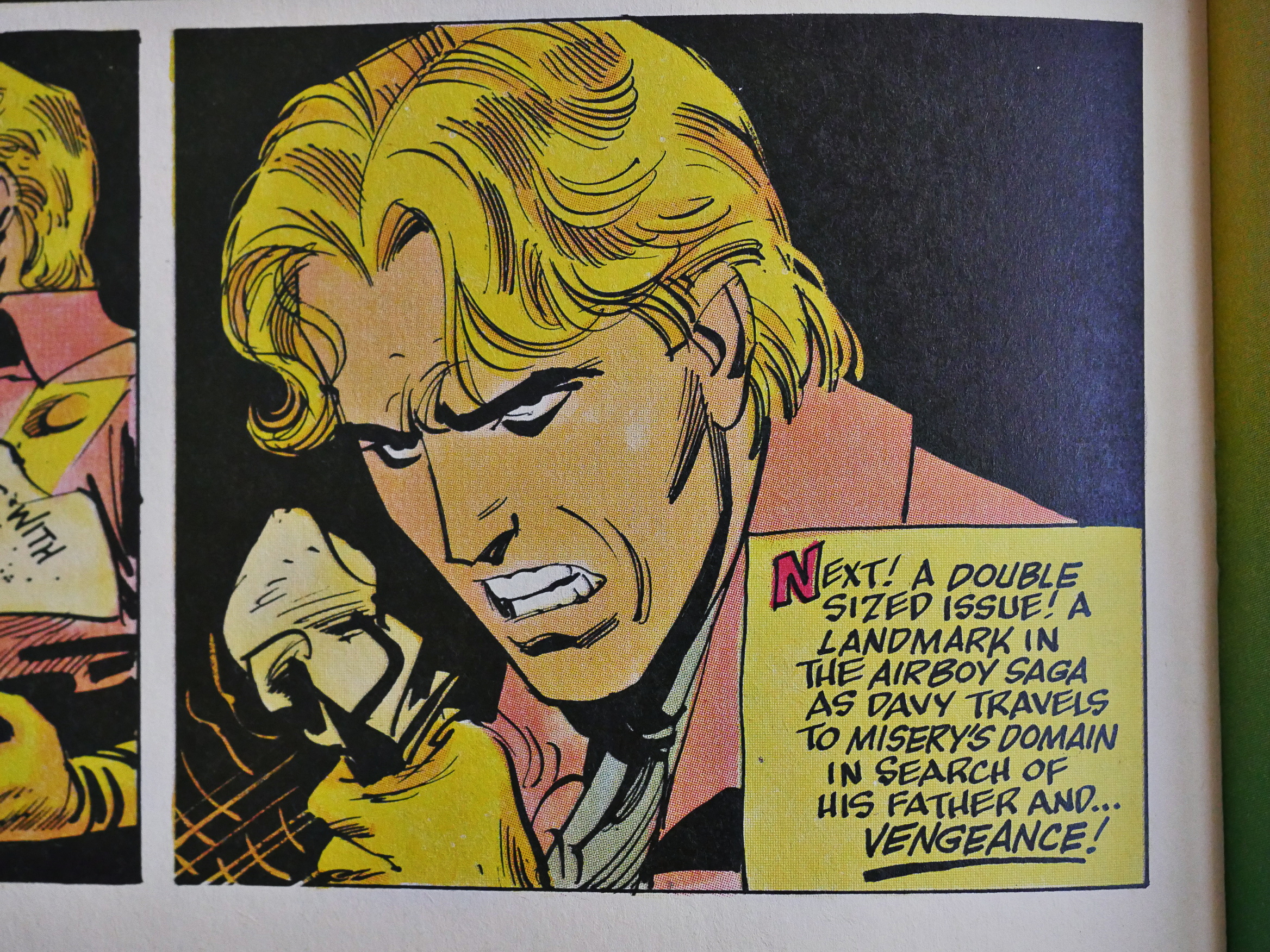
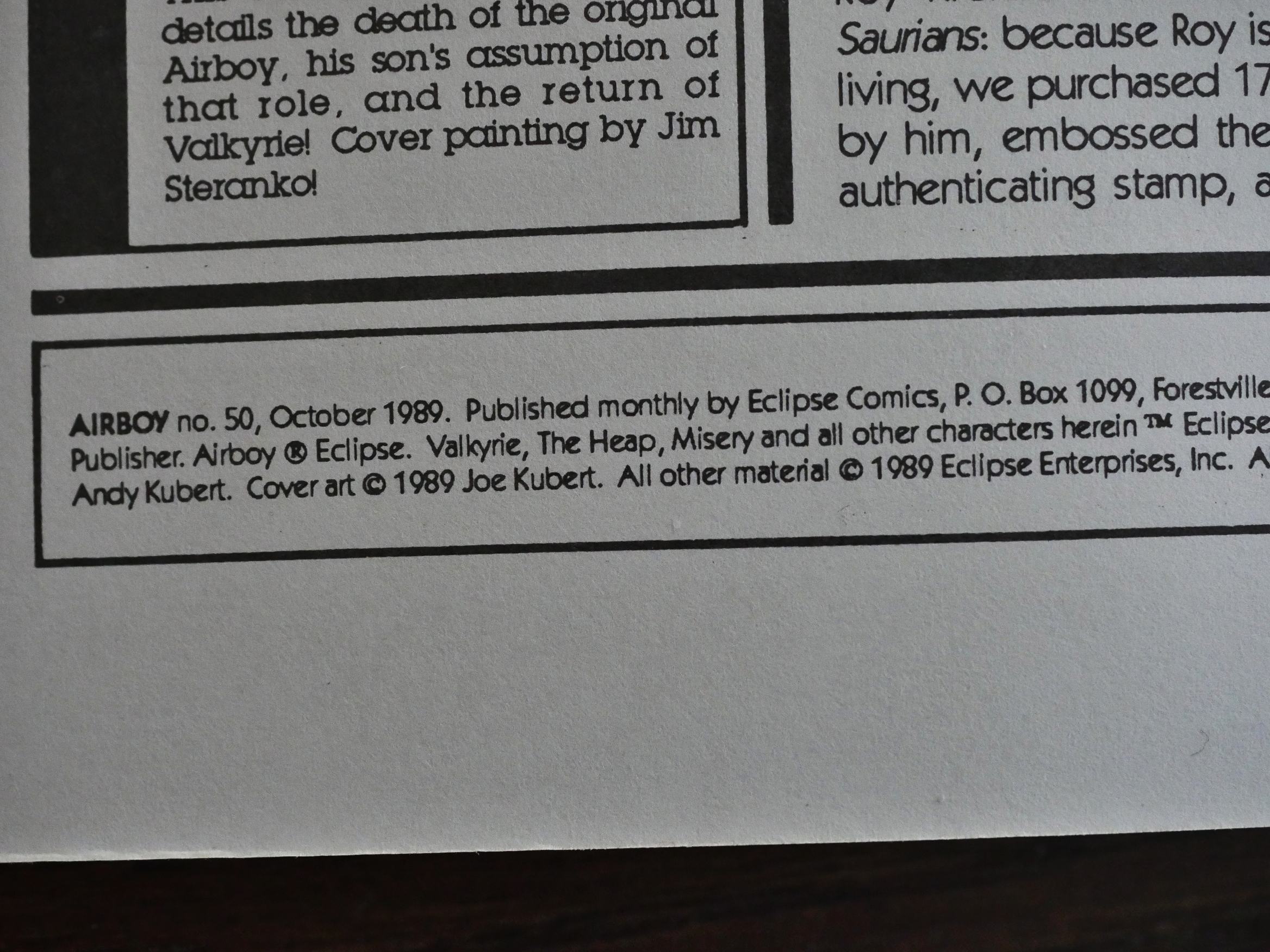
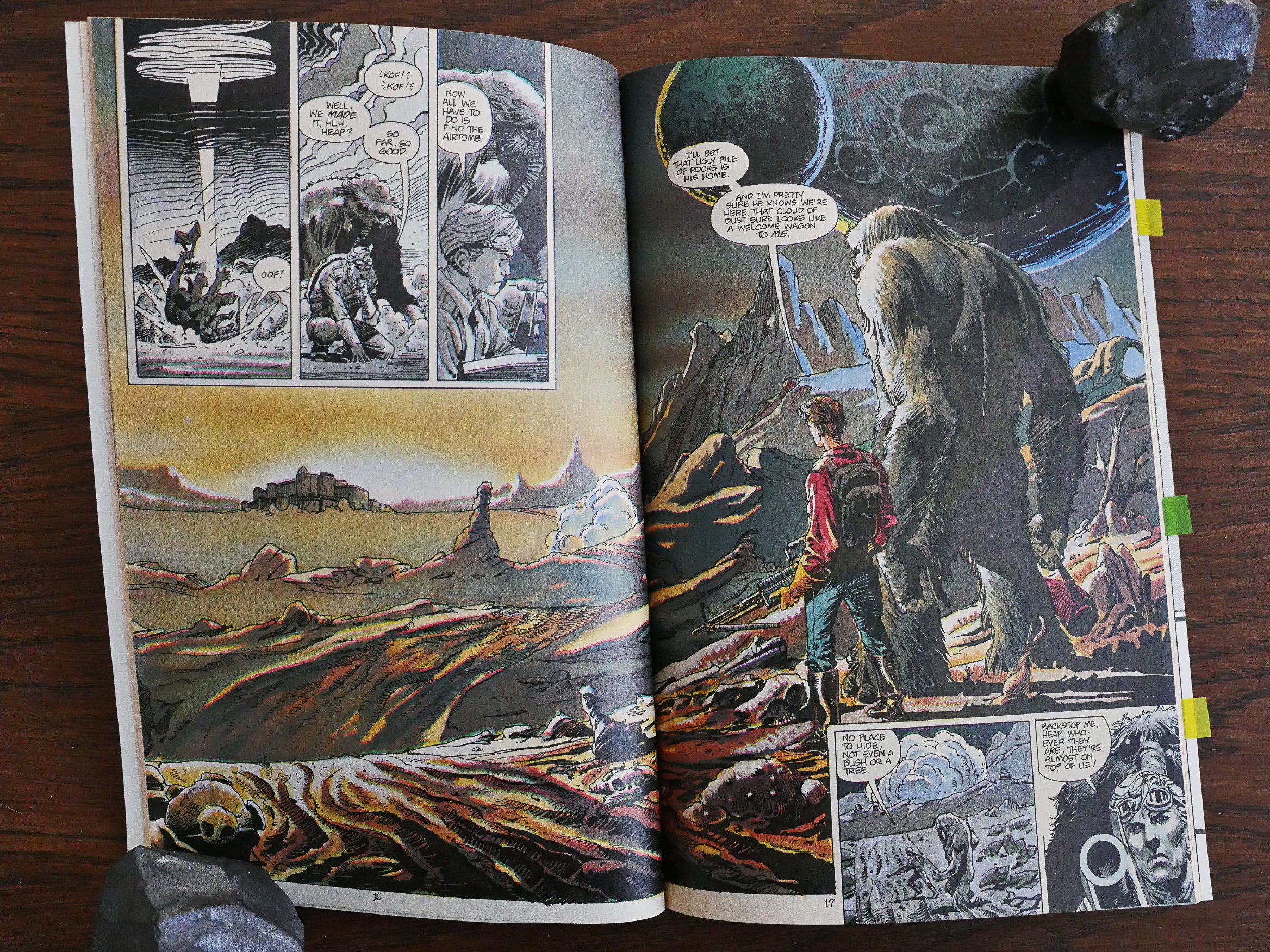
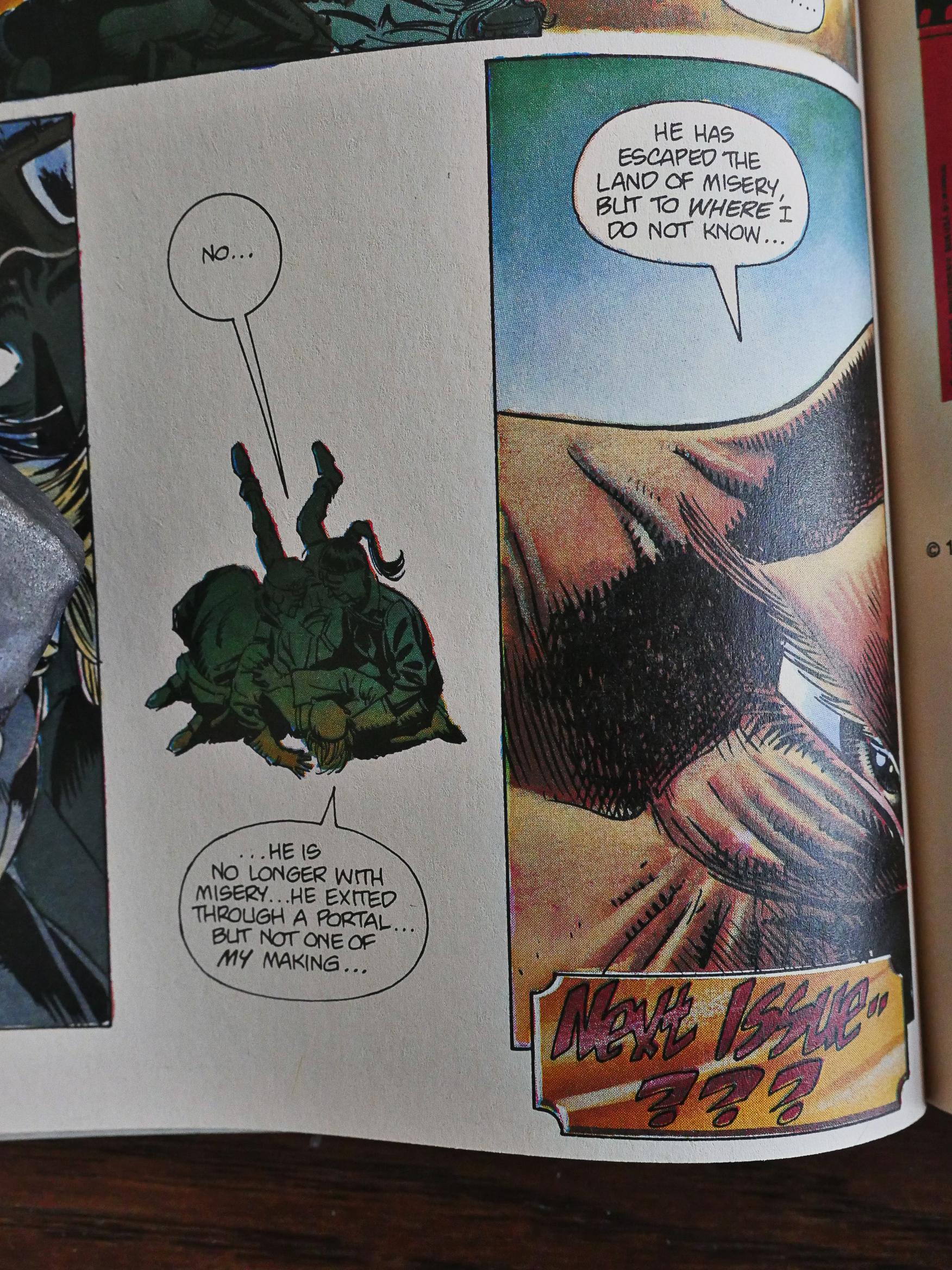
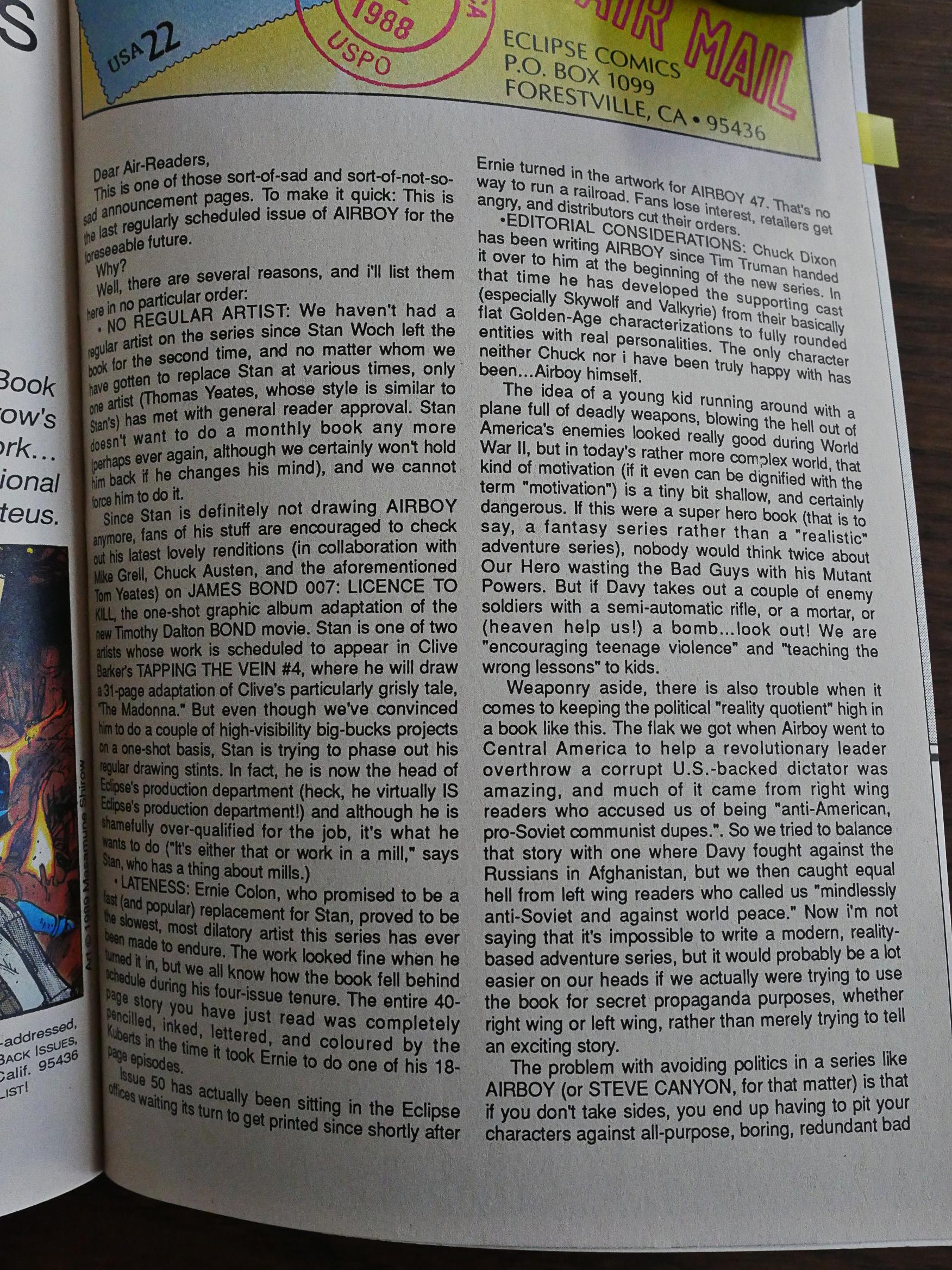
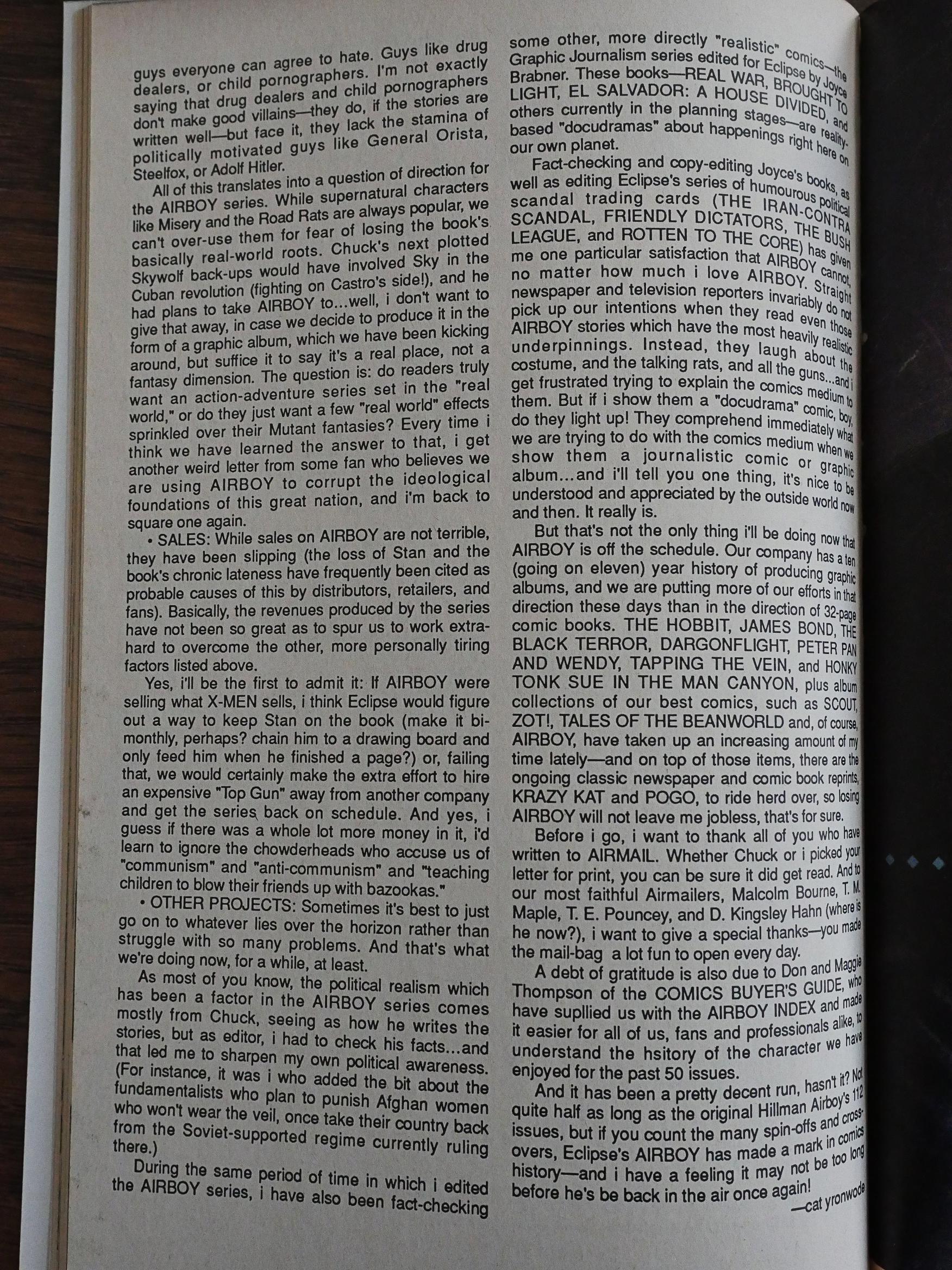
Super-Lame! You just gave me the idea for a new hero!
Probably the most thoughtful and thorough analysis of the series. Thank you for the analysis and entertaining blog article!
cat yronwode was notorious for throwing creative people under the bus, while ignoring that said creative people were slow turning in work because Eclipse was slow in paying them. Eclipse suffered major financial downturn when they loss the bulk of their backstock in the Russian River flood. Back issue sales were a major cash cow for them, financing new books. they bounced a ton of checks, which led to a lot of their delays, as printers wouldn’t run their books without cash up front. Creators wouldn’t turn in work until Eclipse payed the balance owed them from previous work.
Dixon is very conservative and it shows more in his later writing, when he is not evened out by more liberal others. Truman was more of a socially liberal type, while yronwode was a leftover hippie. Eclipse had a rep, largely due to cat, for being pretty left of everyone; certainly the Big Two, but just as bad about editorial interference and politics, just as bad as the Shooter regime at Marvel or some of the factions at DC.
For the Reagan Era, Airboy is pretty Center Left, but hardly Far Left; what drew the creators was a chance to do pulp storytelling, when the Big Two had abandoned such things. Airboy is a mix of horror and adventure, as were many of the 1940s books, which is what attracted people to them. Hillman’s output was rather good, for the 40s and Biro wasn’t that prominent in it, beyond the initial stages. Airboy and Valkyrie were largely derivative of Milton Caniff’s Terry & The Pirates , as Valkyrie was one of a long line of Dragon Lady wannabes.
I tended to prefer the Skywolf back-up stories, as they explored post-War US history and foreign policy far better than most textbooks, including the overthrow of the democratically elected Arbenz government in Guatemala (and the Mosadeg government in Iran), the politics of the Korean War, French Indochina, the number of returned veterans who had trouble assimilating to civilian life, as well as Sky Wolf’s father, who flew with Pancho Villa, highlighting America’s involvement in the Zapata revolt in Mexico. Lot of good history in there.
I greatly enjoyed your thorough review of the Airboy series. I haven’t reread my collection in quite a while, so what really stood out to me was how much *less* conservative/right-wing Chuck Dixon came across in this book than in his current output. Him being called a communist back in the day is pretty funny, given that he’s writing graphic novels for straight-up white supremacists these days (Vox Day).
Good grief, the irony of Chuck Dixon of all people being accused of being a communist.
Come to think of it, maybe that’s what finally turned him into the kook he is now. “I’ll show those damn letter writers… as God is my witness, no one will EVER be right of me again!”